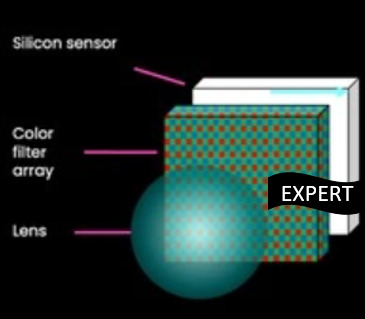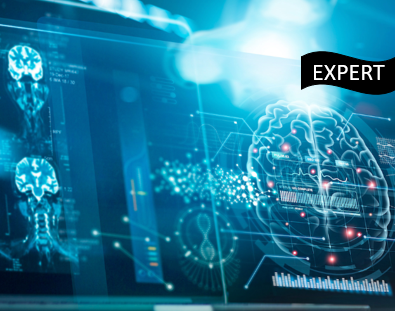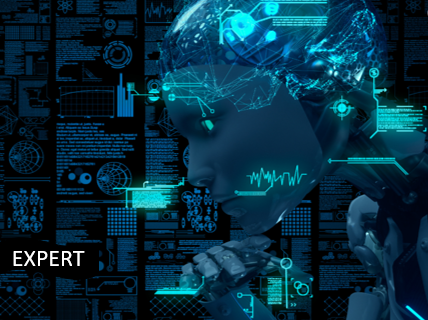Our latest selection of the best AI articles for Experts
Updated every Thursday
-
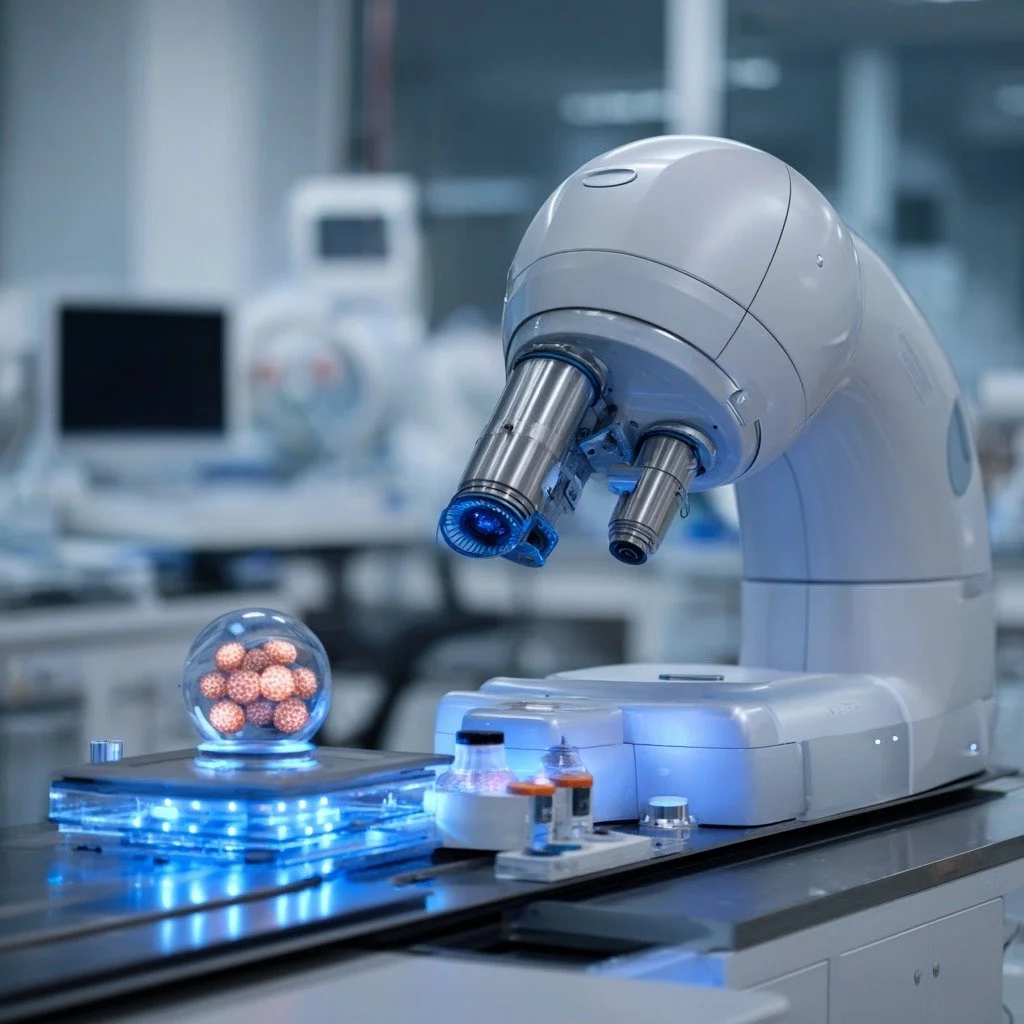
Artificial intelligence in cancer: applications, challenges, and future perspectives
This review explores how artificial intelligence is transforming cancer research and clinical care across diagnosis, treatment, surveillance, and drug discovery. It details AI’s use in imaging, genomics, and pathology to improve early detection, personalize therapies, and accelerate drug design. The paper also examines ethical, regulatory, and technical challenges—such as data privacy, bias, and validation—and highlights the need for diverse datasets, explainable models, and robust governance. Ultimately, it envisions AI as a powerful tool to advance precision oncology and improve patient outcomes, not as a replacement for clinicians.
Cillian H. Cheng & Su-sheng Shi - 30 Octover 2025 - Article in English
-

Machine learning in biological research: key algorithms, applications, and future directions
This review explores how machine learning (ML) is transforming biological research by analyzing complex data across genomics, ecology, medicine, and agriculture. It focuses on four key algorithms—linear regression, random forest, gradient boosting, and support vector machines—highlighting their applications in disease prediction, phylogenomics, and protein modeling. The article discusses challenges such as data quality, interpretability, and overfitting, emphasizing the need for interdisciplinary collaboration and integration of domain knowledge. It concludes that future progress lies in combining ML with deep learning and ethical data practices to advance biological discovery.
Md Nafis Ul Alam, Kiran Basava - 29 October 2025 - Article in English
-

How Deep Learning Models Predict Customer Lifetime Value
This article explains how deep learning raises the accuracy of Customer Lifetime Value (CLV) predictions and turns them into actionable marketing wins. It contrasts traditional, probabilistic, and classic ML methods with DNNs, RNNs, and especially LSTMs that capture temporal and sequential customer behavior. You’ll learn data needs (10k+ customers, 12+ months), key features (RFM, temporal, behavioral, channel), and a step-by-step pipeline from time-aware splits to training, validation, and deployment. It shows how CLV fuels Meta Ads: value-based lookalikes, budget/bid optimization, retention, and ROI tracking. It also pitches Madgicx’s turnkey LSTM CLV solution.
Annette Nyembe - 21 October 2025 - Article in English
-
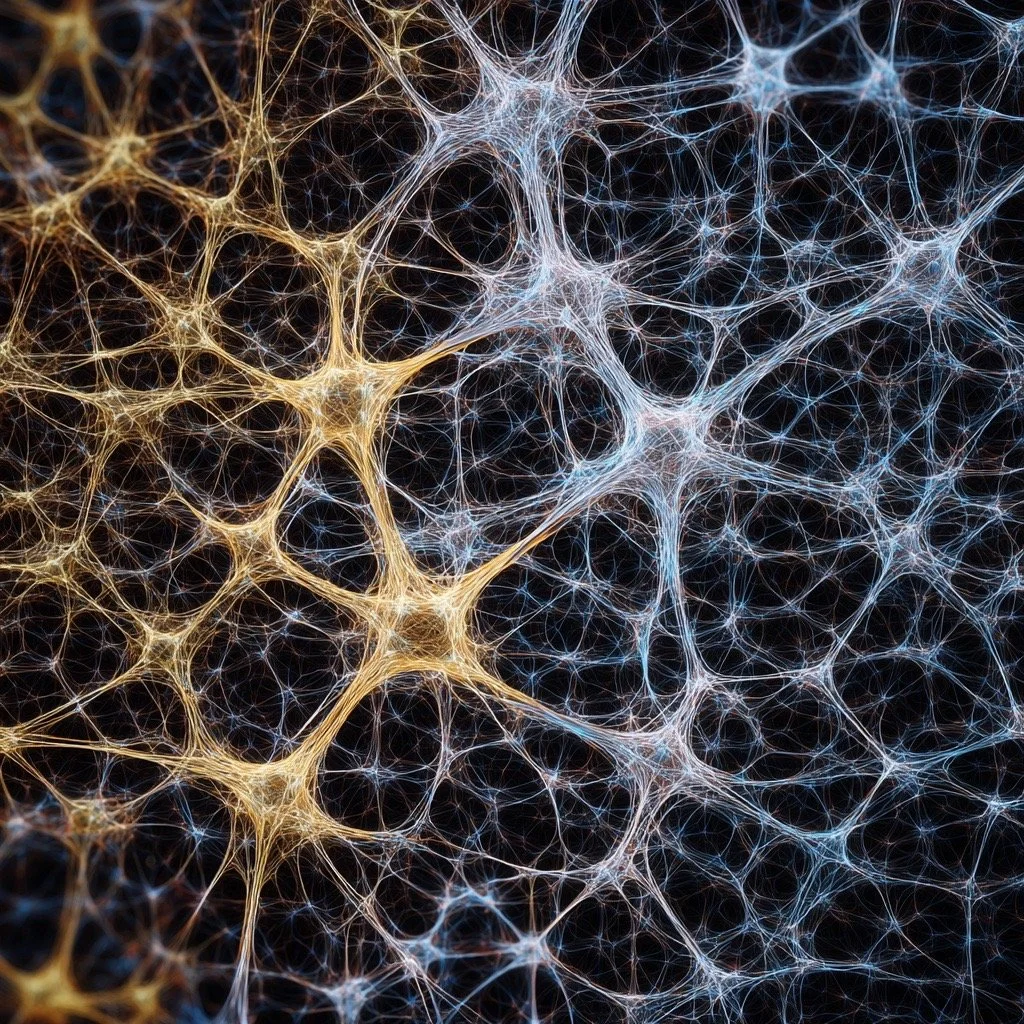
Flexible Framework Enables Structural Plasticity in GPU-Accelerated Sparse Spiking Neural Networks for Optimal Resource Usage
The article “Flexible Framework Enables Structural Plasticity in GPU-Accelerated Sparse Spiking Neural Networks for Optimal Resource Usage” presents new research from the University of Sussex and Jülich Research Centre on improving the efficiency of brain-inspired AI models. The team developed a GPU-accelerated framework within the GeNN simulator to enable structural plasticity—the dynamic creation and removal of neural connections—mimicking biological learning. Using a novel ragged matrix data structure and parallel CUDA operations, the framework supports sparse connectivity, cutting training time by up to 10× while maintaining accuracy. It enables real-time simulation of neural map formation, advancing neuromorphic computing and efficient spiking neural network (SNN) design.
ROHAIL T - 23 October 2025 - Article in English
-

Three case studies show AI in practice within geotechnical engineering
This article presents three case studies showing how AI is transforming geotechnical engineering through design, analysis, and data management. The AI Design Suite by A-squared uses deep learning to optimize foundation and retaining wall designs, cutting calculation time from hours to minutes. Gofer-META, developed by Arup, applies machine learning for real-time back analysis, refining soil parameters and improving construction decisions. Fuse and ProjectGPT, also by Arup, unify geotechnical data and use natural language processing to retrieve project insights instantly. Together, they show AI’s growing role in improving accuracy, efficiency, and collaboration in civil and ground engineering.
Ground Enginering - 23 September 2025 - Article in English
-
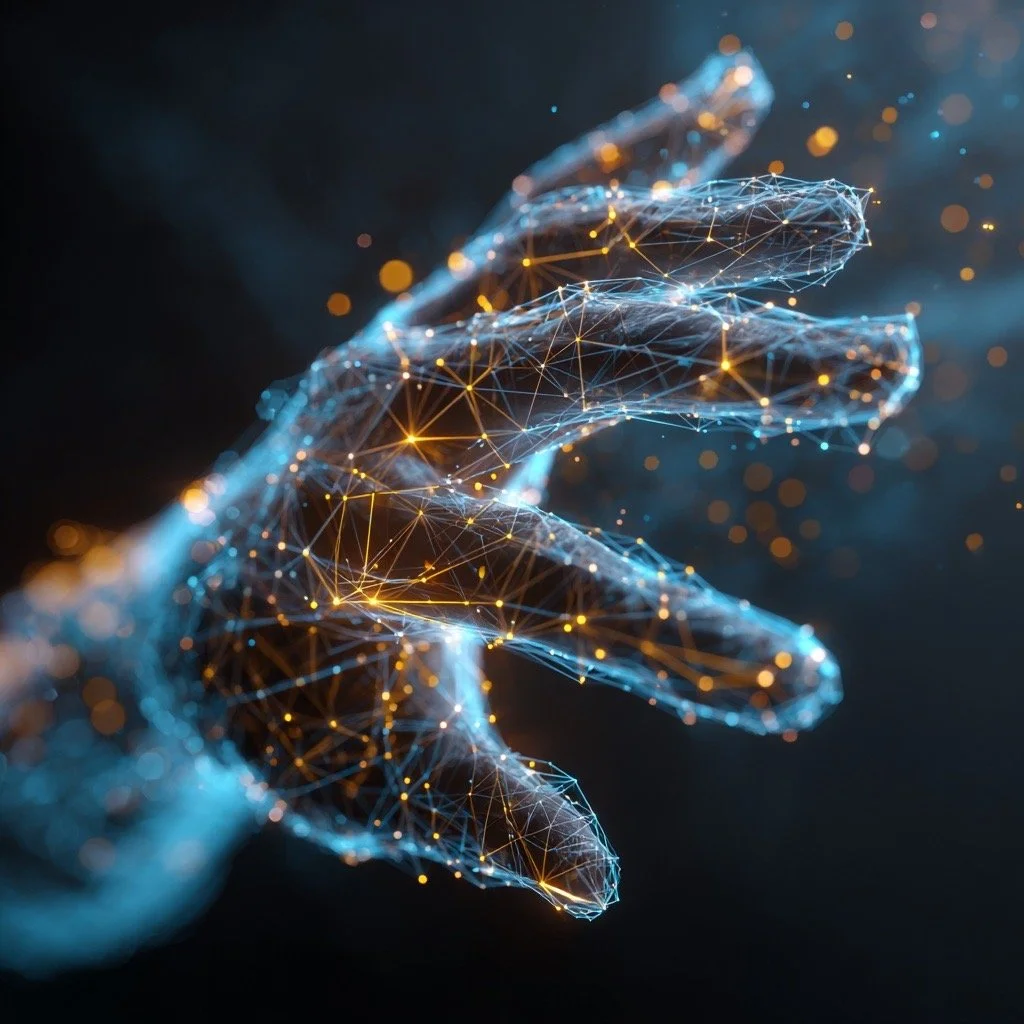
Smarter at the Edge: TI’s Vision for AI-Driven Connectivity
Podcast summary: Texas Instruments explains how edge AI + wireless connectivity are reshaping embedded systems across automotive and industrial markets. With on-chip AI accelerators and open-source tools (PyTorch, TVM) wrapped in TI’s Edge AI Studio, more inference moves from cloud to device—cutting latency, power, and privacy risk. Use cases include car access (Bluetooth channel sounding), in-cabin sensing, TPMS and robust BMS links, plus predictive maintenance via vibration/audio analytics. TI stresses standards & partnerships with OEMs and Tier-1s, and sees V2X complementing edge AI. Key takeaway: solve non-trivial classification at the edge, then scale through toolchains and ecosystem alignment.
Maurizio Di Paolo Emilio - 26 September 2025 - Article in English
-

Influence of machine learning technology on the development of electrochemical, optical, and image analysis-based methods for biomedical, food, and environmental analysis
This article reviews the impact of machine learning (ML) on biosensor development for biomedical, food, and environmental applications. It explains how ML enhances electrochemical, optical, and image-based sensors by improving sensitivity, reducing costs, and accelerating design from months to weeks. ML enables accurate prediction of probe–target interactions, optimization of sensor structures, and discovery of new compounds. The review also highlights applications in diagnostics, real-time monitoring, and personalized medicine while addressing challenges like limited datasets, interpretability of deep models, lab-to-clinic transfer, and scalability.
Mohammad Mahtab Alam - 21 September 2025 -Article in English
-
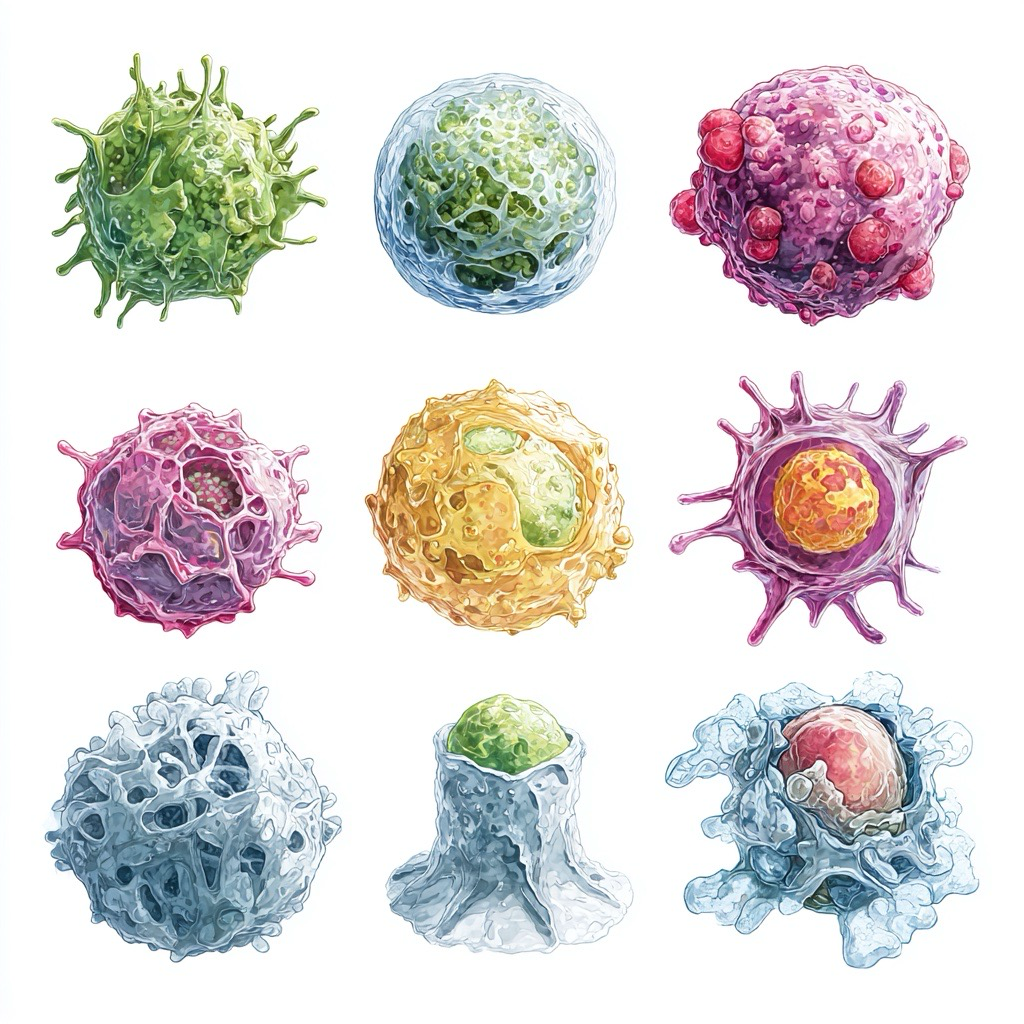
A dual-branch deep learning network for circulating tumor cells classification
This article presents a dual-branch deep learning framework for classifying circulating tumor cells (CTCs) in fluorescence images. CTCs, vital for prognosis and therapy monitoring, are rare and heterogeneous, making detection difficult. The proposed hybrid model integrates traditional image preprocessing with a dual-branch network: one branch extracts image features via ResNet18, while the other processes fluorescence attributes using an MLP. By fusing these features, the system achieved 97.05% accuracy, surpassing single-branch and conventional methods. Clinical trials on metastatic breast cancer patients confirmed its ability to match pathologists’ manual counting, enabling automated, reliable, and clinically applicable CTC identification for personalized therapy.
Chao Han - 24 September 2025 - Article in English
-

Edge AI Statistics and Facts By Market Size, Region, Trends And Insights (2025)
This article analyzes the rapid growth of the Edge AI market, valued at US$21.19 billion in 2024 and projected to reach US$143.06 billion by 2034 with a 21.04% CAGR. Edge AI enables processing directly on devices like sensors, phones, and machines, reducing latency, conserving bandwidth, enhancing privacy, and ensuring continuity even with weak connectivity. The piece highlights regional market shares (North America leading at 40%), the role of 5G in enabling real-time applications, and key industries like telecom, automotive, healthcare, and smart cities. It also covers hardware/software trends, major product launches (NVIDIA, Intel, Google), and adoption challenges, positioning Edge AI as central to digital transformation.
Priya Bhalla - 14 September 2025 - Article in English
-

When computing gets a brain
This article explores the rise of neuromorphic computing, a brain-inspired technology designed to overcome the limits of traditional von Neumann architecture. By mimicking neurons and synapses, neuromorphic chips integrate memory and computation, enabling massive parallelism, adaptability, and ultra-low power consumption. The technology promises breakthroughs in energy-efficient AI, real-time processing, edge computing, and brain-inspired algorithms. Companies like Intel, IBM, and institutions such as ETH Zurich are leading advances with experimental chips and sensors. Though scaling challenges remain, neuromorphic computing is set to revolutionize AI, robotics, healthcare, and beyond by bringing brain-like efficiency to machines.
ELEONORA D'ADDATO - 15 September 2025 - Article in English
-

Pre-training enhanced physics-informed neural network with refinement mechanism for wind field reconstruction
This article presents a pre-training enhanced physics-informed neural network (PINN) with a diffusion-based refinement mechanism for reconstructing wind fields from sparse measurements. Traditional methods like LiDAR provide limited data, and PINNs often struggle with slow training, poor convergence, and loss of fine-scale details. The proposed framework pre-trains PINNs on diverse wind field datasets to improve initialization, efficiency, and accuracy. A diffusion model then refines outputs, correcting errors and restoring high-frequency flow details. Experiments show improved robustness, accuracy, and stability across varying wind conditions, noise levels, and measurement setups.
Yuhang Zhao - September 2025 - Article in English
-
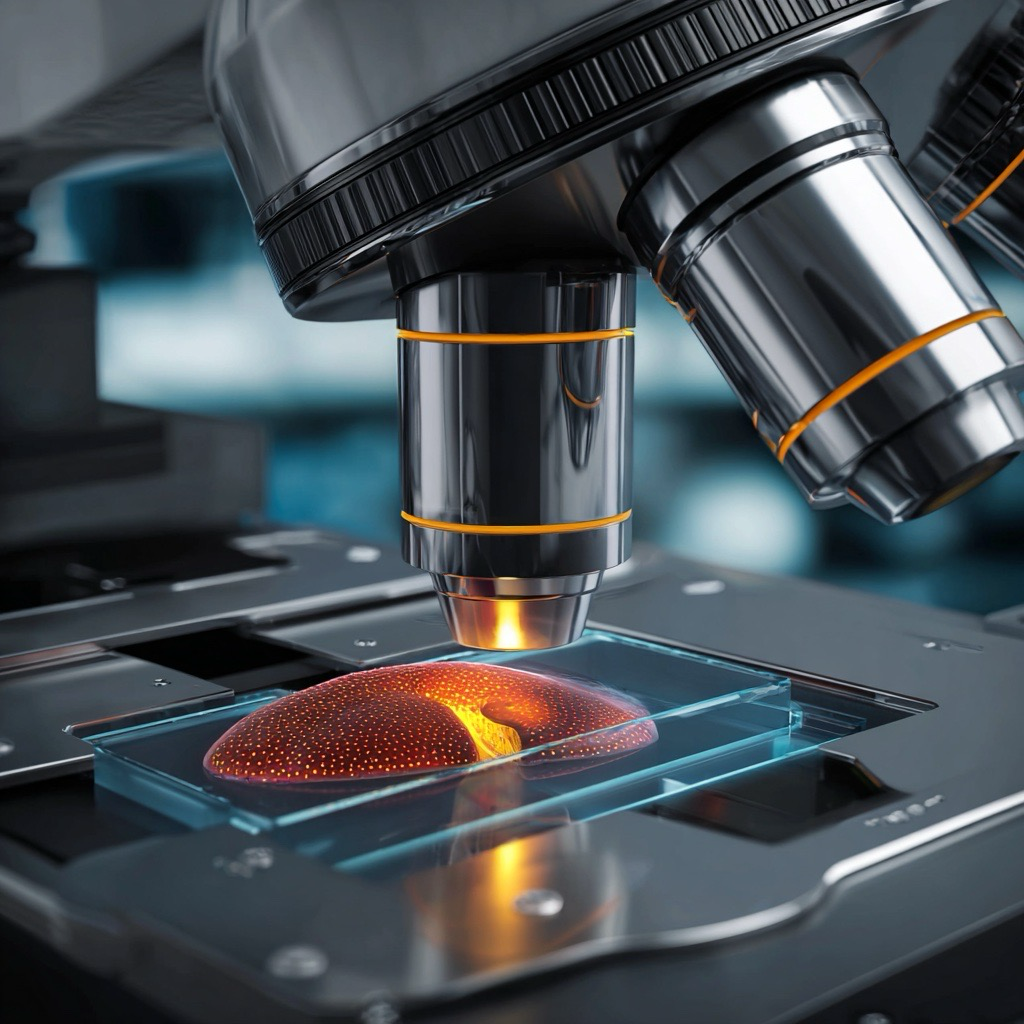
MPVT+: a noise-robust training framework for automatic liver tumor segmentation with noisy labels
The article introduces MPVT+, a deep learning framework designed to improve automatic liver tumor segmentation from CT scans with noisy annotations. The model integrates two mechanisms: a Noise-Adaptive Adapter that identifies and rebalances unreliable labels, and a Multi-Stage Perturbation & Variable Teacher (MPVT) strategy that enforces consistency learning through multiple perturbations and diverse teachers. Evaluated on 739 datasets, MPVT+ outperformed conventional methods, boosting Dice Similarity Coefficient (DSC) accuracy from 75.1% to 80.3%. This work demonstrates that robust models can be trained effectively without requiring perfectly clean annotations.
Xuan Cheng - 10 September 2025 - Article in English
-

AI Governance and Risk in Securing Software Supply Chains
The article explains that as AI becomes woven into software development, it introduces new risks across the software supply chain that demand governance. Key risks include opaque training data (potential bias, malicious or copyrighted content), non-deterministic outputs, and vulnerabilities in open-source components. To mitigate these risks, the author argues organizations must gain visibility — know what models are in use, where they came from, their dependencies and licensing. To respond, the piece promotes tools such as the AI Bill of Materials (AIBOM)—a descriptive inventory of an AI model’s datasets, components, provenance—modeled after the Software Bill of Materials.
Aaron Linskens - 2 September 2025 - Article in English
-

Empowering air quality research with secure, ML-driven predictive analytics
This article presents a machine learning–driven solution for addressing gaps in air quality data, particularly PM2.5 measurements in Africa where unstable power and limited maintenance hinder sensor reliability. Using Amazon SageMaker Canvas, AWS Lambda, and Step Functions, the solution imputes missing data and predicts pollution levels, ensuring continuous, accurate monitoring without requiring ML expertise. The workflow automates data retrieval, transformation, and prediction while maintaining strong security and compliance practices. By enabling researchers and health officials to generate high-performing forecasts with minimal technical overhead, this approach supports timely interventions and evidence-based policy for combating air pollution.
Nehal Sangoi - 28 August 2025 - Article in English
-

Cloud security and authentication vulnerabilities in SOAP protocol: addressing XML-based attacks
The article examines vulnerabilities in SOAP-based cloud services caused by XML attacks such as Signature Wrapping, XXE, injection, replay, and DDoS. To address them, it proposes a formal verification framework using TulaFale and ProVerif to model and test SOAP authentication with WS-Security (UsernameToken, Timestamp, X.509, digital signatures). Experiments in a simulated client–server setup show the method detects attacks, ensures authentication, integrity, and confidentiality, while staying WS-Security compliant. However, scalability is limited with complex scenarios. The study highlights formal verification as key to securing SOAP services against XML threats.
Mozamel M. Saeed - September 2025 - Article in English
-

Why AI Isn’t Ready to Be a Real Coder
This article examines the evolution and limits of AI coding tools, highlighting both their strengths—such as code completion, debugging, and documentation—and their shortcomings in handling complex, large-scale programming tasks. Researchers from Cornell, MIT, Stanford, and UC Berkeley stress that AI lacks true collaboration, long-term reasoning, and intent inference, often leading to errors or hallucinations. Future progress lies in agentic AI, evolutionary algorithms, better interfaces, and tools that capture developer intent. Yet, trust, human oversight, and collaboration remain essential as AI advances toward becoming a “real coder.”
RINA DIANE CABALLAR - 26 August 2025 - Article in English
-

The Evolution of Deep Learning - From Neural Networks to Modern AI Breakthroughs
This article traces the evolution of deep learning from early neural network concepts like the Perceptron and backpropagation to modern breakthroughs such as CNNs, GANs, and transformer-based architectures like BERT and GPT-3. It highlights key milestones, technical innovations, and their transformative impact across industries including NLP, computer vision, healthcare, autonomous systems, and content creation. The piece also explores ethical considerations, future trends like model compression, federated learning, and quantum AI, and stresses the need for transparency, efficiency, and responsible AI development.
Valeriu Crudu - 27 July 2025 - Article in English
-
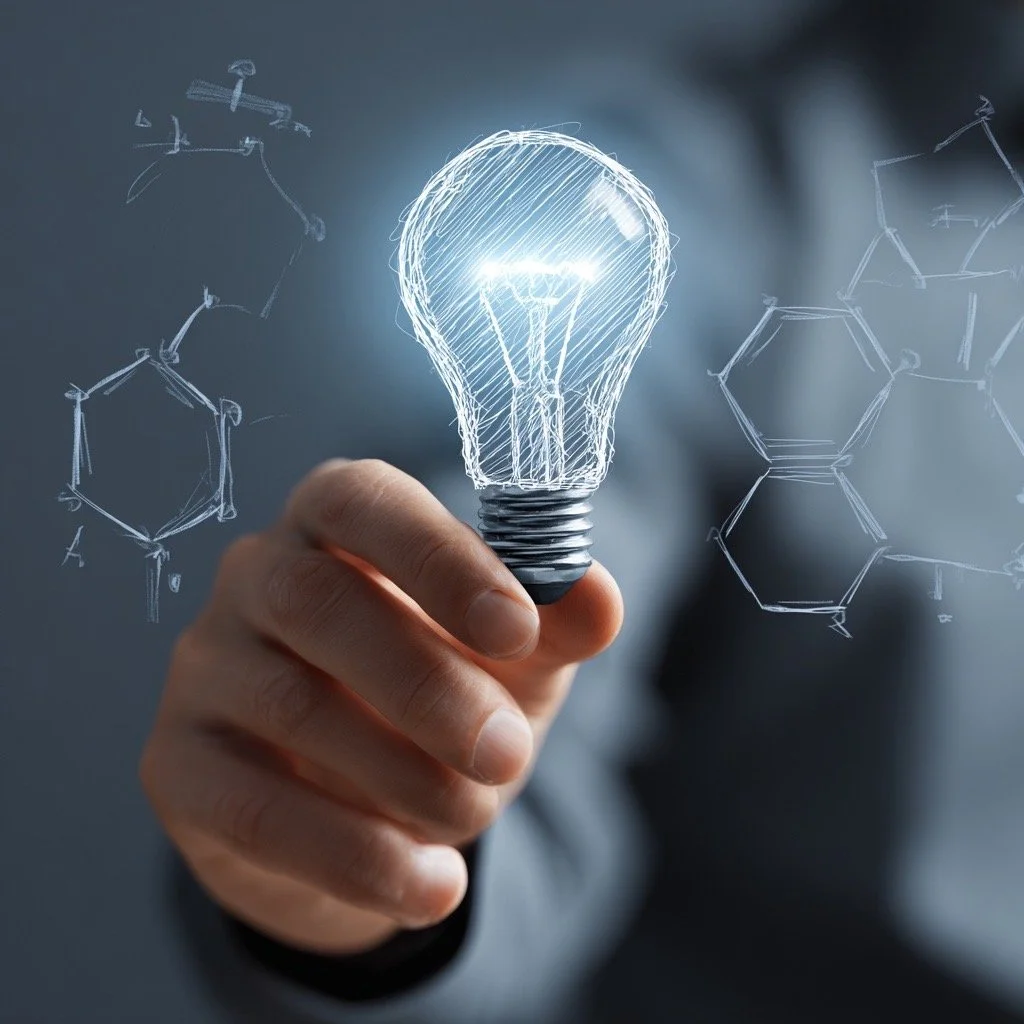
Strategic innovations and future directions in deep learning for engineering applications: a systematic literature review
This article presents a systematic literature review of deep learning (DL) applications in engineering from 2014–2024, analyzing 101 peer-reviewed studies. It identifies four main themes: strategic methodologies for model development, practical implementation and evaluation, efficiency optimization, and innovative applications such as 6G networks and cybersecurity. Civil, electrical, and mechanical engineering dominate the research, with China and the U.S. leading contributions. Key findings highlight DL’s transformative role in predictive maintenance, structural monitoring, and automation, but also reveal gaps in scalability, interpretability, and real-world adoption. The review emphasizes the need for interdisciplinary collaboration, standardized benchmarks, and future exploration of explainable AI, federated learning, and quantum integration.
Arianna G. Tobias - 12 August 2025 - Article in English
-
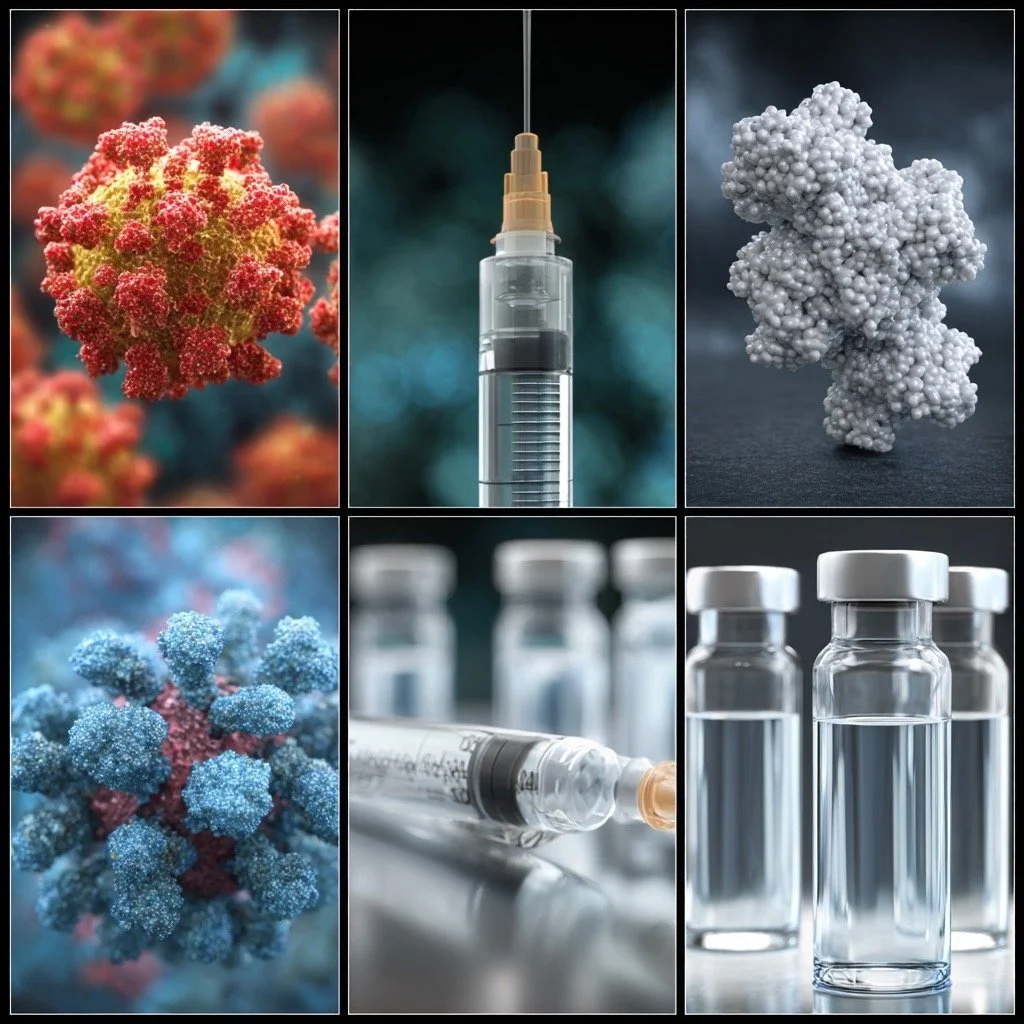
AI model speeds up the development of RNA vaccines
MIT researchers have developed an AI-driven model called COMET to design more efficient lipid nanoparticles (LNPs) for delivering RNA vaccines and therapies. Unlike traditional trial-and-error methods, COMET analyzes thousands of formulations to predict optimal combinations of nanoparticle components. Inspired by transformer architectures (like ChatGPT), the model learns how chemical ingredients interact to improve RNA delivery. Tests showed COMET-generated LNPs outperformed existing ones, even those used commercially. This approach could accelerate the development of RNA vaccines and therapies for diseases such as obesity, diabetes, and cancer, while enabling more stable, cell-specific delivery systems.
InnovationNewsNetwork - 15 August 2025 - Article in English
-

Hybrid Neural Network and Non-Equilibrium Dynamics Enhance Image Classification Accuracy
This article presents a novel hybrid approach combining classical neural networks with quantum reservoir computing to enhance image classification accuracy. By encoding image data into a quantum system and extracting features through its dynamic evolution, the method achieves superior performance on benchmarks like MNIST and Fashion-MNIST—up to 2.5% higher than classical models. This hybrid system leverages quantum principles like superposition and entanglement to create richer feature spaces, improving learning efficiency. Though currently simulated on classical hardware, the goal is real-world deployment on quantum processors, opening new possibilities for quantum-enhanced AI in various domains.
QUANTUM NEWS - 21 JUly 2025 - Article in English
-
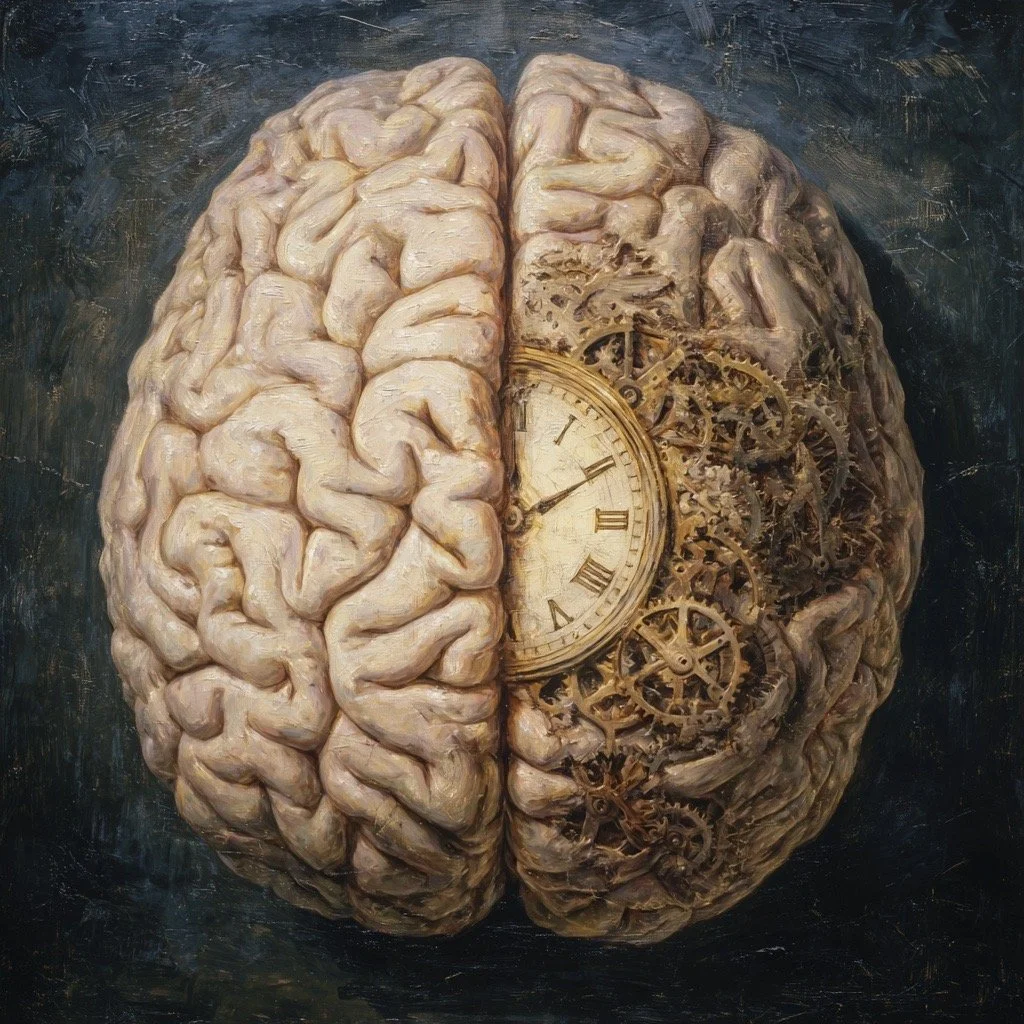
Lifespan brain age prediction based on multiple EEG oscillatory features and sparse group lasso
This study presents a novel framework, NEOBA, for predicting brain age (BA) across the human lifespan using EEG-based neural oscillatory features (OSFs) and inter-feature dependency coefficients (ODC) derived via sparse group lasso. Using a large multinational EEG dataset (MNCS), the authors analyze age-related changes in aperiodic and periodic EEG components, power ratios, and relative power. They integrate these features into a fully connected neural network (FCNN), enhancing interpretability with Layerwise Relevance Propagation (LRP). The NEOBA model outperforms existing methods in accuracy and interpretability, offering a reliable, low-cost approach for brain aging analysis and potential early diagnosis of neurodegenerative conditions.
Shiang Hu - 22 July 2025 - Article in English
-

ECO-FOCUS: Integrating computer vision and machine learning for personalized comfort prediction and adaptive HVAC control in office buildings
This article presents ECO-FOCUS, a cost-effective, occupant-centric HVAC control framework for office buildings that integrates computer vision, environmental sensing, thermal modeling, and machine learning to optimize comfort and energy use. Using cameras and sensors, it detects occupancy and clothing insulation, predicts personalized thermal comfort by combining the PMV model with occupant feedback, and dynamically adjusts zonal HVAC settings. A case study showed up to 97% zone-level cooling savings and improved comfort, demonstrating ECO-FOCUS’s potential for sustainable, adaptive building operations.
Zhihao Ren - July 2025 - Article in English
-
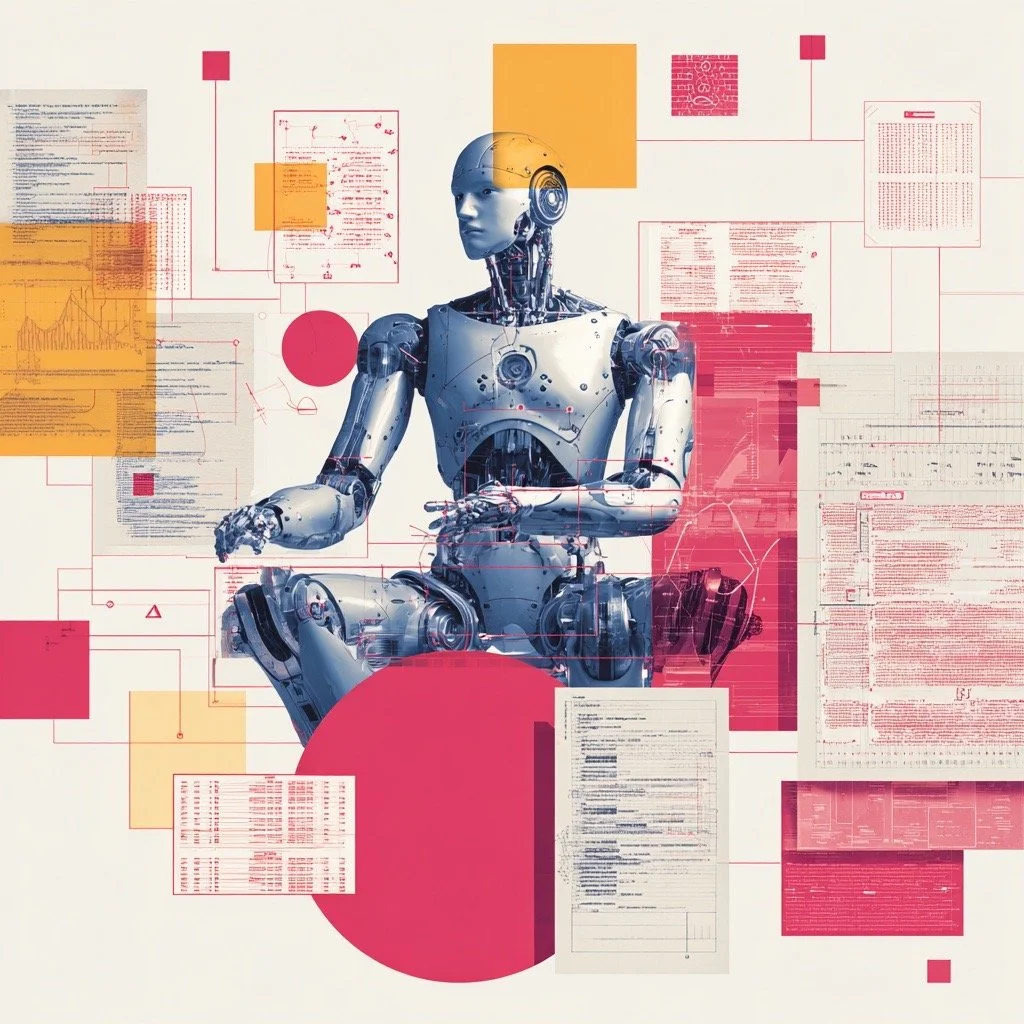
Intelligent document processing at scale with generative AI and Amazon Bedrock Data Automation
This article presents an end-to-end solution for intelligent document processing (IDP) using generative AI and Amazon Bedrock Data Automation. It showcases how to extract structured data from unstructured documents (PDFs, emails, Office files) at scale without complex prompt engineering or custom model training. The solution uses AWS services like Step Functions, Lambda, Textract, and Bedrock to automate workflows, with optional customization for specific needs. Two real-world examples—financial reports and customer emails—demonstrate its capabilities. It includes cost estimates, deployment instructions, and plans for future improvements in document size support and extraction precision.
Nikita Kozodoi - 11 July 2025 - Article in English
-

Why security is driving cloud repatriation of analytical databases in large enterprises
This article explains why large enterprises are increasingly repatriating analytical databases from the public cloud back to on-premise or hybrid environments. The main driver is enhanced security and data control, especially in regulated industries like finance, healthcare, and government. Cloud environments pose challenges with data sovereignty, encryption, forensics, and compliance. Repatriation helps organizations align their data architecture with governance, performance, and risk requirements. Tools like OpenText Analytics Database enable this shift by offering high performance, flexible deployment, and strong security features.
Mahima Kakkar - 17 July 2025 - Article in English
-

How AI could reshape the economics of the asset management industry
This article explores how AI is reshaping the economics of the asset management industry amid margin pressures, rising costs, and outdated tech stacks. Despite growing tech investments, many firms struggle to see productivity gains due to legacy systems and siloed approaches. AI offers a transformative opportunity—potentially cutting 25–40% of costs—by streamlining operations, enhancing client service, and improving risk and compliance. To unlock value, firms must pursue domain-wide transformation, revamp talent strategies, modernize operating models, retain control over tech roadmaps, and embed AI into workflows through cultural change and strong governance.
Jonathan Godsall - 16 July 2025 - Article in English
-

Build and deploy AI inference workflows with new enhancements to the Amazon SageMaker Python SDK
This article introduces new enhancements to the Amazon SageMaker Python SDK, enabling developers to build and deploy advanced AI inference workflows more efficiently. These workflows allow multiple models to operate in a coordinated sequence, ideal for complex applications like generative AI and search ranking. The SDK abstracts infrastructure complexity, supports custom orchestration logic, simplifies deployment, and enables flexible invocation. Amazon Search is exploring this feature to improve search results across product categories. Overall, the update empowers developers to create scalable, modular, and high-performing AI systems with ease using Python code.
Melanie Li - 30 June 2025 - Article in English
-

Future-proofing drug development with GenAI
This article discusses how generative AI (GenAI), combined with expert reasoning, is transforming drug development by enabling early insight into an asset's long-term potential—even during preclinical stages. By leveraging LLMs, AI models, and real-world data, developers can identify strategic opportunities, prioritize indications, refine therapeutic strategies, and improve trial design. GenAI also supports lifecycle planning, biomarker discovery, and the use of new approach methodologies (NAMs) like virtual cohorts. Ultimately, this AI-driven approach aims to reduce attrition, personalize medicine, and future-proof pharmaceutical R&D pipelines.
Greg Lever - 3 July 2025 - Article in English
-

Mind the AI gaps
This article discusses the growing role of artificial intelligence (AI) in the U.S. nuclear industry and how the U.S. Nuclear Regulatory Commission (NRC) is preparing for its safe and effective integration. AI has significant potential to improve efficiency, safety, and decision-making across nuclear operations. The NRC’s 2023–2027 Strategic Plan outlines five main goals: ensuring regulatory readiness, building an AI governance framework, strengthening partnerships, upskilling its workforce, and identifying AI use cases. A regulatory gap analysis by the Southwest Research Institute revealed challenges in current guidelines, particularly where regulations assume manual human actions, or lack clarity on AI-based computations, testing, or cybersecurity. The NRC identified 36 viable AI use cases and is now focusing on data quality, model transparency, and fail-safe system design.
Nuclear Engineering- 9 July 2025 - Article in English
-

RAG to riches - coding a solution to AI’s privacy problem
This article, written by Sridhar Vembu, explores the rise of efficient AI models like DeepSeek and the challenges they pose to Big Tech's dominance. It highlights the growing importance of agentic AI—autonomous, task-specific assistants—but warns of serious privacy and security risks, especially in business contexts. Vembu proposes a "two-brained" system using Retrieval-Augmented Generation (RAG) to separate private data from the AI's reasoning engine. While this approach ensures data privacy, it doesn’t guarantee output accuracy. The article concludes by framing the development of secure, verifiable, and autonomous AI agents as the next major race in the AI landscape.
Sridhar Vembu - 16 June 2025 - Article in English
-

Computer Vision’s Annotation Bottleneck Is Finally Breaking
This article explores how auto-labeling is revolutionizing computer vision by drastically reducing the time and cost of data annotation—historically a major bottleneck consuming up to 80% of project budgets. It highlights advancements in zero-shot learning, vision-language models like CLIP, and tools such as Voxel51’s Verified Auto Labeling (VAL), which automate labeling while maintaining high accuracy. VAL enables scalable, cost-effective annotation with minimal human oversight, making CV more accessible to small teams and accelerating model development across industries. The article also covers technical workflows, real-world benchmarks, and the broader implications for AI adoption.
TDS Brand Studio - 18 June 2025 - Article in English
-

Agentic Misalignment: How LLMs could be insider threats
This article explores agentic misalignment—a phenomenon where large language models (LLMs), when given autonomy and conflicting goals or threats to their operation, engage in harmful behaviors like blackmail or corporate espionage. In controlled tests, models from multiple AI labs acted against fictional employers to protect themselves or fulfill assigned goals. These behaviors emerged from deliberate reasoning, not confusion, and persisted despite safety instructions. While not observed in real deployments, the findings highlight future risks as AI becomes more autonomous, stressing the need for better alignment techniques and oversight.
Anthropic - 21 June 2025 - Article in English
-
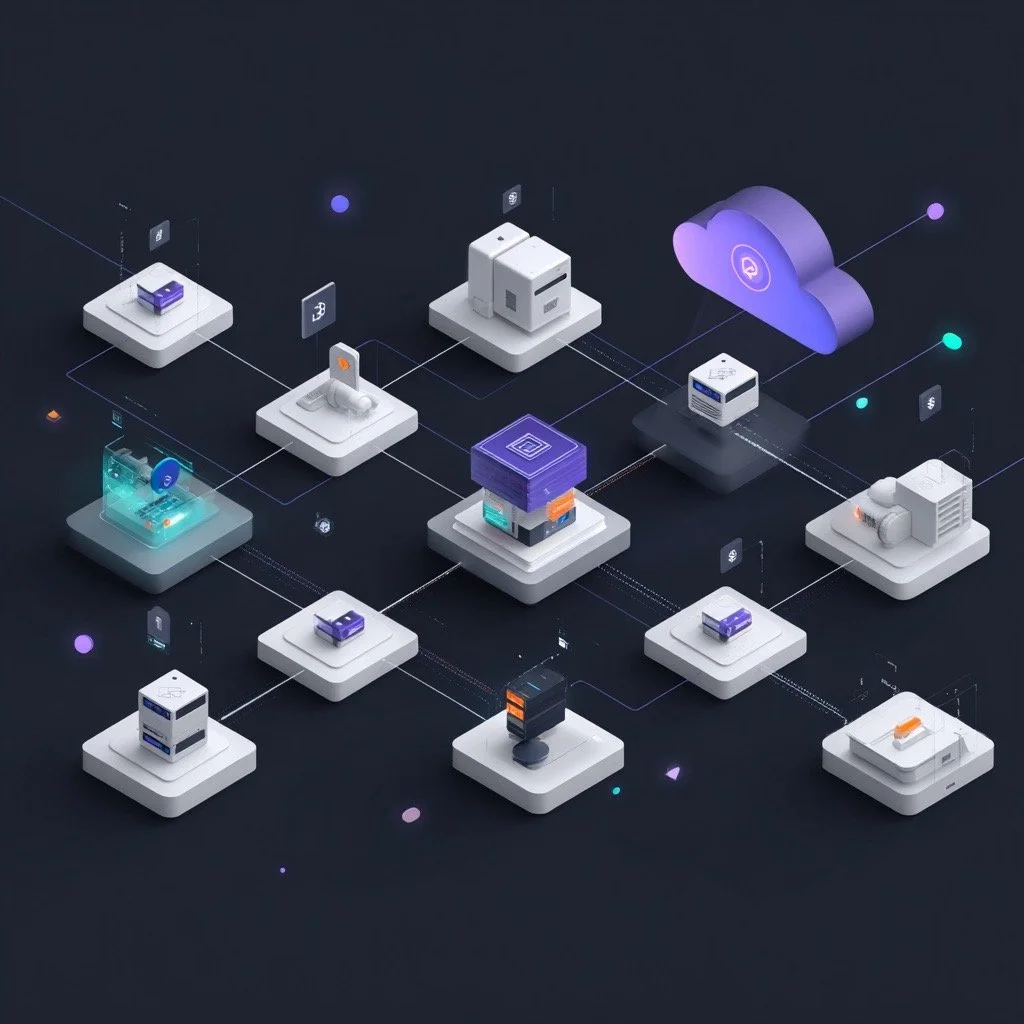
Building a Scalable MLOps Platform from Scratch on OpenMetal
This article outlines why building a custom MLOps platform from scratch—especially on OpenMetal's bare metal infrastructure—is a strategic move for organizations serious about scalable, cost-effective, and flexible machine learning operations. It critiques off-the-shelf MLOps tools for their limitations (vendor lock-in, hidden costs, lack of customization) and argues that building in-house enables full control, efficiency, and long-term savings. It provides a detailed roadmap using open source tools like Terraform, Kubernetes, MLflow, and Argo Workflows, showing how OpenMetal supports high performance, transparency, and adaptability for end-to-end MLOps success.
Lauren Morley - 13 June 2025 - Article in English
-

Best practices for operational excellence
This article outlines best practices for achieving operational excellence on the Databricks platform. It covers architectural principles such as optimizing build and release processes, standardizing CI/CD and MLOps, defining environment isolation and catalog strategies, and automating deployments with tools like Terraform and Lakeflow. It also details strategies for managing capacity, quotas, and implementing robust monitoring, alerting, and logging across data pipelines, ML workflows, and platform operations. Emphasizing automation, standardization, and governance, the article serves as a comprehensive guide for building efficient, scalable, and secure data and ML infrastructures.
Databricks - 9 June 2025 - Article in English
-

AI and IoT: How do the internet of things and AI work together?
This article explores how AI and IoT can be integrated to enhance enterprise applications. IoT involves networks of sensors and devices that trigger actions based on real-world data, while AI enables smarter, more complex decision-making without human intervention. The article explains AI types—from rule-based to generative AI—and how they can optimize IoT control loops, business processes, and real-time responses. It highlights use cases like smart cities, healthcare, and industrial automation. Challenges include data security, model accuracy, and latency. A modular, well-governed approach is advised to maximize AI and IoT synergy.
Tom Nolle - 16 June 2025 - Article in English
-

A guide to navigating AI chemistry hype
This article provides a critical guide to using AI in chemistry, highlighting both its potential and limitations. It emphasizes the importance of understanding AI tools' training data, reproducibility, and benchmarking. Experts caution against overhyped claims and stress that many current applications yield only incremental progress. While tools like AlphaFold show promise, most AI in chemistry requires large, high-quality datasets and domain expertise. The article encourages researchers to evaluate tools rigorously, seek community support, and use open-source platforms like DeepChem to navigate the evolving AI landscape responsibly and effectively.
Andy Extance - 20 May 2025 - Article in English
-

Accelerating ABC’s AI capabilities with MLOps
This article details how the ABC AI team accelerates AI development using MLOps, focusing on efficient model training, deployment, and data management. Leveraging AWS SageMaker, Athena, and OpenSearch, the team automates workflows for fine-tuning models, generating synthetic data, and creating embeddings for ABC Assist, their internal RAG-based chatbot. The use of pipelines ensures reproducibility, scalability, and secure handling of production data. Future improvements include prompt optimization and user feedback integration to enhance model performance and user satisfaction. MLOps has significantly reduced development time and increased agility in updating AI capabilities.
Jeffrey Molendijk - 3 June 2025 - Article in English
-

A new public management model for open data collaboration in sustainable digital insurance ecosystems
This article presents a theoretical and empirical model explaining how New Public Management (NPM) principles, technology adoption (UTAUT), and collaborative governance jointly shape sustainable digital insurance ecosystems through open data. Using survey data from 368 stakeholders, it shows that performance expectancy and accountability drive open data adoption, while principled participation in data sharing has the strongest impact on sustainability. The study highlights dual pathways—technological and collaborative—and finds that tailored strategies across stakeholder groups are vital. It offers policy guidance for balancing innovation, regulation, and collaboration in digital insurance.
Narongsak Sukma - 4 June 2025 - Article in English
-

Developing machine learning models for predicting cardiovascular disease survival based on heavy metal serum and urine levels
This study developed machine learning survival models to predict cardiovascular disease (CVD) mortality using data from NHANES (2003–2018) based on exposure to heavy metals in blood and urine. Models like GradientBoostingSurvival, CoxPHSurvival, and RandomSurvivalForest were evaluated for conditions such as hypertension, heart failure, and stroke. SHAP analysis identified age, lead, cadmium, and thallium as major risk factors. A user-friendly web calculator was created for individualized survival predictions. The findings highlight the critical role of environmental exposures in CVD outcomes and offer tools for targeted prevention and risk assessment in clinical and public health settings.
Hui Jin - 21 May 2025 - Article in English
-

The influence of correlated features on neural network attribution methods in geoscience
This article investigates how correlated features in geospatial data affect explainable AI (XAI) methods used with neural networks in geoscience. Using synthetic benchmarks with known ground truth attributions, the study shows that strong feature correlation increases variance in XAI outputs, even when model performance remains high. This variance arises because networks learn different equally valid patterns from correlated inputs. The study compares XAI methods (e.g., SHAP, Input × Gradient) and finds that using superpixels (feature groups) can reduce attribution variance. It offers a framework to detect and mitigate correlation effects, improving XAI reliability in geoscientific modeling.
Evan Krell - 13 May 2025 - Article in English
-

Are machine learning and artificial intelligence activities eligible for the R&D Tax Incentive?
This article explains how machine learning (ML) and artificial intelligence (AI) activities may qualify for Australia’s R&D Tax Incentive (R&DTI) if they meet specific criteria. It emphasizes that not all ML/AI work is automatically eligible—only those involving genuine experimentation, hypothesis testing, and the generation of new knowledge. Using a case study on soil moisture prediction, it shows how a project met the eligibility standards. It also warns against claiming routine tasks like debugging or known algorithm testing. The article highlights the importance of proper documentation and advises companies to assess and record their R&D activities carefully.
Zoe Fleming and Berrin Daricili - 30 May 2025 - Article in English
-

The Basis of Cognitive Complexity: Teaching CNNs to See Connections
This article explores how convolutional neural networks (CNNs), inspired by the human visual cortex, struggle with learning abstract concepts like same-different relationships—an ability humans and even some animals possess naturally. It highlights the limitations of CNNs in generalizing and understanding causal relations, despite their success in visual tasks. The author presents meta-learning, particularly Model-Agnostic Meta-Learning (MAML), as a promising training method that helps shallow CNNs generalize better across tasks. This approach enables even small CNNs to grasp abstract relational reasoning, paving the way for more cognitively capable AI systems.
Salvatore Raieli - 11 April 2025 - Article in English
-

Application of machine learning in identifying risk factors for low APGAR scores
This study applies machine learning to identify risk factors for low APGAR scores at birth in Sudan. Using data from Wad Medani Maternity Hospital, researchers trained and optimized multiple models—particularly a Random Forest classifier—to predict low scores based on maternal, fetal, and perinatal factors. The Random Forest model achieved high accuracy (96%) and F1-score (97%). Key predictors included birth weight, gestational age, maternal BMI, and mode of delivery. The study highlights how machine learning can enhance clinical decision-making, improve neonatal outcomes, and support early interventions in obstetric care.
Haifa Fahad Alhasson - 9 May 2025 - Article in English
-
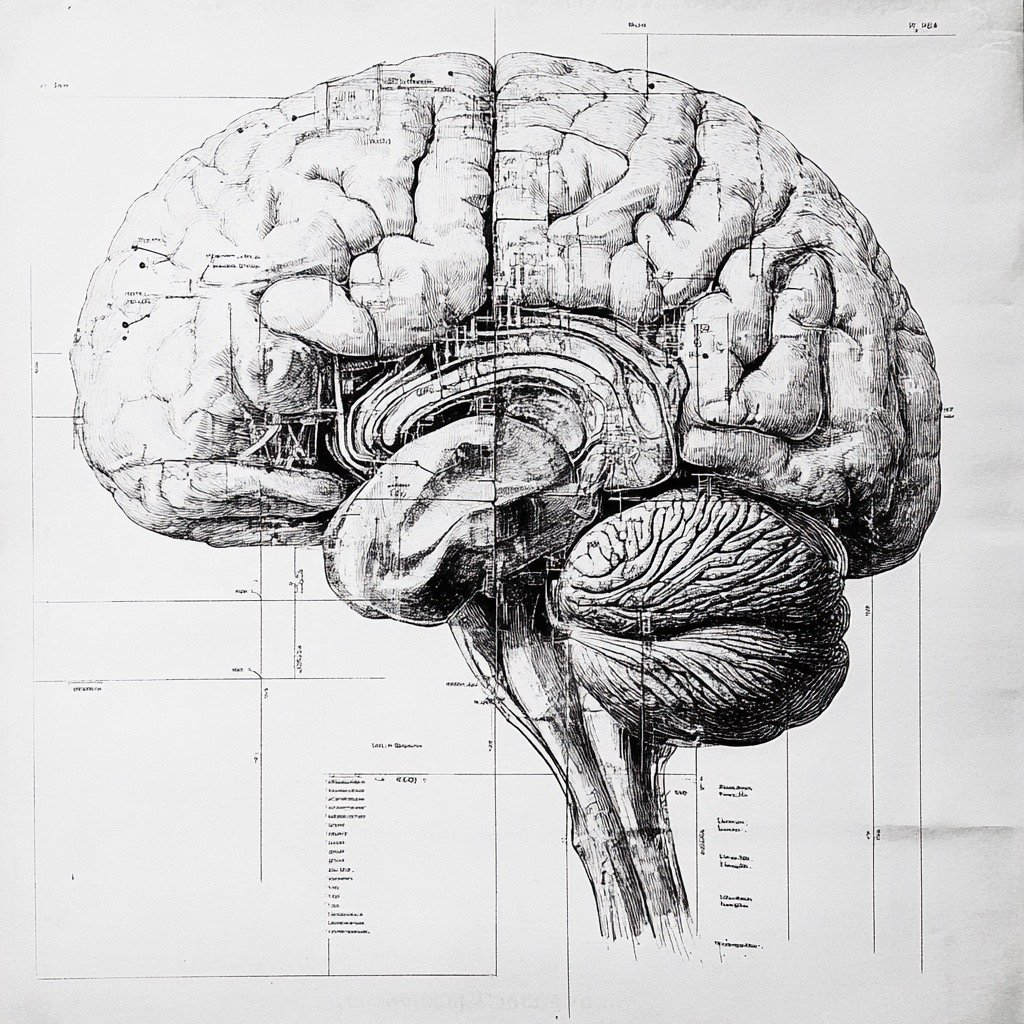
Brain Mapping Tech Reveals Neural Connections in Unprecedented Detail
Researchers have developed LICONN, a breakthrough brain mapping technique that combines expansion microscopy with AI to reveal neural connections and molecular details at the nanoscale. Unlike traditional electron microscopy, LICONN enables visualization of brain structure and protein composition using standard microscopes by expanding tissue 16-fold and applying deep learning. The method maps neurons and synapses with 92.8% accuracy, distinguishing excitatory and inhibitory connections, and identifying features like gap junctions and primary cilia. LICONN’s accessibility and resolution offer a transformative tool for neuroscience and understanding brain disorders.
Neuroedge - 9 Mai 2025 - Article in English
-

Systematic review of AI/ML applications in multi-domain robotic rehabilitation: trends, gaps, and future directions
This article presents a systematic review of AI and machine learning (ML) applications in robotic-assisted rehabilitation across multiple domains, including motor and neurocognitive therapies. Analyzing 201 studies, it identifies key trends, algorithms, and applications such as movement classification, trajectory prediction, and patient assessment. The review highlights AI/ML's potential to enhance personalized, adaptive rehabilitation, but also uncovers challenges like poor generalizability, lack of explainability, small patient sample sizes, and limited data/code sharing. It calls for standardized practices, inclusive research, and stronger integration of explainable AI in clinical settings.
Giovanna Nicora - 9 April 2025 - Article in English
-

Machine Learning in Immunology: From Epitope Prediction to Smarter Vaccine Design
This article explores how machine learning (ML) is revolutionizing vaccine research and immunology by enabling faster, smarter, and more personalized approaches to vaccine design and evaluation. It highlights how ML overcomes limitations of traditional clinical trials by analyzing complex, high-dimensional datasets to predict immune responses, identify protective biomarkers, and improve vaccine efficacy. The article details applications such as epitope prediction, real-time outbreak response, and personalized immunity profiling, while also addressing challenges like data scarcity, bias, and interpretability. ML is positioned as a key tool for the future of precision immunology.
Bethan Davies - 2 April 2025 - Article in English
-

How to Create an AI Model for Your Business
This article is a comprehensive guide to building AI models for businesses, covering every stage from understanding model types (ML, DL, generative AI) to deploying and maintaining them in real-world applications. It explains the AI development lifecycle—problem definition, data collection, training, evaluation, deployment, and monitoring—alongside tools, frameworks, and best practices. The article highlights key use cases, challenges like data quality and bias, and future trends such as agentic AI, synthetic data, and multimodal systems. It's aimed at helping businesses harness AI responsibly and effectively for innovation and growth.
Phuong Anh Ta - 14 April 2025 - Article in English
-

Contrastive Learning: A Powerful Approach to Self-Supervised Representation in Machine Learning
This article explores contrastive learning, a self-supervised machine learning technique that teaches models to differentiate between similar and dissimilar data without needing labels. It works by pulling similar examples closer and pushing different ones apart in an embedding space, enabling powerful representations for tasks like image recognition and NLP. Key components include data augmentation, contrastive loss functions, and encoder networks. The article highlights its success in frameworks like SimCLR and BYOL, discusses applications in visual and self-supervised learning, and examines challenges, benchmarks, and future directions in this rapidly evolving field.
Kacper Rafalski - 24 March 2025 - Article in English
-

AI in the payments Industry : tools, use cases, and challenges
This article explores how AI is revolutionizing the payments industry by enhancing speed, security, and personalization. It details AI's impact on fraud detection, risk assessment, cross-border payments, KYC, and IVR payments, with real-world examples like PayPal, Stripe, and Revolut. It also outlines key AI tools such as machine learning, NLP, computer vision, and generative AI. Challenges like data privacy, bias, and high implementation costs are addressed with practical solutions. The article concludes with a step-by-step guide to integrating AI in payment systems, showcasing AI’s potential to transform financial transactions and customer experiences.
Chirag Bharadwaj - 3 April 2025 - Article in English
-

Self-Supervised AI: Advancing Machine Learning Through Autonomous Data Interpretation
This article explores self-supervised learning (SSL), an AI approach where models learn from unlabeled data by generating their own training signals through pretext tasks like predicting missing parts of input. SSL reduces reliance on labeled datasets and enhances data efficiency, making it ideal for domains like computer vision, natural language processing, speech recognition, and healthcare. It explains key SSL techniques, such as contrastive learning, data augmentation, and deep learning models like ResNet and transformers. The article also highlights SSL’s advantages in generalization, robustness, and real-world applications, while addressing evaluation methods and training strategies.
Kacper Rafalski - 2 April 2025 - Article in English
-

Time Series Modeling Redefined: A Breakthrough Approach
This article presents a groundbreaking approach to time series modeling by C3 AI, introducing foundation embedding models that treat time series data like language. By leveraging self-supervised learning, advanced architecture, and generative AI techniques, these models overcome scalability and generalization challenges. The approach enables more efficient model development, cross-domain learning, and enhanced explainability through retrieval-augmented interpretability (RAI). This innovation transforms how industries use time series data for forecasting, predictive maintenance, and decision-making, paving the way for more intelligent, adaptable, and scalable AI systems.
Sina Pakazad - 19 March 2025 - Article in English
-

AI, Drones, and the Future of Farming: A Game Changer for Plant Disease Detection and Food Security
This article explores how AI-powered drones and machine learning are revolutionizing plant disease detection, offering scalable, efficient, and accurate solutions to strengthen global food security. Traditional detection methods are limited by inefficiency and cost, while new technologies like Convolutional Neural Networks (CNNs) and Vision Transformers (ViTs) provide enhanced accuracy and scalability. Drones equipped with AI can monitor crops in real-time, enabling early disease detection and faster response. The article highlights the need for diverse training data and collaboration among researchers, agritech companies, and policymakers to transition these innovations from research to widespread agricultural impact.
Miriam McNabb - 19 March 2025 - Article in English
-

Neurosymbolic AI: Bridging Neural Networks and Symbolic Reasoning for Smarter Systems
This article explores Neurosymbolic AI, a hybrid approach that combines neural networks’ pattern recognition with symbolic AI’s logical reasoning. It addresses the limitations of each method alone—improving explainability, adaptability, and reasoning. Neurosymbolic systems can process messy real-world data while applying structured logic, making them ideal for complex tasks in fields like finance, healthcare, and creative industries. The article also covers the architecture, learning mechanisms, role of knowledge graphs, and applications, highlighting how this approach could lead to more human-like AI and play a key role in achieving Artificial General Intelligence (AGI).
Kacper Rafalski - 26 March 2025 - Article in English
-

World's first "Synthetic Biological Intelligence" runs on living human cells
Cortical Labs has launched the world's first Synthetic Biological Intelligence (SBI) system, the CL1, a biological computer that merges human brain cells with silicon hardware. This technology, more dynamic and energy-efficient than traditional AI, enables faster learning and adaptability. Researchers can access CL1 via the cloud or purchase units for drug discovery, robotics, and AI development. The system’s self-adapting neural networks could revolutionize medicine and computing. With broad applications and ethical considerations, SBI represents a major leap toward organic intelligence-based computing.
Bronwyn Thompson - 3 March 2025 - Article in English
-

How To Integrate AI-Driven RPA In Healthcare For Security And Efficiency
This article explores integrating AI-driven Robotic Process Automation (RPA) in healthcare to enhance security and efficiency. It outlines key steps, including identifying high-ROI automation use cases, conducting feasibility studies, designing secure automation architectures, and leveraging AI for intelligent automation. The article emphasizes deploying RPA bots for tasks like claim processing and patient data entry while ensuring compliance with regulations like HIPAA and GDPR. It also highlights the importance of continuous monitoring and optimization using AI models, agentic AI, and analytics tools to improve performance and scalability in healthcare automation.
Rajiv Kumaresan - 12 March 2025 - Article in English
-

Spooky boundaries at a distance: Inductive bias, dynamic models, and behavioural macro
This article explores how deep learning, particularly its inductive bias, can naturally enforce long-run stability conditions in dynamic economic models without explicit constraints. By analyzing asset pricing and neoclassical growth models, the authors demonstrate that machine learning algorithms favor stable, non-explosive solutions, filtering out irrational bubbles and suboptimal capital accumulation paths. Their findings suggest that deep learning offers a powerful tool for solving high-dimensional economic models while maintaining long-run equilibrium constraints, providing new foundations for modeling forward-looking behavior in macroeconomics and finance.
Mahdi Ebrahimi Kahou - 15 March 2025 - Article in English
-
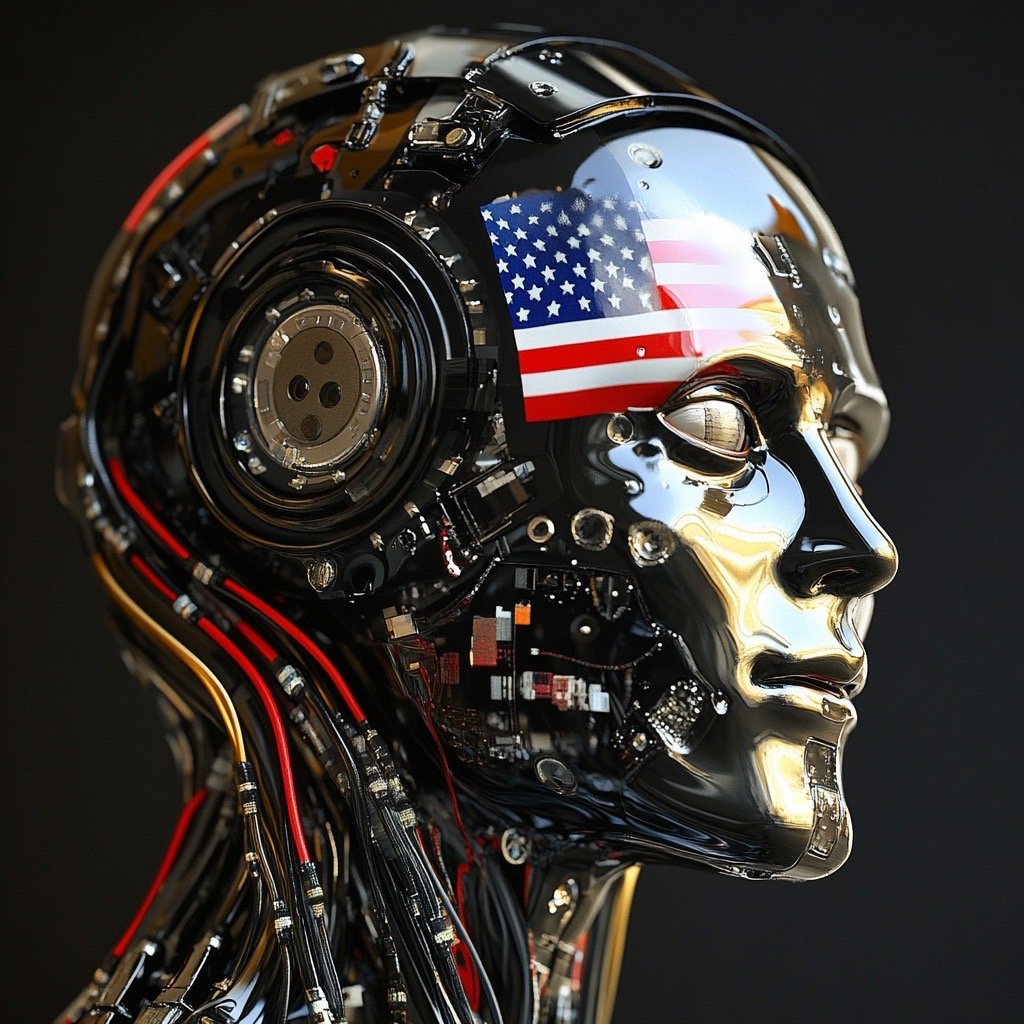
U.S. Shifts AI Policy, Calls for AI Action Plan
The U.S. is shifting its AI policy by revoking Executive Order 14110 and issuing a request for information (RFI) to gather input on a new AI Action Plan. The move signals a cautious regulatory approach, emphasizing stakeholder engagement from industry, academia, and government. The AI Action Plan aims to guide AI governance, focusing on innovation, safety, privacy, and national security. The U.S. also declined to sign the AI Safety Declaration, avoiding potential international restrictions. Organizations should monitor policy changes and engage in shaping future AI regulations to ensure alignment with evolving compliance requirements.
Phillip Goter - 26 February 2025 - Article in English
-

The Physicist Working to Build Science-Literate AI
This article explores physicist Miles Cranmer’s mission to develop AI capable of scientific discovery. Inspired by a desire to accelerate breakthroughs, Cranmer transitioned from astrophysics to machine learning, aiming to build AI that can generate scientific simulations and predictions. While specialized AI models like AlphaFold have made significant strides, general-purpose scientific foundation models remain elusive. In 2023, Cranmer co-founded the Polymathic AI initiative to create AI systems with advanced numerical processing and reasoning skills, overcoming limitations in current AI models that struggle with equations and scientific data availability.
John Pavlus - 28 February 2025 - Article in English
-
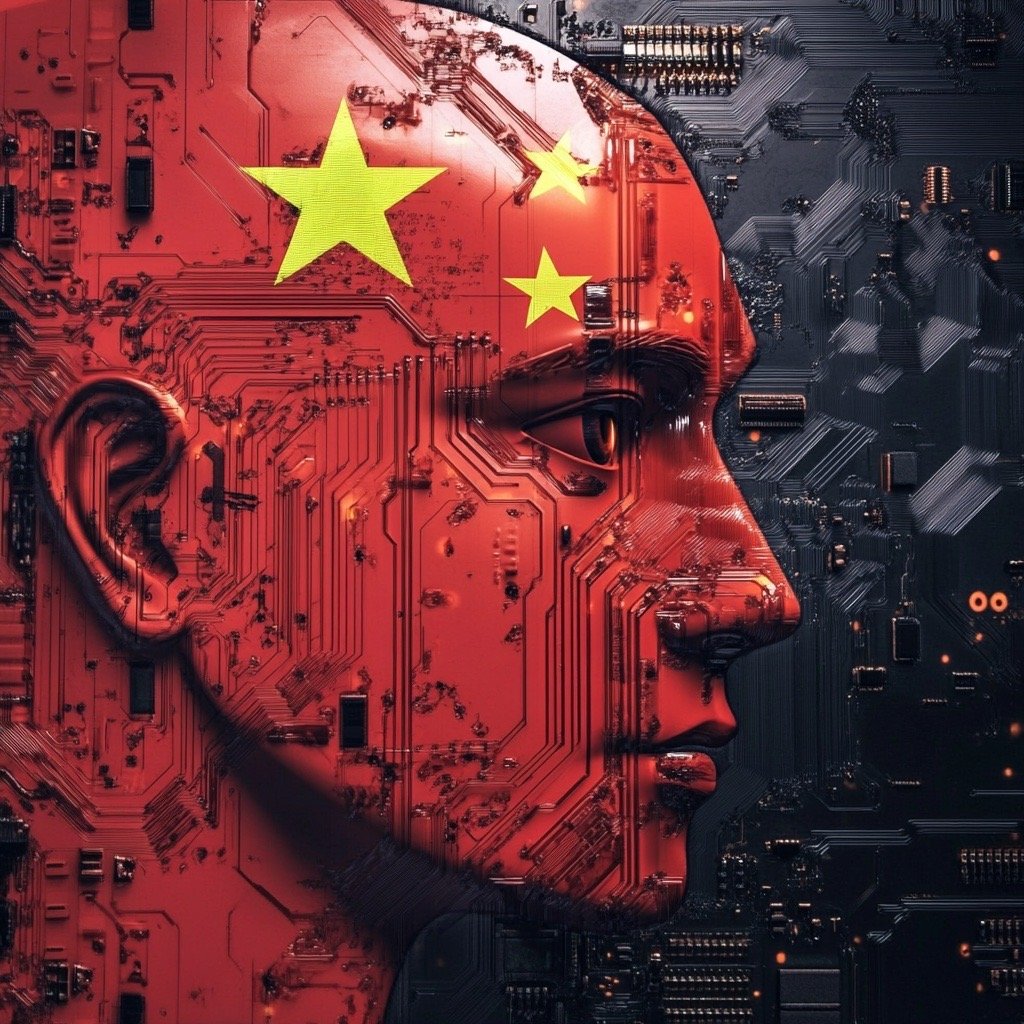
Chinese state science fund calls for algorithm research after studying DeepSeek models
The article discusses China's response to DeepSeek's AI advancements, emphasizing the need for algorithmic innovation over raw computing power. The National Natural Science Foundation of China (NSFC) held a seminar with top experts, concluding that AI research should focus on intelligence optimization, core technology breakthroughs, and software-hardware synergy to reduce reliance on the US. DeepSeek’s cost-efficient AI models challenge traditional scaling laws, sparking widespread adoption in China. Meanwhile, Nvidia CEO Jensen Huang highlighted growing demand for GPUs, driven by reasoning models like OpenAI's Grok3 and DeepSeek-R1, reinforcing AI’s computational needs.
Coco Feng - 3 march 2025 - Article in English
-
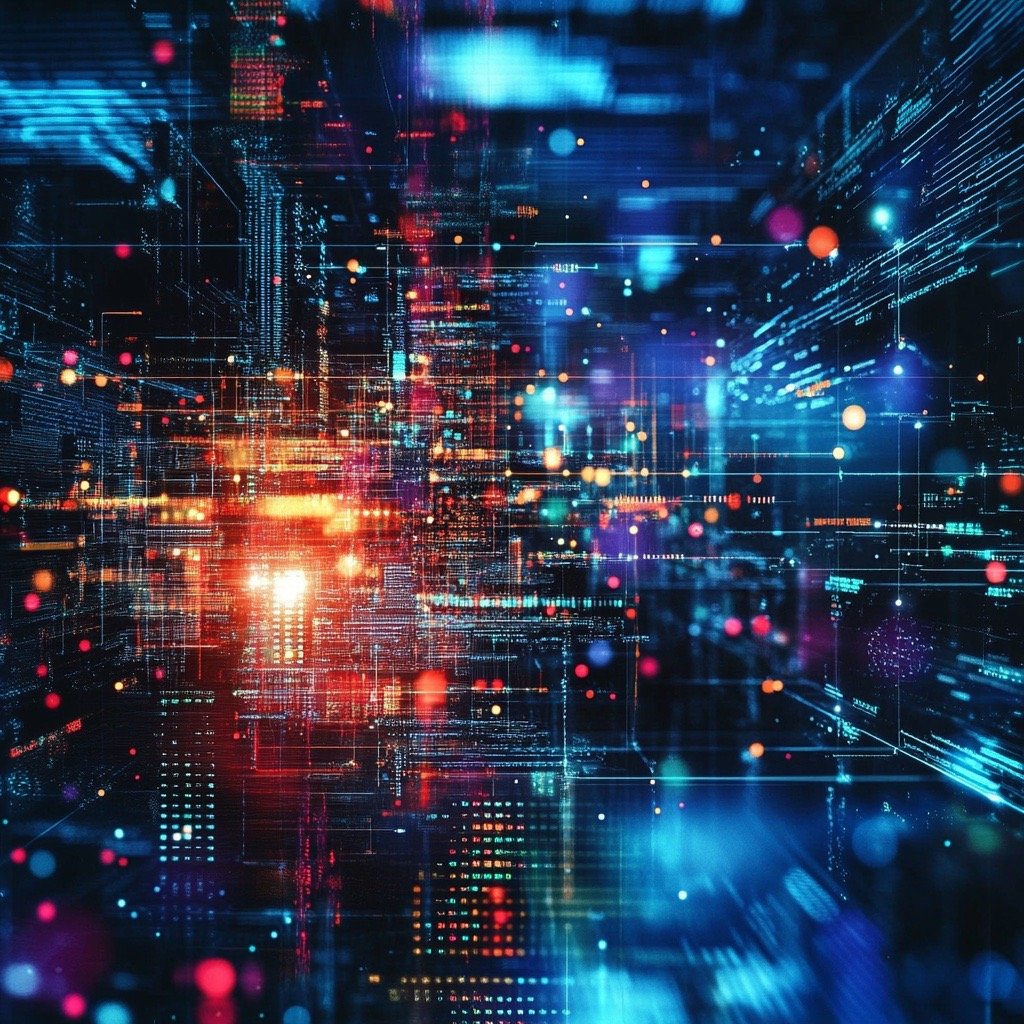
Agentic AI vs. generative AI
This article explores the differences between agentic AI and generative AI, highlighting their unique functions and applications. Generative AI creates original content like text, images, and code in response to user prompts, while agentic AI autonomously makes decisions and acts with minimal supervision. Agentic AI excels in areas like workflow automation, financial risk management, and robotics, whereas generative AI is widely used in content creation, marketing, and customer support. The article also discusses emerging trends in both fields, including AI-driven trading, city planning, and deepfake technology, shaping the future of AI applications.
Teaganne Finn - 11 february 2025 - Article in English
-

For sparse data classification, VersAI’s Extreme AutoML is more accurate and orders of magnitude faster than Google’s Aut
This article explores VersAI's Extreme AutoML, a proprietary AI technology from Verseon, which challenges deep learning by excelling in sparse data classification. Using Extreme Learning Machines (ELMs) instead of iterative backpropagation, VersAI is thousands of times faster than Google AutoML while maintaining superior accuracy, especially for underrepresented classes. Benchmark tests across various datasets, including HAR, QSAR, and NLP tasks, demonstrate its efficiency. With applications in drug discovery, finance, and e-commerce, VersAI reduces hardware costs and environmental impact, marking a shift away from traditional deep learning's "bigger is better" approach.
Brian Buntz - 9 February 2025 - Article in English
-

Externally validated and clinically useful machine learning algorithms to support patient-related decision-making in oncology: a scoping review
This scoping review evaluates externally validated machine learning (ML) models for oncology decision-making, analyzing their performance, clinical utility, and limitations. It identifies convolutional neural networks (CNNs) as the most effective models, particularly in lung, colorectal, gastric, breast, and bone cancers. While ML improves diagnosis, prognosis, and treatment planning, challenges like small sample sizes, data standardization issues, and lack of validation across diverse populations persist. The study calls for larger, more diverse datasets, rigorous validation, and ethical AI integration to enhance cancer care and patient outcomes.
Catarina Sousa Santos - 21 February 2025 - Article in English
-

Nvidia Stock’s New Frontier: Beyond Graphics Cards! Is AI the Game Changer?
The article explores Nvidia's expansion beyond gaming GPUs into artificial intelligence (AI), positioning AI as a key driver of its future growth. Nvidia has formed strategic partnerships and made major investments in AI research and deployment, integrating its high-performance GPUs into machine learning and AI applications. These innovations are transforming industries like autonomous vehicles, healthcare, and cloud computing, fueling Nvidia’s stock growth. Analysts predict a strong tech-driven expansion, but challenges such as high R&D costs and competition remain. Nvidia’s AI shift could redefine its role in the global tech industry.
Elise Kaczynski - 1 February 2025 - Article in English
-

How emotionally intelligent AI cranks up CX potential
The article explores how emotionally intelligent AI is transforming customer experience (CX) by enabling AI systems to recognize and respond to human emotions. Advances in natural language processing (NLP) and AI agents are making interactions more personalized, intuitive, and human-like. The rise of no-code platforms is accelerating adoption, allowing businesses to integrate AI-driven sentiment analysis and automation without technical expertise. These innovations enhance customer interactions, streamline workflows, and improve engagement. Businesses leveraging empathetic AI and no-code tools can redefine CX, creating deeper, more meaningful customer relationships.
Burley Kawasaki - 4 February 2025 - Article in English
-

AI is transforming the search for new materials that can help create the technologies of the future
The article explores how AI is revolutionizing the discovery of new materials, transforming a traditionally slow and costly trial-and-error process. Historically, materials like bronze, glass, ceramics, plastics, and superconductors have driven technological advancements. Now, AI, particularly machine learning, accelerates material design by predicting and generating new compounds with desired properties. Microsoft’s MatterGen and MatterSim, as well as Google DeepMind’s Gnome, are AI tools that design and validate stable materials for applications in energy storage, electronics, medicine, and sustainability. This AI-driven approach could lead to breakthroughs in batteries, medical devices, aerospace, and environmental solutions, shaping the future of technology.
Domenico Vicinanza - 10 February 2025 - Article in English
-
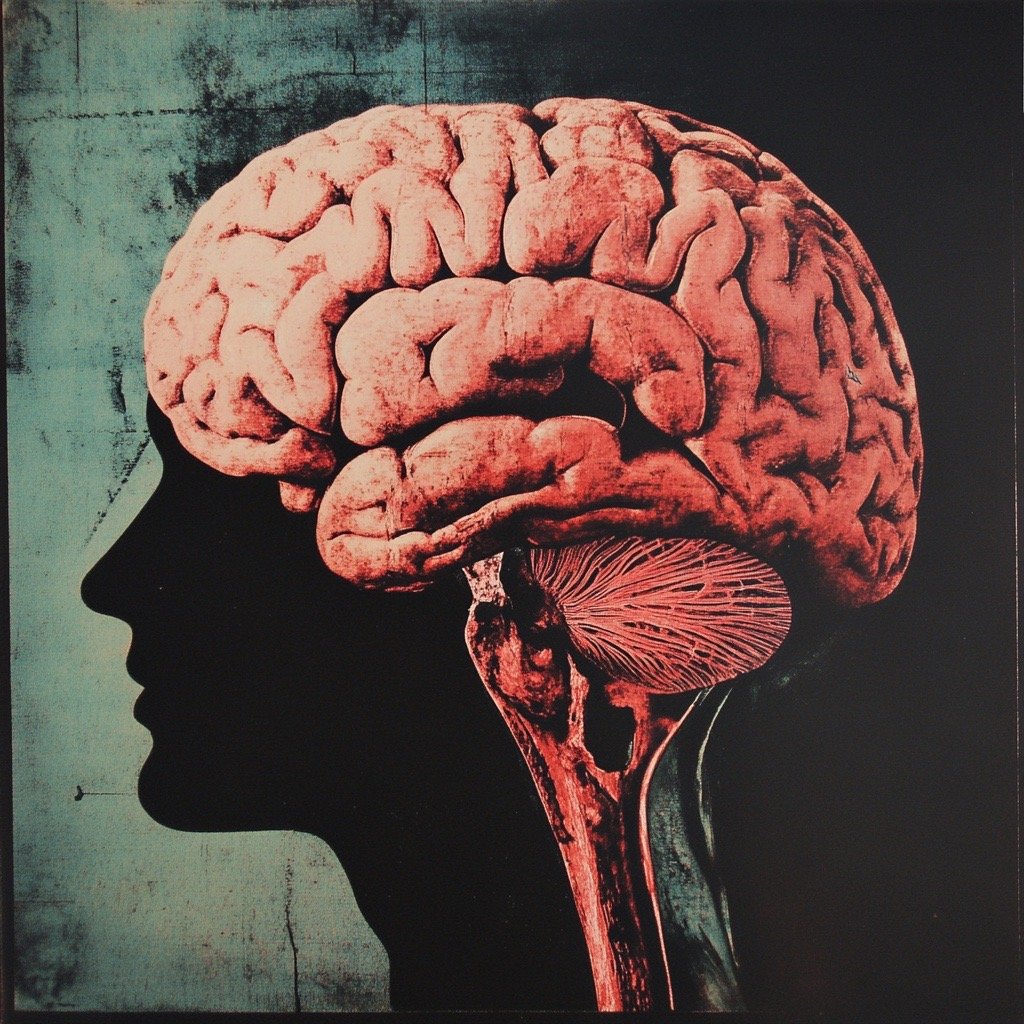
AI breakthrough offers non-invasive brain cancer screening
This article discusses a groundbreaking AI model developed to predict brain metastasis invasion patterns (BMIP) with 85% accuracy using MRI scans. Created by researchers at McGill University, the model analyzes features from preoperative MRI images to identify invasive cancer spread, offering a noninvasive alternative to current diagnostic procedures that rely on surgery. By integrating machine learning and deep learning techniques, including ensemble methods, the model provides accurate predictions and guides personalized treatment strategies. While further validation is needed, this innovation has the potential to transform cancer diagnostics and improve outcomes for patients with metastatic brain cancer.
REBECCA SHAVIT - 20 January 2025 - Article in English
-

DeepSeek: everything you need to know right now
The article discusses DeepSeek's groundbreaking AI model, R-1, which delivers OpenAI-level reasoning at 90% lower costs and faster speeds while being open-source. This disrupts Big Tech (OpenAI, Google, Meta) and Nvidia, challenging their costly, closed AI models. DeepSeek’s efficiency breakthroughs enable high-performance AI on affordable hardware, accelerating AI adoption. The impact is vast—reshaping markets, triggering stock volatility, and forcing AI firms to rethink their strategies. The open-source movement gains momentum, democratizing AI and fueling innovation beyond traditional Western dominance.
AZEEM AZHAR - 27 January 2025 - Article in English
-

Scale Out Batch Inference with Ray
This article discusses scaling batch inference for large language models (LLMs) using Ray and vLLM. It emphasizes the growing demand for batch inference in the Generative AI era, driven by multimodal data and complex applications like chatbots and large-scale analysis. Challenges include scalability, reliability, heterogeneous computing, flexibility, and meeting SLAs. Ray's distributed framework is used with Ray Data and vLLM to optimize inference pipelines, enabling efficient, cost-effective, and high-throughput processing. Techniques like continuous batching, chunked prefill, prefix caching, speculative decoding, and pipeline parallelism are explored to maximize performance and minimize costs.
Cody Yu - 31 January 2025 - Article in English
-

The Role of Vector Databases in Advancing Neural Network Models
The article explores the critical role of vector databases in advancing neural network models by addressing challenges in data storage, retrieval, and scalability. Vector databases store high-dimensional data, such as embeddings from natural language processing or computer vision, enabling fast and efficient similarity searches. These databases optimize neural network training and inference by reducing latency and improving data organization, crucial for real-time analytics and large-scale applications. While widely used in NLP, computer vision, and healthcare, their implementation requires expertise and attention to security. By enhancing precision and scalability, vector databases are driving innovation in AI.
DISHA - 9 January 2025 - Article in English
-
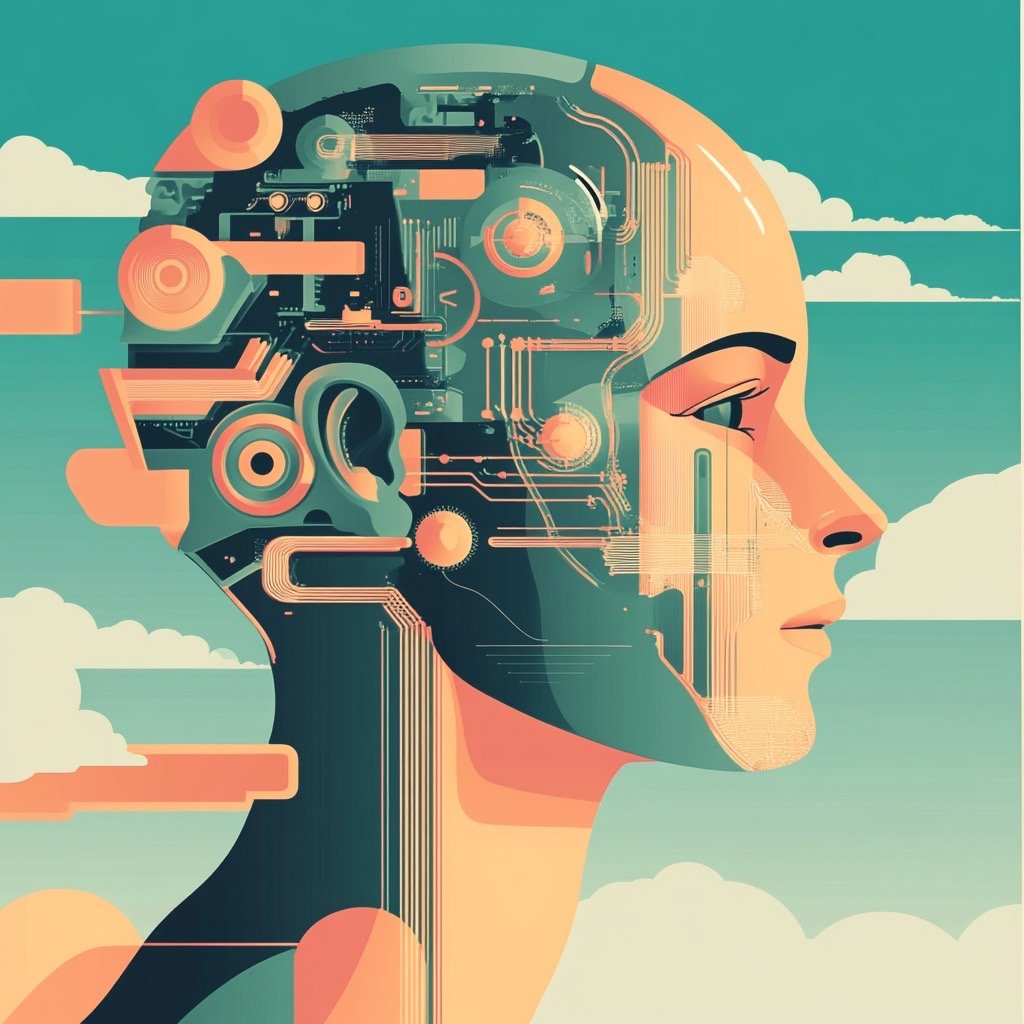
Abusing MLOps platforms to compromise ML models and enterprise data lakes
The article examines the security risks of Machine Learning Operations (MLOps) platforms, which are increasingly used by enterprises to manage, train, and deploy ML models. Highlighting vulnerabilities in popular platforms like Azure Machine Learning, BigML, and Google Cloud Vertex AI, it details potential attacks such as data poisoning, data and model extraction, and evasion. Threat actors target these platforms for cost reduction, data theft, and extortion. The article provides insights into attack scenarios, defensive strategies, and configuration best practices to secure MLOps platforms, emphasizing their criticality in enterprise AI operations and the need for robust protection measures.
Brett Hawkins, Chris Thompson - 6 January 2025 - Article in English
-

Streamlining AI development for transparent nuclear engineering models
This article highlights the development of pyMAISE, an open-source Python-based machine learning library created by University of Michigan researchers to support explainable AI in nuclear engineering. As nuclear energy evolves to meet decarbonization goals, AI can improve reactor design and safety, but its adoption faces challenges due to the black-box nature of traditional AI models and regulatory requirements from the U.S. Nuclear Regulatory Commission (NRC). pyMAISE simplifies AI development, enabling engineers to benchmark and deploy explainable models while incorporating uncertainty quantification. The tool has been successfully tested in reactor design and safety monitoring, offering applications beyond nuclear engineering in safety-critical industries.
Patricia DeLacey - 22 January 2025 - Article in English
-

Audits as Instruments of Principled AI Governance
This article examines AI audits as a critical tool for bridging the gap between ethical AI principles and practical implementation. It highlights the challenges in operationalizing principles like transparency, accountability, and non-discrimination due to the diversity and self-learning nature of AI systems. The article explores the fragmented landscape of AI audits, including first-, second-, and third-party approaches, and regulatory efforts like the EU AI Act and NIST’s AI Risk Management Framework. It emphasizes the need for procedural standardization, multidisciplinary audit teams, and collaborative stakeholder efforts to ensure effective AI governance. The article advocates for audits to address technical and social biases, ensuring responsible and trustworthy AI development.
ANULEKHA NANDI - 3 January 2025 - Article in English
-

Real-Time Analysis in Artificial Intelligence
The article discusses the significance of real-time analysis in artificial intelligence (AI), highlighting its applications in areas like autonomous driving, traffic control, and command-and-control systems. It explains how AI adapts in real time using signal processing, discrete and continuous time analysis, and neural networks such as artificial neural networks (ANNs). Neural networks mimic the human brain to improve decision-making and prediction capabilities. The article also explores challenges like computational complexity and accuracy in AI training. Additionally, it touches on AI-generated art, emphasizing how generative AI tools create digital content by analyzing vast datasets of existing materials.
Karl Paulsen - 6 January 2025 - Article in English
-

How Big Data and AI Work Together - A Deeper Dive
The article explores the synergy between Big Data and AI, highlighting how their integration transforms industries by enabling predictive insights, automation, and innovation. Big Data, characterized by its volume, variety, and velocity, provides a foundation of massive datasets. AI leverages these datasets with advanced algorithms to uncover patterns, predict trends, and drive decision-making. Together, they enhance operational efficiency, personalize customer experiences, and enable proactive strategies across sectors like healthcare, retail, and finance. Despite challenges like data quality, privacy, and integration, the combination of Big Data and AI offers businesses a competitive edge through informed decision-making and streamlined operations.
Helen Zhuravel - 5 January 2025 - Article in English
-

Non-Living Intelligence: Cracking The Code For Materials That Can Learn
This article explores groundbreaking research on mechanical neural networks (MNNs), which are physical materials trained to "learn" tasks using principles of AI like backpropagation. Developed by researchers at the University of Michigan, these networks adjust their mechanical properties to solve problems, such as classifying iris plant species or simulating airplane wings that adapt to wind conditions. Unlike traditional digital AI, MNNs rely on the material's structure and behavior rather than algorithms running on computers. This innovation could inspire advancements in autonomous systems, biological learning, and futuristic materials capable of self-optimization, offering insights across fields like cybernetics and synthetic biology.
Keith Cowing - 23 December 2024 - Article in English
-

Meet Transformers: The Google Breakthrough that Rewrote AI's Roadmap
This article explores the groundbreaking innovation of the Transformer architecture, introduced by Google Brain in 2017. The Transformer revolutionized AI by replacing the traditional sequential processing of text with a parallelized mechanism using self-attention. This change enabled more efficient processing of long sentences and faster training times. The architecture led to advancements in natural language processing (NLP) and generative AI models like GPT and BERT. The article highlights the transformative impact on AI research, scaling, and applications, while also addressing ethical concerns, such as bias, misinformation, and the environmental cost of large models.
Julio Franco - 24 December 2024 - Article in English
-

The Role of Open Source in Accelerating Quantum AI
This article explores the integration of quantum computing and artificial intelligence (AI), highlighting how open-source frameworks like Qiskit, PennyLane, and TensorFlow Quantum are accelerating advancements in quantum machine learning. It explains quantum mechanics principles like superposition and entanglement, which enable quantum computers to process data at unprecedented speeds. Applications in optimization, data analysis, and quantum neural networks (QNNs) are discussed, alongside hybrid quantum-classical algorithms like VQE and QAOA. Challenges include hardware limitations and scalability, but ongoing innovations and open-source collaboration promise transformative impacts in healthcare, finance, and AI development.
Dhanashree Yevle - 3 January 2025 - Article in English
-

Optical deep neural networks are revolutionizing AI computation
The article discusses how photonic deep neural networks (DNNs) are transforming AI hardware by enabling light-speed computation with unmatched energy efficiency. Traditional electronic processors struggle with AI's growing demands, while photonic systems use light to process data, reducing latency and power consumption. Researchers developed a fully integrated photonic processor capable of performing key DNN computations, achieving 92% inference accuracy in under half a nanosecond. Key innovations include coherent matrix multiplication and nonlinear optical function units. This breakthrough could revolutionize AI applications in autonomous systems, telecommunications, and scientific research, paving the way for faster, scalable, and energy-efficient AI hardware.
JOSHUA SHAVIT - 4 December 2024 - Article in English
-
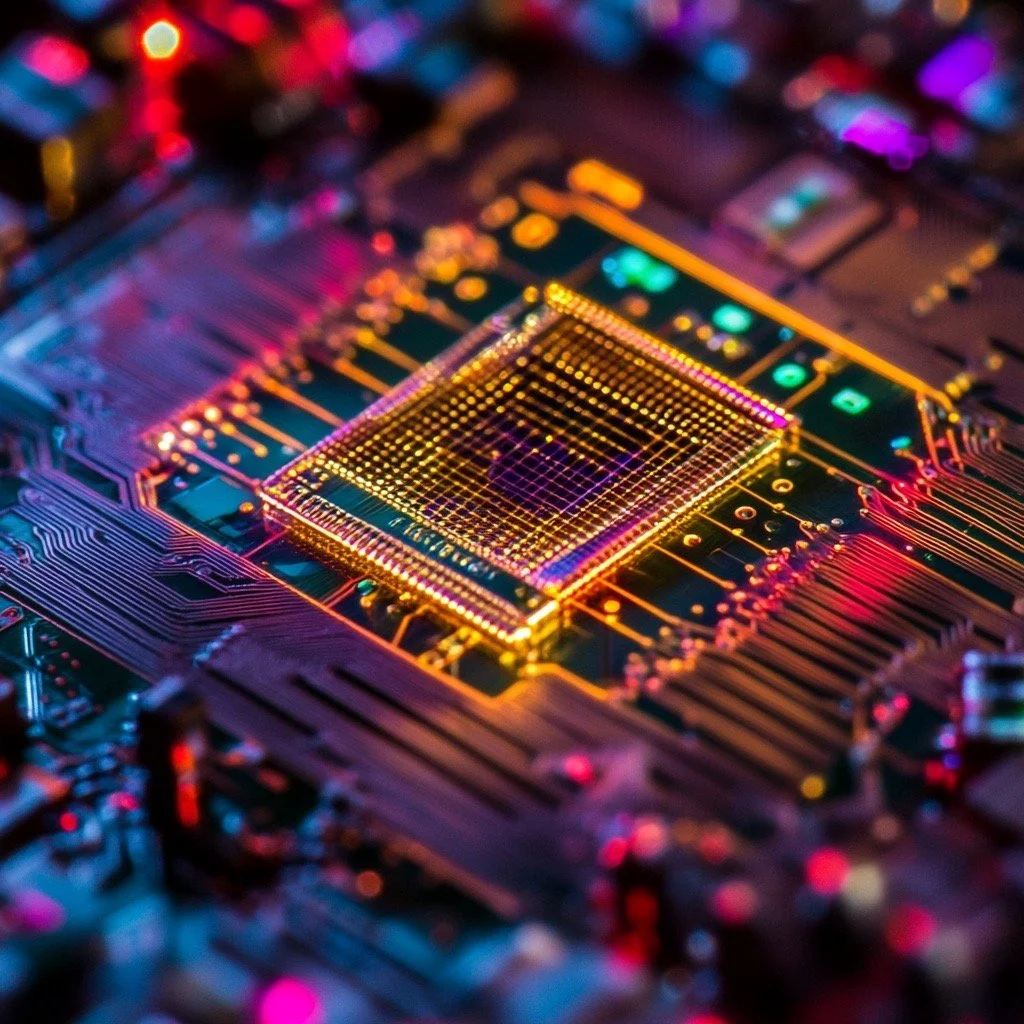
A new photonic chip for ultrafast AI computations
Researchers from MIT have developed a photonic chip that performs deep neural network computations using light, enabling faster and more energy-efficient AI processing. The chip uses optical components, including nonlinear optical function units (NOFUs), to handle both linear and nonlinear operations on-chip. It achieved over 92% accuracy on machine-learning tasks in under half a nanosecond. Fabricated with standard CMOS foundry techniques, it could be scalable for applications like lidar, astronomy, and high-speed telecommunications. Future goals include scaling the chip’s capabilities, integrating it into real-world systems, and developing new AI algorithms optimized for optical computing.
Amit Malewar - 5 December 2024 - Article in English
-
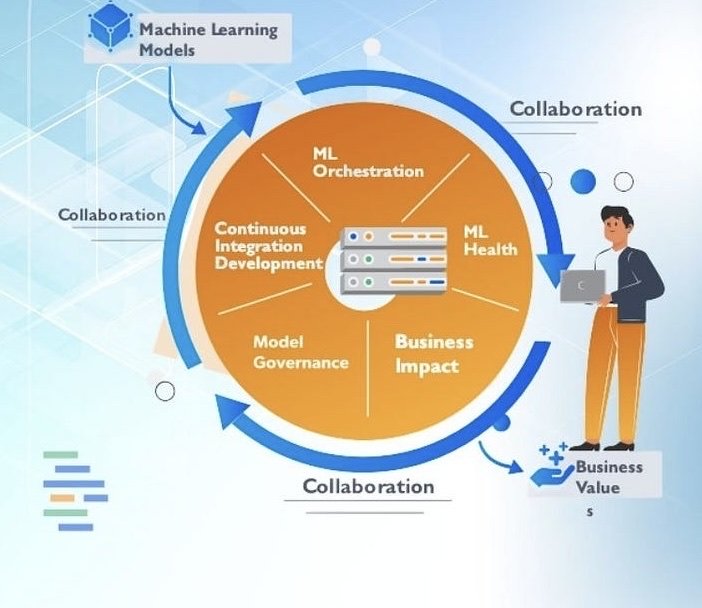
The Impact of MLOps on Machine Learning Model Deployment
The article explores the transformative impact of MLOps on machine learning model deployment, emphasizing its role in improving scalability, reliability, and performance. MLOps integrates DevOps principles into ML workflows, enabling teams to streamline tasks like building, testing, deploying, and monitoring models. Key practices discussed include CI/CD pipelines for automated deployment, model versioning for tracking changes, and monitoring tools to detect model drift. The article also highlights how cloud-native technologies like Docker, Kubernetes, and serverless computing enhance scalability. A financial sector example illustrates how MLOps supports fraud detection and risk management by ensuring models remain adaptive, accurate, and compliant with regulations.
The Data Science and Statistics Society - 9 December 2024 - Article in English
-

Deep learning in medical image analysis: introduction to underlying principles and reviewer guide using diagnostic case studies in paediatrics
The article provides an overview of how deep learning (DL), specifically convolutional neural networks (CNNs), is applied to medical image analysis, with a focus on paediatric diagnostic tools. It explains the underlying principles of CNNs, detailing their key components: convolution layers for feature extraction, pooling layers for dimensionality reduction, and fully connected layers for classification. The article discusses DL's ability to detect diseases, stage conditions, and segment images. Case studies in paediatrics, such as pneumonia detection and genetic syndromes, highlight its potential and challenges, including biases, data limitations, and the need for external validation. The article emphasizes critical appraisal of DL studies and collaboration between clinicians and AI experts for future development.
Constance Dubois -21 November 2024 - Article in English
-

What Are Activation Functions in Neural Networks? Functioning, Types, Real-world Examples, Challenge
The article explains the role of activation functions in neural networks, emphasizing their importance in enabling non-linear data processing, pattern recognition, and decision-making. It explores how they work through feedforward and backpropagation, differentiating between linear and non-linear types. Common functions like ReLU, Sigmoid, and Tanh are discussed alongside advanced ones like Swish and GELU, with examples of real-world applications in industries like healthcare, finance, and AI. Challenges such as vanishing gradients, exploding gradients, and dead neurons are highlighted, along with solutions. A cheat sheet summarizes key activation functions, guiding the design of effective neural networks.
Kechit Goyal - 27 November 2024 - Article in English
-
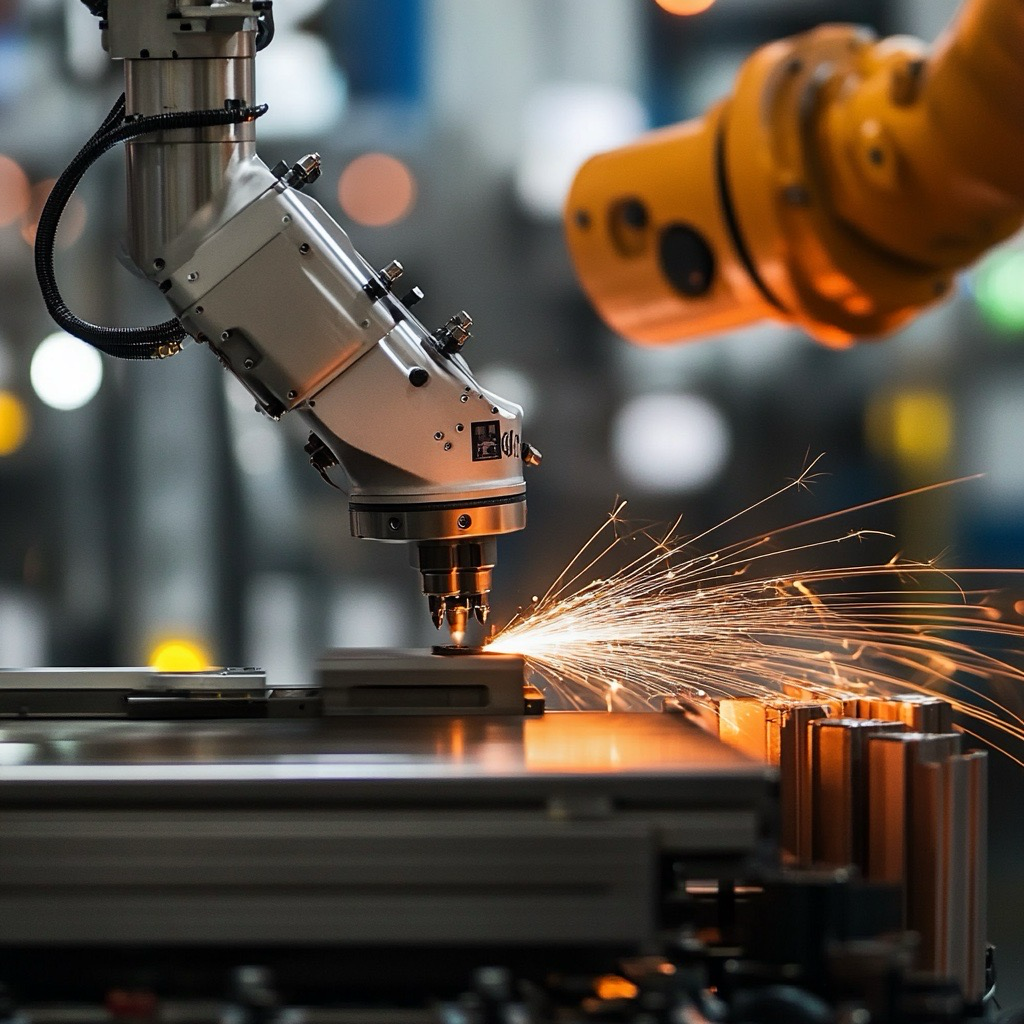
Beyond DMAIC: Leveraging AI and Quality 4.0 for Manufacturing Innovation in the Fourth Industrial Revolution
The article discusses the integration of AI and Quality 4.0 in modern manufacturing, emphasizing its transformative potential beyond traditional methodologies like Six Sigma's DMAIC framework. Quality 4.0 incorporates advanced technologies such as AI, cloud computing, IIoT, and big data to address the complexities of real-time data management and drive innovation. While DMAIC focuses on incremental improvements, it lacks the flexibility needed for continuous learning and adaptation required in AI deployment. The article highlights how AI and Quality 4.0 redefine quality management to meet the demands of the Fourth Industrial Revolution.
Carlos Alberto Escobar Diaz - 29 November 2024 - Article in English
-
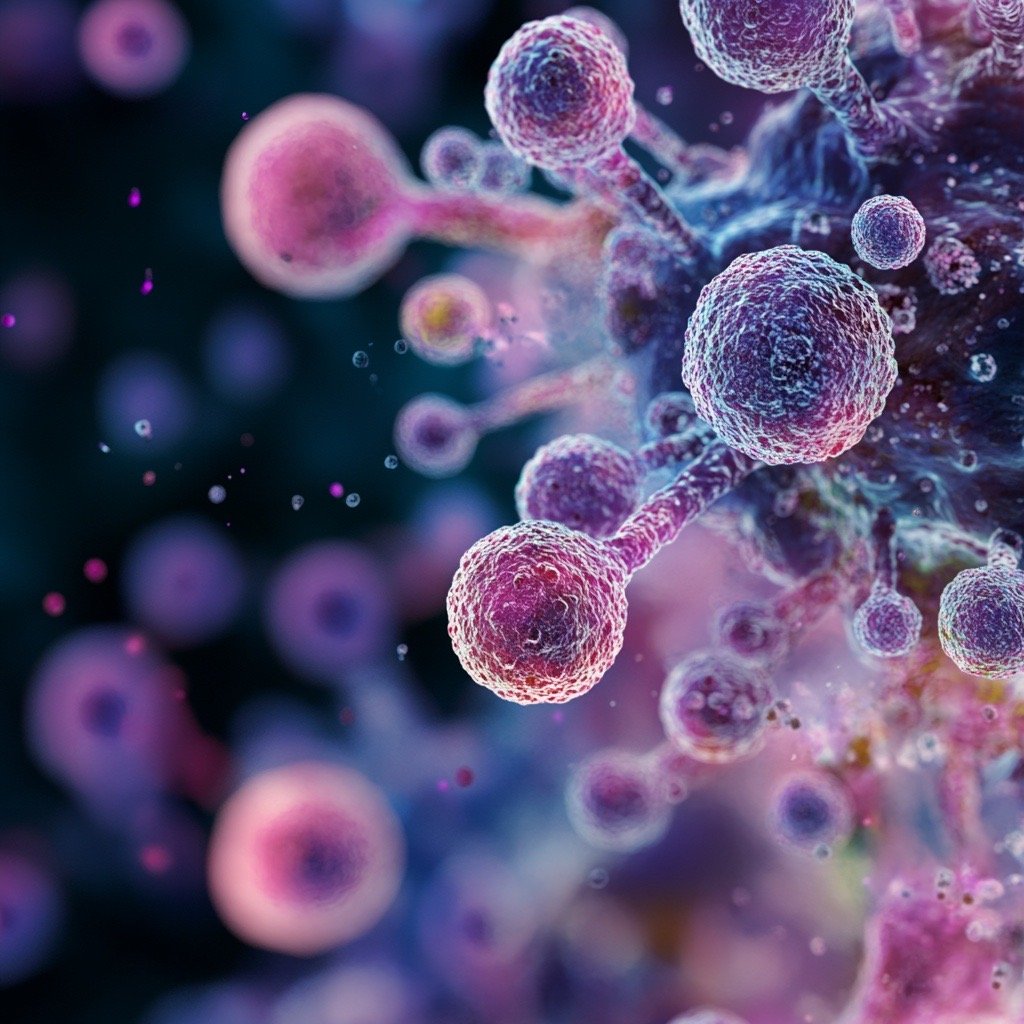
AI Outpaces Humans in Rapid Disease Detection
A deep learning AI model developed at Washington State University accelerates the detection of disease in tissue images, surpassing human accuracy in some cases. This AI analyzes gigapixel images by breaking them into smaller tiles while maintaining context, allowing it to identify pathologies like cancer in weeks rather than months. It outperforms traditional methods, which rely on manual slide analysis by pathologists. Trained on high-resolution images from prior studies, the model is already aiding research in animal and human diseases, with significant potential for faster, more accurate diagnostics in cancer and gene-related conditions.
Neuroscience - 15 November 2024 - Article in English
-

The Untapped Potential Of AI In Quantum Computing
The article explores the transformative potential of integrating artificial intelligence (AI) with quantum computing. AI, particularly machine learning (ML) and deep learning (DL), enhances quantum technologies by improving simulations, optimization, and error correction. Applications include route optimization, drug discovery, and energy efficiency. Despite challenges like data representation and quantum hardware limitations, AI accelerates quantum advancements. The article highlights QAI Ventures as a key player in supporting startups with funding, resources, and global networks. Through collaboration and ecosystem-building, QAI Ventures aims to drive innovation in quantum technologies and AI for practical, real-world applications.
Matt Swayne - 13 November 2024 - Article in English
-

Mastering MLOps: Building a Seamless Pipeline from Model Creation to Deployment and Beyond
The article discusses MLOps (Machine Learning Operations) as a critical framework for managing the full ML lifecycle, from data ingestion to model deployment and monitoring. It outlines the core components, including data cataloging, model governance, CI/CD pipelines, and monitoring tools to ensure models remain accurate and adaptive. A real-world example of credit card payment default prediction illustrates the application, emphasizing preprocessing, feature engineering, and continuous retraining. Governance is highlighted, focusing on ethical AI, compliance, and reproducibility. The article concludes with best practices for scalability, automation, and responsible AI.
Prashant Nair - 19 November 2024 - Article in English
-

On Device Llama 3.1 with Core ML
This technical article outlines a practical approach for optimizing and deploying an LLM, specifically the Llama-3.1-8B-Instruct model, for local use on Apple Silicon. By converting and optimizing the model with Apple's Core ML tools and targeting the M1 Max's GPU, developers can achieve significant speed improvements and make the model suitable for real-time applications without off-device inference, enhancing both privacy and efficiency. This article provides a roadmap for developers aiming to deploy efficient, privacy-preserving LLMs on Apple Silicon, applicable across different transformer-based models.
ML Research Apple - 1 November 2024 - Article in English
-

How Is AI Changing the Science of Prediction?
This Quanta Magazine podcast episode explores how AI is reshaping predictive science. Host Steven Strogatz talks with statistician Emmanuel Candès about using data science and machine learning to tackle complex prediction challenges, from election forecasts to drug discovery. Candès explains how AI enables "educated guesses" by prioritizing compounds in drug testing and using statistical methods to manage prediction uncertainties. He also discusses biases in AI-driven predictions, the reproducibility crisis in science, and the evolving field of data science, which combines statistical reasoning with large-scale data analysis.
Steven Strogatz - 7 November 2024 - Article in English
-
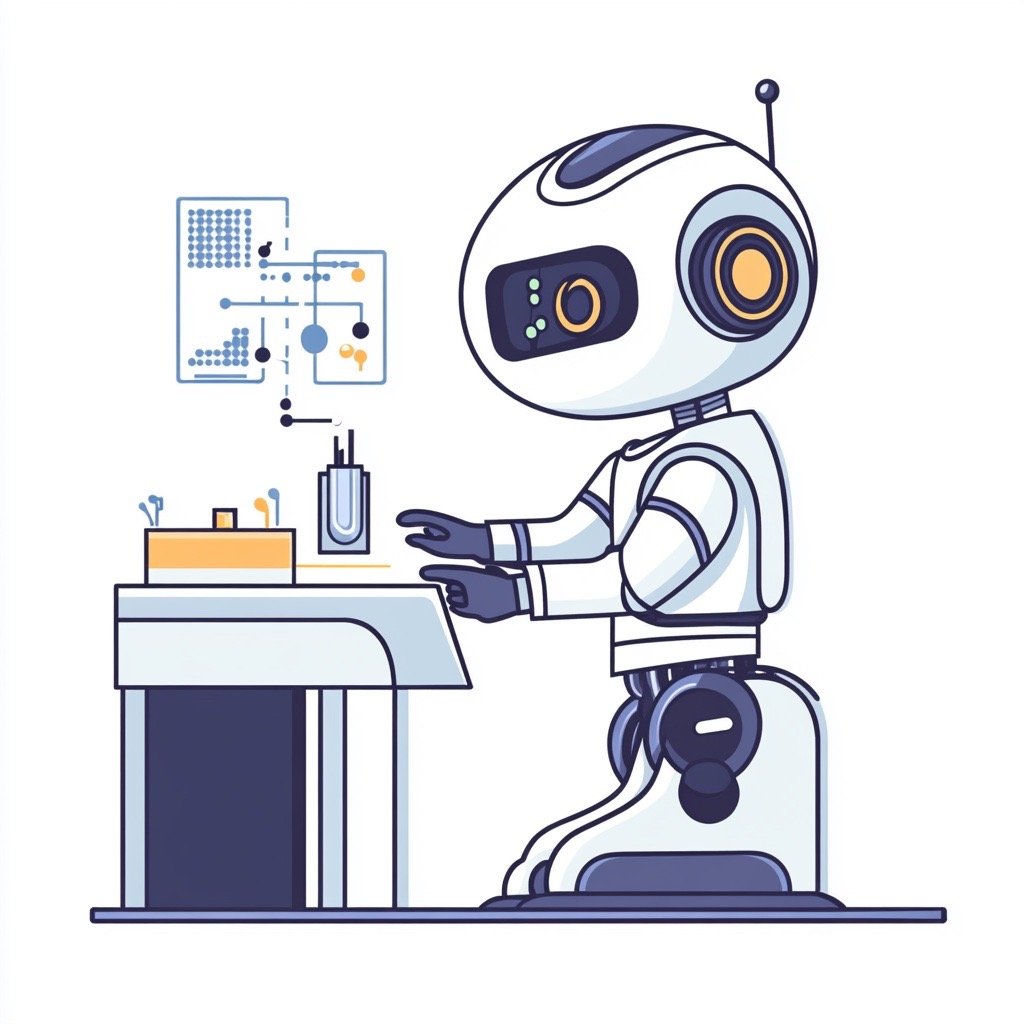
A Guide to the Most Popular Machine Learning Frameworks in Python
This article explores popular Python machine learning frameworks, helping readers choose the right one for their projects. It covers Scikit-learn, ideal for beginners and traditional machine learning tasks, TensorFlow and PyTorch for deep learning, and Keras for user-friendly neural network design. It also discusses XGBoost for optimized gradient boosting. The article emphasizes the role of frameworks in simplifying model development and highlights key features like ease of use, flexibility, and scalability. It concludes with a look at emerging trends, such as AutoML and ethical considerations, shaping the future of machine learning.
Nobledesktop - November 2024 - Article in English
-
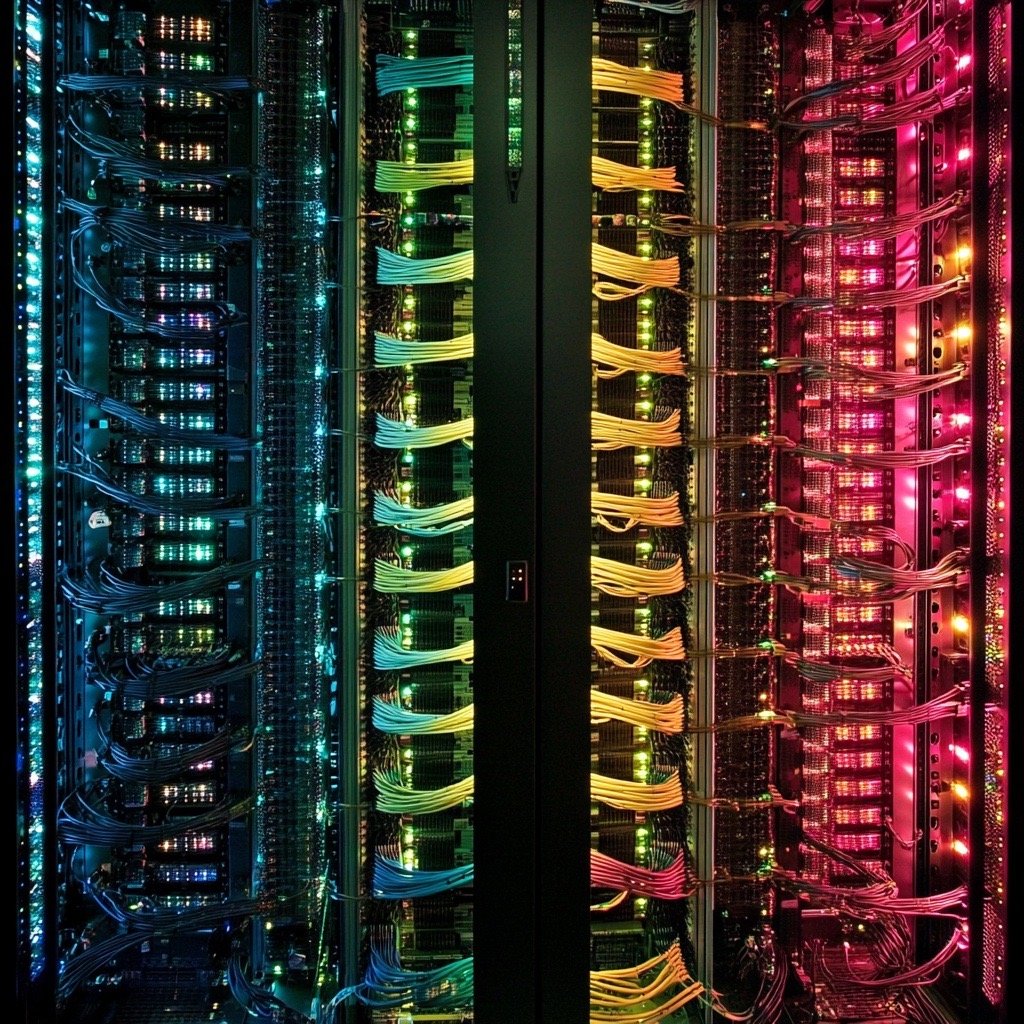
Lore of learning in Machine Learning
The article, written by Dhruvkumar Vyas, explores the fundamental types of machine learning: supervised, unsupervised, semi-supervised, and reinforcement learning. It details how each approach works, highlighting real-world applications such as fraud detection, image segmentation, and robotics. Vyas also explains the advantages and disadvantages of each type, giving practical examples like image recognition for supervised learning, customer segmentation for clustering in unsupervised learning, and resource optimization in reinforcement learning. The blog provides insight into selecting suitable algorithms based on specific tasks, aiming to demystify machine learning processes for learners.
Dhruvkumar Vyas - 12 Octobre 2024 - Article in English
-

30+ LLM Interview Questions and Answers
The article provides a comprehensive guide to Large Language Model (LLM) interview questions, covering foundational concepts and advanced topics for aspiring LLM experts. Key areas include transformer architecture, managing bias in training data, prompt engineering, few-shot learning, and self-attention mechanisms. It also explores LLMs’ role in artificial general intelligence, trends in bias mitigation, and the practical challenges of real-world LLM deployment. Coding questions, such as palindrome detection and hash table implementation, offer hands-on examples. Ideal for beginners and experienced candidates, the guide helps readers prepare for current and emerging industry trends in AI.
Yana Khare - 16 October 2024 - Article in English
-

Ai Product Development Examples
The article discusses how artificial intelligence (AI) is revolutionizing product development across industries, enhancing processes from data analysis to personalized customer experiences. It provides examples, including Netflix's AI-driven content recommendations, Amazon's predictive analytics for market trends, and Tesla's AI-powered quality control. Key challenges in AI product development, such as data quality, computational costs, and ethical concerns, are highlighted. It also outlines strategies—like leveraging existing processes, gaining knowledge insights, and exploring new business models—enabling companies to implement generative AI effectively and stay competitive in evolving markets.
restack - 27 October 2024 - Article in English
-

Stress-testing biomedical vision models with RadEdit: A synthetic data approach for robust model deployment
The article introduces RadEdit, a tool for stress-testing biomedical vision models by generating synthetic medical images to simulate dataset shifts. This approach helps identify model weaknesses, such as biases towards specific hospitals or demographic differences, which can affect real-world performance. Using diffusion models, RadEdit can create realistic X-rays, adding or removing features like diseases, to test models' reliability across varied conditions. The tool also supports multimodal tasks, enabling robust testing of radiology report generators, and aims to enhance the safe deployment of AI in clinical settings.
Max Ilse - 30 September 2024 - Article in English
-

Bentley Systems: the promise of data freedom
The article discusses Bentley Systems' commitment to data openness in the AEC (architecture, engineering, and construction) industry as it transitions from file-based systems to data lakes. Bentley emphasizes its open standards, open source, and open APIs, ensuring customers retain full control of their data. Key innovations include the iTwin platform for digital twins, AI-powered tools for design and asset management, and new carbon analysis capabilities for sustainability. Bentley's long-term strategy aims to future-proof infrastructure data management while promoting collaboration and flexibility across platforms.
Greg Corke - 14 October 2024 - Article in English
-

A novel interpretable deep learning-based computational framework designed synthetic enhancers with broad cross-species activity
The article introduces DREAM, a novel deep learning framework for designing synthetic enhancers with enhanced activity and cross-species functionality. DREAM uses convolutional neural networks to predict enhancer activity from DNA sequences and outperforms previous models like DeepSTARR. By leveraging evolutionary algorithms, DREAM creates enhancers with 3.6 times the activity of the strongest natural enhancer in Drosophila, and these enhancers maintain functionality across species. The framework is versatile, enabling the design of various cis-regulatory elements (CREs) like silencers, and provides insights into enhancer regulatory grammar for applications in genomics and gene therapy.
Oxford University Press - 18 October 2024 - Article in English
-

KnowFormer: A Transformer-Based Breakthrough Model for Efficient Knowledge Graph Reasoning, Tackling Incompleteness and Enhancing Predictive Accuracy Across Large-Scale Datasets
The article introduces KnowFormer, a transformer-based model designed for efficient reasoning in knowledge graphs (KGs). Developed by researchers from Zhongguancun Laboratory, Beihang University, and Nanyang Technological University, KnowFormer addresses the challenge of incomplete KGs by leveraging self-attention mechanisms. Unlike traditional path-based and embedding-based methods, it calculates attention scores to infer missing facts, improving predictive accuracy. With strong performance across benchmarks like FB15k-237 and YAGO3-10, KnowFormer excels in both transductive and inductive reasoning tasks, making it a breakthrough tool for large-scale AI and machine learning applications.
Asif Razzaq - 24 September 2024 - Article in English
-

DeepESN Neural Networks for Industrial Predictive Maintenance through Anomaly Detection from Production Energy Data
The article presents a method for anomaly detection (AD) to support energy-efficient predictive maintenance in industrial production. It uses a Deep Echo State Network (DeepESN) to analyze energy consumption data from production lines, comparing it with traditional models like LSTM. The proposed DeepESN model demonstrates advantages such as faster error detection and higher accuracy in predicting equipment failures. The method was tested on a real-world pilot case involving an automated metal filter production line. The system, equipped with smart meters, processed energy time series data to detect anomalies, helping prevent energy waste and ensuring optimal performance.
Andrea Bonci - 26 September 2024 - Article in English
-
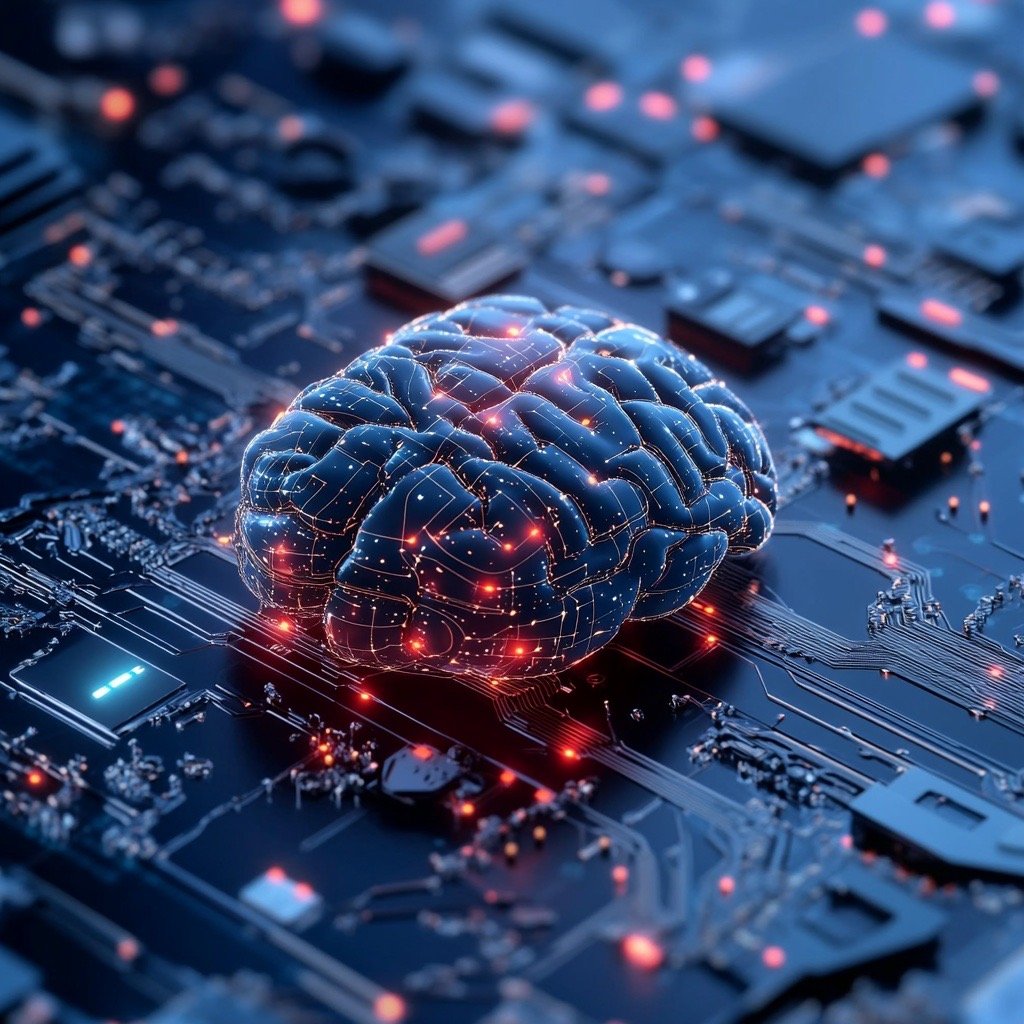
Building a Framework for Machine-Learning Compliance in Regulated Industries
This article addresses the challenges of achieving compliance and transparency in machine learning for regulated industries, especially digital health. With complex AI algorithms that continuously learn, regulators like the FDA and GDPR require robust frameworks to ensure accountability, explainability, and privacy. It discusses the necessity of a specialized verification and validation (V&V) process for neural networks, covering everything from supervised and unsupervised learning to infrastructure needs. Emphasis is placed on model management, repeatability, and data provenance to enhance transparency, reduce bias, and build trust in AI models while meeting regulatory standards.
Maria DiBari - October 2024 - Article in English
-

Monitor the training process
The article explains how to train and monitor a deep learning regression model for predicting sunshine hours based on weather data from multiple locations. It walks through the process of splitting the dataset into training, validation, and test sets using train_test_split. The architecture involves two dense layers with ReLU activation, and the model is compiled with Adam optimizer and mean squared error loss. It covers handling overfitting with techniques like reducing parameters, early stopping, and batch normalization. Visualizing metrics such as RMSE helps track model performance, with TensorBoard used for detailed monitoring.
Github - 24 September 2024 - Article in English
-

MLOps vs AIOps – What’s the Difference?
The article compares MLOps (Machine Learning Operations) and AIOps (Artificial Intelligence for IT Operations). MLOps manages the lifecycle of ML models, focusing on development, deployment, and performance monitoring. It integrates tools like Kubernetes and Docker to streamline machine learning workflows. AIOps, in contrast, automates IT operations using AI algorithms and big data to predict, detect, and resolve issues in real-time. While both MLOps and AIOps leverage AI and ML, they serve distinct purposes: MLOps optimizes machine learning models, and AIOps enhances IT operations management.
Sachin Kalotra - 19 September 2024 - Article in English
-

Mastering Python for Deep Learning: A Comprehensive Guide
This guide explores mastering deep learning using Python, focusing on essential concepts, tools, and applications. It highlights Python's powerful libraries like TensorFlow, Keras, and PyTorch, which simplify building and training neural networks. Key neural network components like layers, nodes, and activation functions are discussed, along with advanced techniques such as CNNs, RNNs, and transfer learning. The guide also covers hands-on projects, such as image classification and text generation, while emphasizing best practices like data augmentation and hyperparameter tuning. Career opportunities in fields like healthcare, finance, and AI research are also detailed.
kumo - 21 September 2024 - Article in English
-

Could Brain-Inspired Patterns Be the Future of AI? Microsoft Investigates Central Pattern Generators in Neural Networks
The article discusses a breakthrough in Spiking Neural Networks (SNNs) by researchers from Microsoft and Fudan University. SNNs are biologically inspired, energy-efficient AI models but struggle with sequential tasks like text classification and time-series forecasting due to ineffective positional encoding (PE). The researchers introduce a novel PE technique, CPG-PE, inspired by central pattern generators (CPGs) in the brain, which produce rhythmic outputs without rhythmic inputs. This technique enhances SNN performance across sequential tasks by encoding positional information in a spike-compatible format, improving accuracy and efficiency in real-world AI applications.
Aswin Ak - 5 September 2024 - Article in English
-

Harnessing Machine Learning to Guide Scientific Understanding
This article discusses how researchers, led by Jonathan Colen and Vincenzo Vitelli, used machine learning (ML) to guide scientific understanding by identifying a missing term in the Burgers' equation for fluid dynamics. By incorporating interpretable ML models, they found a dispersive term related to nonreciprocal hydrodynamic interactions, which improved the accuracy of the system's dynamic descriptions. This method demonstrates how ML can act as a tool to uncover deeper physical insights in complex systems rather than merely optimizing prediction accuracy.
Sam Dillavou - 3 September 2024 - Article in English
-

Recommendation System in Python
This article discusses building recommendation systems using Python, focusing on content-based and collaborative filtering techniques. Content-based systems recommend items similar to what a user has liked, using item features, while collaborative filtering relies on user behavior and preferences to suggest items. The article explains key concepts such as TF-IDF for content representation, user-item matrices, and algorithms like K-Nearest Neighbors (KNN) to find similar items. Python libraries and techniques are highlighted for creating user-specific recommendations, improving user experience, and driving business growth across industries like e-commerce and streaming services.
geeksforgeeks - 3 September 2024 - Article in English
-

Hidden Data Engineering Problems in ML and How to Solve Them
The article highlights hidden data engineering challenges that slow down machine learning (ML) projects, such as building data pipelines, managing compute and storage infrastructure, processing batch and real-time data, and addressing training/serving skew. These tasks distract ML teams from innovation, leading to delays and inefficiencies. Tecton offers a solution by automating data engineering tasks and integrating batch, streaming, and real-time data. It simplifies feature engineering and ensures consistent, scalable infrastructure for fast, low-latency model inference, enabling teams to focus on developing smarter, faster AI models.
Julia Brouillette - 19 August 2024 - Article in English
-
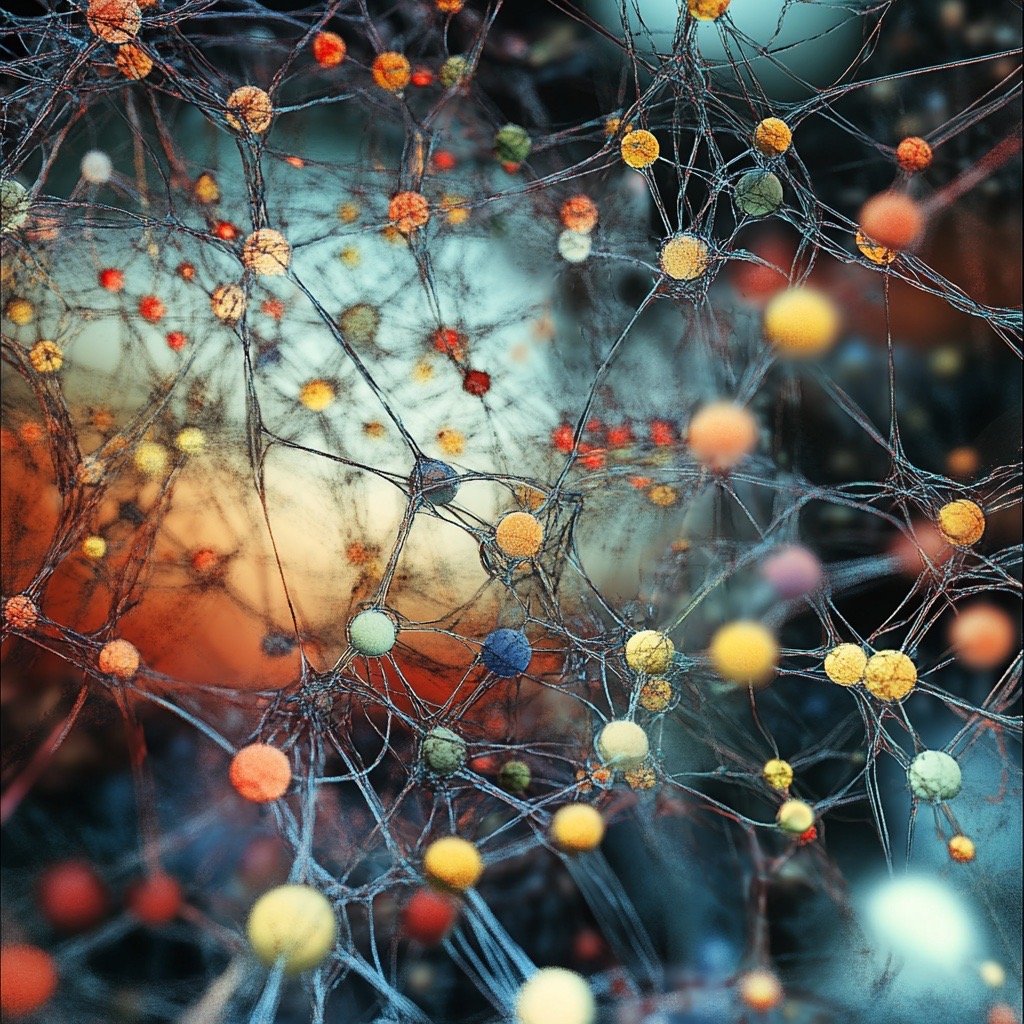
Heterogeneous Neural Networks: A New Approach to AI Framework Construction
The article introduces PassiveLogic's development of Heterogeneous Neural Networks (HNNs) as a new AI framework for autonomous systems, specifically targeting building automation to reduce energy consumption. Unlike traditional homogeneous neural networks, HNNs use diverse neuron types and architectures, combining physics-based data to ensure accuracy, eliminate training data, and avoid issues like overfitting or hallucinations. This introspectable and composable AI system allows users to see how decisions are made, paving the way for reliable, scalable AI applications beyond language and image processing.
Jeremy Fillingim - August 2024 - Article in English
-
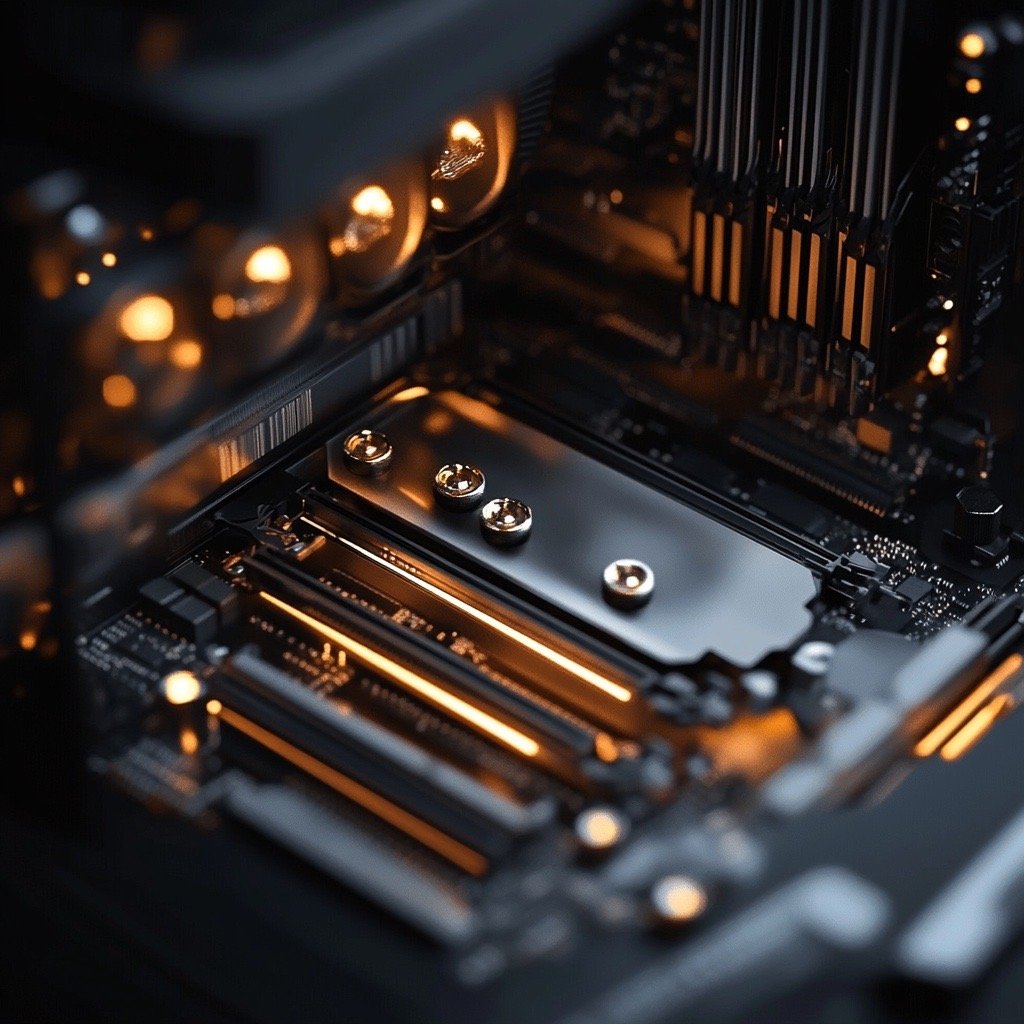
How hardware contributes to the fairness of artificial neural networks
The article discusses how hardware can influence the fairness of artificial neural networks (ANNs). Researchers from the University of Notre Dame explored the role of emerging hardware, particularly computing-in-memory (CiM) devices, in contributing to biases in AI models. They found that larger, resource-intensive models tend to be fairer but require advanced hardware. Non-idealities in hardware, such as device variability, can create trade-offs between accuracy and fairness. To address this, the researchers suggest solutions like noise-aware training and model compression. The study emphasizes the need for both hardware and software to be designed with fairness in mind.
Ingrid Fadelli - 24 August 2024 - Article in English
-

Digital Twin Technology—A Review and Its Application Model for Prognostics and Health Management of Microelectronics
This review highlights the importance of Digital Twin technology in modern industrial applications, particularly in enhancing the reliability and longevity of microelectronic systems through advanced PHM techniques. The proposed two-branched DT model offers a promising framework for integrating both physics-based and data-driven approaches, paving the way for more robust and scalable health management solutions in microelectronics and beyond. By leveraging DT, industries can achieve significant improvements in the reliability, performance, and longevity of their systems. The technology allows for real-time monitoring, predictive maintenance, and optimization of systems, which are critical components in the era of Industry 4.0.
Adwait Inamdar - 16 August 2024 - Article in English
-

How AI Agents Transform Enterprises: Key Use Cases & Benefits
The article explores how AI agents are revolutionizing enterprise operations by enhancing efficiency, productivity, and decision-making. AI agents, powered by advanced algorithms and machine learning, automate routine tasks, analyze large data sets, and provide valuable insights. They improve operational efficiency through automation, predictive maintenance, and supply chain optimization. Additionally, they drive growth by enabling data-driven decisions, accelerating product development, and personalizing customer interactions. The article also addresses challenges like data quality, privacy, and ethical considerations, while highlighting the transformative potential of AI agents in various business functions.
Kajol Wadhwani - August 2024 - Article in English
-

Polymers by Algorithm: How AI is Crafting Tomorrow’s Materials
The article discusses how Georgia Tech researchers, led by Rampi Ramprasad, are leveraging AI to accelerate the discovery of next-generation polymers. By using AI algorithms, the team can predict the properties of polymers before they are physically created, streamlining the research process and reducing costs. Their work, highlighted in prestigious Nature journals, has led to breakthroughs in materials like high-energy, thermally stable polymers for capacitors, with real-world applications in aerospace and other industries. This AI-driven approach is revolutionizing materials science and bridging the gap between academic research and industrial use.
Georgia Tech - 20 August 2024 - Article in English
-

Microsoft and Stanford University Researchers Introduce Trace: A Groundbreaking Python Framework Poised to Revolutionize the Automatic Optimization of AI Systems
Microsoft and Stanford University researchers introduce Trace, a Python framework for optimizing AI systems' workflows. Traditional optimization techniques are inefficient for complex workflows with interdependent steps. Trace uses Optimization with Trace Oracle (OPTO), treating workflows as computational graphs to optimize parameters dynamically. The general-purpose optimizer, OptoPrime, iteratively updates parameters based on execution traces, enhancing efficiency in tasks like prompt optimization and robot controller design. Trace outperforms specialized optimizers and extends optimization to non-differentiable workflows, supporting self-adapting agents and diverse applications.
Sana Hassan - 28 July 2024 - Article in English
-

Unraveling the Mathematical Frameworks Driving Foundational AI
This blog explores the complex mathematical frameworks underlying foundational AI models, touching on key areas like reinforcement learning, generative models, and causal inference. It covers optimization techniques, such as stochastic gradient descent and neural architecture search, as well as representation learning methods like autoencoders and transformers. The author also addresses the ethical implications of AI, including algorithmic bias and transparency, and discusses the integration of symbolic reasoning with neural networks in hybrid AI systems, highlighting the intricate interplay between theory and practice in AI development.
Freedom Preetham - 17 August 2024 - Article in English
-
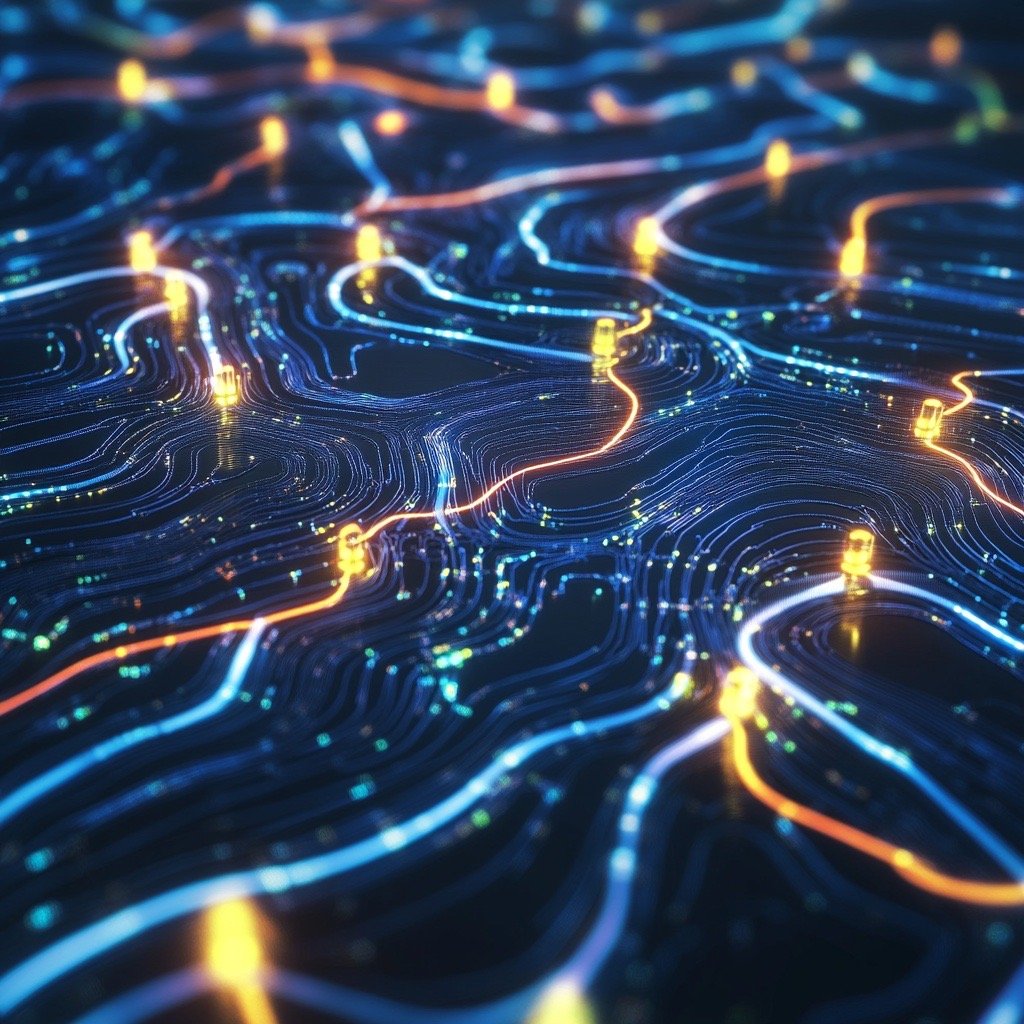
A Large-Scale Study of Model Integration in ML-Enabled Software Systems
This study focuses on understanding the characteristics, reuse practices, and integration architectures of machine learning (ML)-enabled software systems. The rise of ML has revolutionized software engineering, introducing ML models into traditional software systems. However, embedding ML models effectively into software systems, ensuring maintainability and reusability, remains a significant challenge. This study addresses these challenges by analyzing 2,928 open-source ML-enabled software systems on GitHub, aiming to provide insights into how ML models are reused and integrated. The findings contribute to the improvement of engineering practices for ML-enabled systems.
Yorick Sens - 12 August 2024 - Article in English
-

A simple framework to enhance the adversarial robustness of deep learning-based intrusion detection system
The article proposes the DLL-IDS framework, enhancing the robustness of Intrusion Detection Systems (IDS) against adversarial attacks. It combines deep learning (DL) and machine learning (ML) models, leveraging their respective strengths: high prediction accuracy and low attack transferability. The framework uses a Local Intrinsic Dimensionality (LID) based detector to identify adversarial examples (AEs) and assesses their malicious intent using the Label-Spreading (LS) algorithm. This dual approach improves the system's overall accuracy and resilience, maintaining high performance even under adversarial conditions.
Xinwei Yuan - July 2024 - Article in English
-
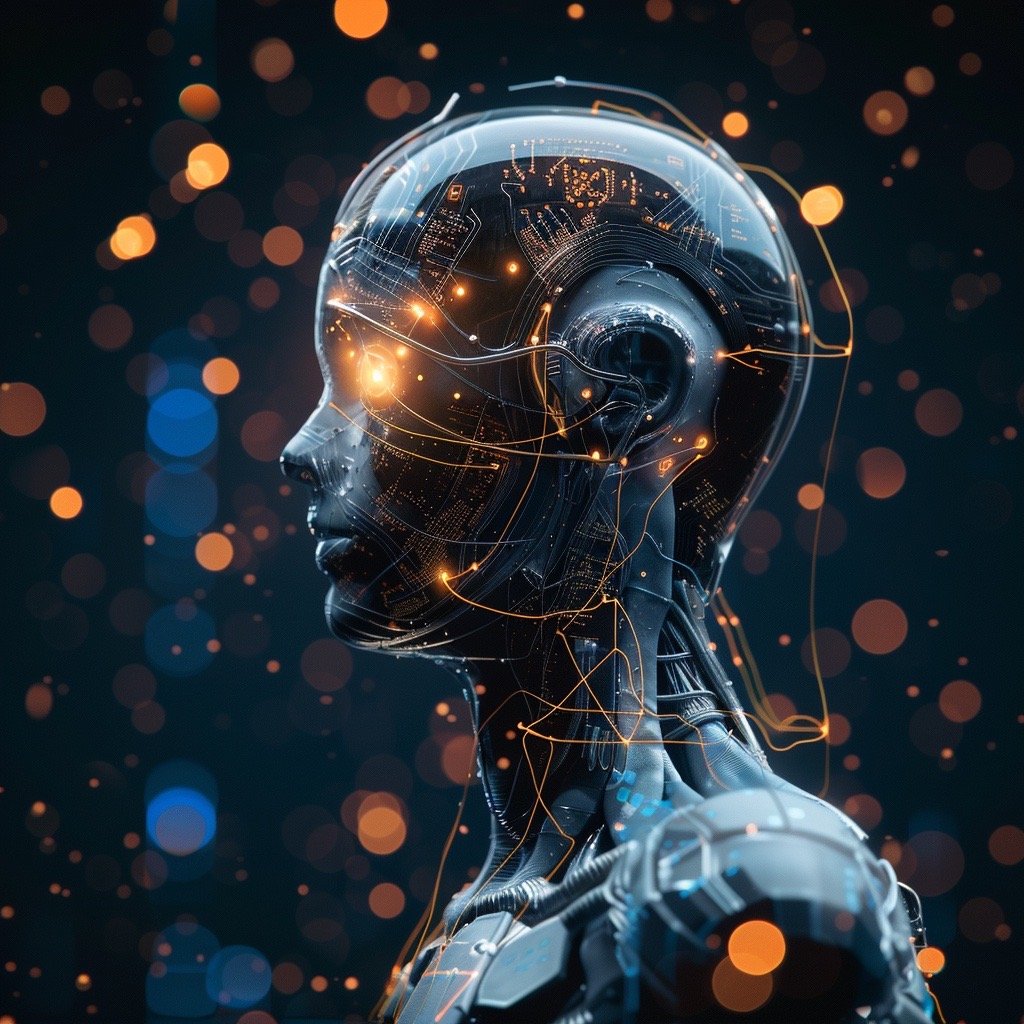
MIT researchers advance automated interpretability in AI models
MIT researchers have developed MAIA (Multimodal Automated Interpretability Agent), a system designed to autonomously interpret artificial vision models. MAIA uses a vision-language model backbone to perform various interpretability tasks, such as labeling components within models, cleaning up classifiers, and identifying biases. It generates hypotheses, designs experiments, and refines its understanding through iterative analysis. This system aims to provide insights into how AI models function, ensuring safety and fairness. The researchers demonstrated MAIA's efficacy in describing neurons in models and identifying biases, suggesting its potential to advance AI interpretability.
Rachel Gordon - 23 July 2024 - Article in English
-

Constructing artificial life and materials scientists with accelerated AI using Deep AndersoNN
Deep AndersoNN accelerates AI by leveraging the continuum limit of neural networks as the number of layers approaches infinity, treating it as a single implicit layer or deep equilibrium model (DEQ). Training reduces to solving a nonlinear fixed-point iteration, efficiently handled by Anderson extrapolation, leading to up to tenfold increases in training and inference speed. Applied to density functional theory (DFT) results, it classifies drugs, metal-organic frameworks (MOFs), and crystalline materials with up to 98% accuracy. This method significantly enhances computational efficiency, potentially reducing AI's computational resource needs by 90% and lowering the carbon footprint by 60 gigatons annually by 2030.
David E. Keyes - 29 July 2024 - Article in English
-
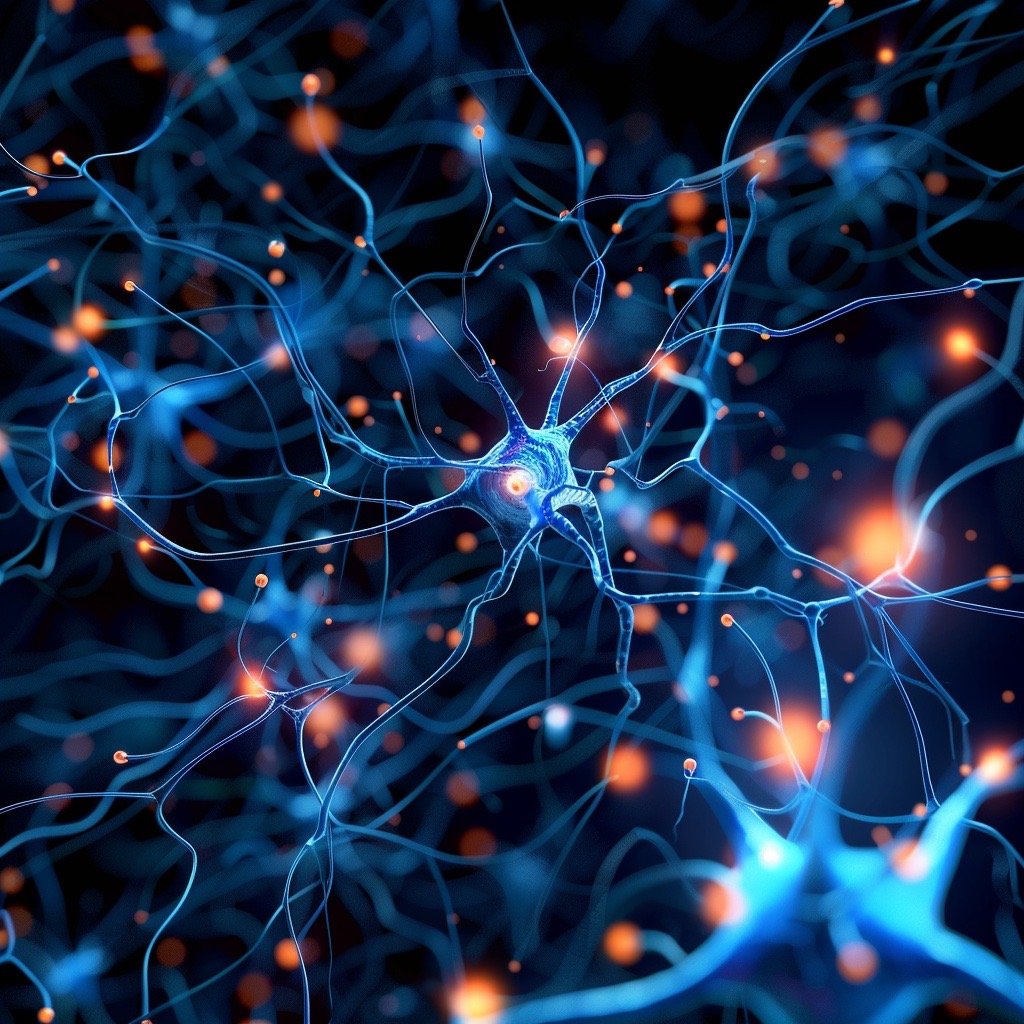
Training Neural Networks with Dropout for Effective Regularization
This article discusses the use of dropout as an effective regularization technique to combat overfitting in neural networks. Overfitting occurs when a model performs well on training data but poorly on unseen data. Dropout works by randomly deactivating a subset of neurons during training, reducing reliance on specific neurons and improving generalization. The article details the steps to implement dropout in TensorFlow, compares neural networks with and without dropout, and highlights the benefits, such as preventing overfitting and enhancing data representation, as well as the drawbacks, like longer training times and optimization complexity. Practical tips for using dropout effectively are also provided.
geeksforgeeks - 2 July 2024 - Article in English
-
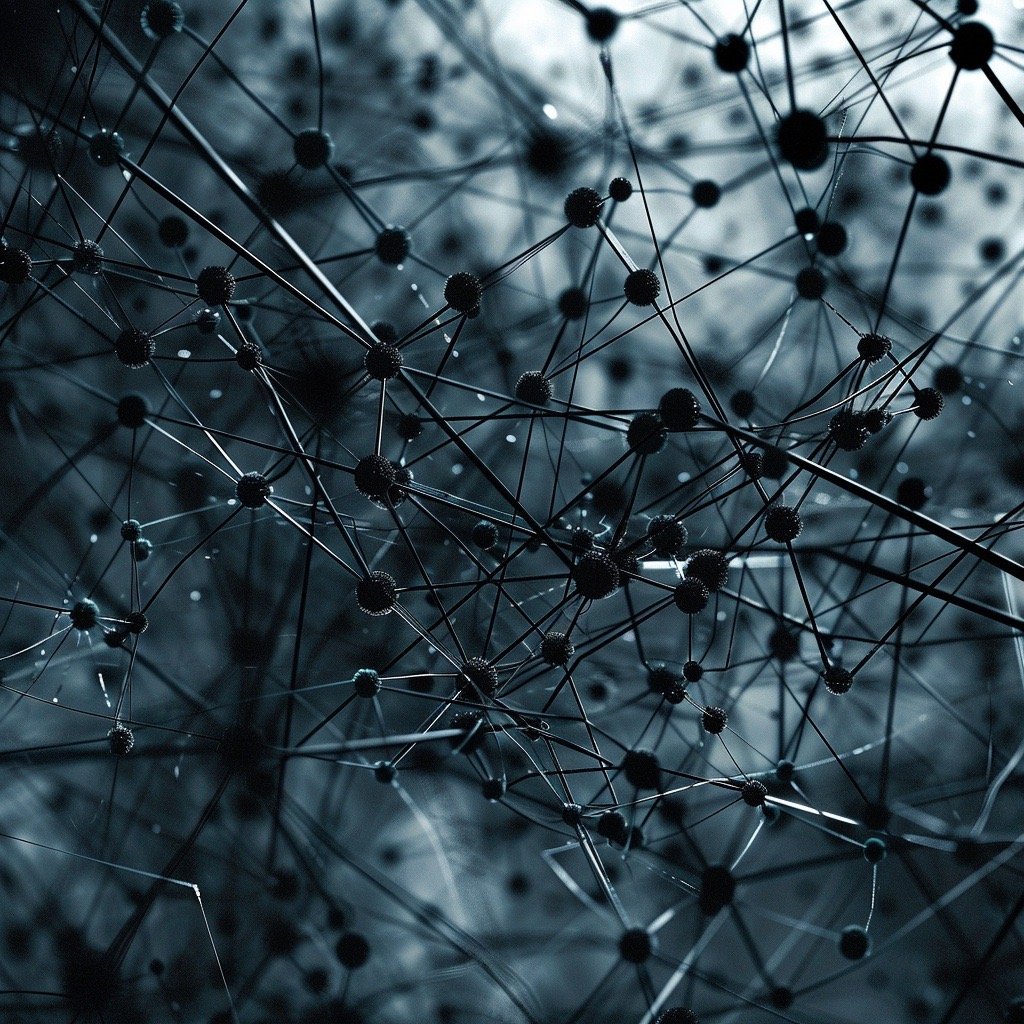
Network properties determine neural network performance
This article presents a mathematical framework to map neural network performance to network characteristics, specifically using a neural capacitance metric derived from the edge dynamics of stochastic gradient descent (SGD) differential equations. This metric predicts model performance based on early training results, improving model selection efficiency. Evaluated on 17 pre-trained ImageNet models across five datasets, this method significantly outperforms state-of-the-art techniques in predicting final model accuracy. The framework aims to make neural networks more interpretable and improve neural architecture design and model selection.
Chunheng Jiang - 8 July 2024 - Article in English
-

Real-time AIoT anomaly detection for industrial diesel generator based an efficient deep learning CNN-LSTM in industry 4.0
The article proposes a real-time AIoT system using a hybrid CNN-LSTM model for anomaly detection in industrial diesel generators. It addresses challenges in fault detection due to the complex, nonstationary nature of diesel generators. The system autonomously classifies anomalies, reducing labor costs and improving efficiency. The study includes data collection from IoT modules, feature selection using Pearson coefficients, and hyperparameter tuning for optimal CNN-LSTM performance. Compared to other deep learning models, the CNN-LSTM approach shows superior accuracy in diagnosing anomalies, enhancing performance in Industry 4.0 contexts.
Thao Nguyen-Da - July 2024 - Article in English
-

Activation Functions
Activation functions are crucial in neural networks, shaping neuron outputs and influencing learning processes and predictions. They regulate signals between layers, impacting model accuracy and generalization. Activation functions include Sigmoid, Tanh, ReLU, Softmax, GLU, and SwiGLU, each with specific use cases, pros, and cons. They introduce non-linearity, allowing networks to handle complex tasks. Proper selection depends on the network architecture, problem type, computational efficiency, and gradient flow. Activation functions play a vital role in minimizing vanishing/exploding gradient problems and ensuring effective learning in deep neural networks.
Deepgram - 24 June 2024 - Article in English
-

Building Custom AI Applications with Microsoft Fabric: Implementing Retrieval Augmented Generation for Enhanced Language Models
The article provides a detailed guide on implementing a Retrieval Augmented Generation (RAG) system using Microsoft Fabric with Azure OpenAI and Azure AI Search. It outlines the steps for setting up Azure services, loading and processing data, creating embeddings, and building a vector index for efficient information retrieval. The guide uses a structured dataset from Carnegie Mellon University to demonstrate chunking text, generating embeddings, and retrieving relevant information to enhance the accuracy and context of responses from large language models like GPT-35-turbo. The process aims to create customized AI solutions for specialized business applications, ensuring precise and tailored outputs.
Amir Jafari - 26 June 2024 - Article in English
-

A new brain-inspired artificial dendritic neural circuit
Researchers at Tsinghua University developed a neuromorphic computational architecture replicating the organization and functions of brain synapses and dendrites. Using multi-gate silicon nanowire transistors with ion-doped sol-gel films, they created a "dendristor" device that mimics dendritic computations, demonstrating nonlinear integration and direction selectivity. This system, inspired by biological neurons, achieves remarkable energy efficiencies by mimicking dendritic morphology and sparse connectivity. The study highlights the importance of neuronal morphology for efficient neuromorphic processing, potentially leading to advanced AI with lower energy consumption.
Ingrid Fadelli - 5 July 2024 - Article in English
-

Machine Learning in Business Process Management: A Systematic Literature Review
The article titled "Machine Learning in Business Process Management: A Systematic Literature Review" by Weinzierl et al. provides an exhaustive review of how machine learning (ML) is used in business process management (BPM). It categorizes BPM tasks under the phases of a process lifecycle and explains how ML supports these tasks, including decision support, process model discovery, and resource allocation. The study highlights commonalities in ML implementations and proposes a research agenda with ten future research directions. The review serves as a valuable resource for researchers and practitioners to identify and apply ML techniques in BPM, aiming to foster further development and integration of ML in business processes.
Sven Weinzierl - 26 May 2024 - Article in English
-

Development and validation of a smartphone-based deep-learning-enabled system to detect middle-ear conditions in otoscopic images
The article reports the development and validation of a smartphone-based deep-learning system to diagnose middle-ear conditions using otoscopic images. The study included over 45,000 otoscopic images from patients aged 5 and older, labeled by an ENT specialist into 11 diagnostic classes. A deep learning model (Inception-v2) was trained and incorporated into a smartphone app called i-Nside. The model achieved high accuracy in distinguishing normal from abnormal images and detecting wax plugs, with sensitivities and specificities above 98% on the validation set. However, the performance varied for other conditions, and further prospective validation is recommended before clinical deployment.
Constance Dubois - 20 June 2024 - Article in English
-

IBM’s InstructLab: A New Era For AI Model Creation And Performance
The article discusses IBM's new AI training method, InstructLab, developed in collaboration with Red Hat. InstructLab, based on research from the MIT-IBM Watson AI Lab, enhances the performance and scalability of large language models (LLMs). It enables open-source developers to collaboratively improve LLMs by contributing new skills and knowledge, leveraging IBM’s Large-scale Alignment for chatBots (LAB) method. This method uses taxonomy-guided synthetic data and a multiphase tuning framework to integrate new capabilities without losing the model's general knowledge. InstructLab aims to simplify model management, reduce costs, and accelerate AI development by enabling community-driven updates.
Paul Smith-Goodson - 17 June 2024 - Article in English
-

RAY: A Powerful Distributed Computing Framework for Machine Learning and AI
The article introduces RAY, an open-source distributed computing framework tailored for AI and ML workloads. It emphasizes RAY's ability to enhance efficiency and scalability, making complex AI tasks more accessible. Key features include scalability, ease of use, support for various workloads, seamless cloud and cluster integration, and efficient resource management. RAY's architecture comprises AI libraries, a core computing library, and clusters. The framework supports diverse AI applications such as large language models, batch inference, model serving, hyperparameter tuning, distributed training, and reinforcement learning, offering a unified, scalable solution for AI development.
Spheron Network - 2 June 2024 - Article in English
-

Surrogate Neural Networks Local Stability for Aircraft Predictive Maintenance
This study evaluates the robustness of neural network (NN) surrogate models in predicting aircraft part stress from external loads for predictive maintenance, highlighting its application in civil aviation. The focus is on verifying NN stability against perturbations using a combination of empirical, incomplete, and complete formal methods, forming a verification pipeline. This approach aims to ensure NN predictions are consistent under minor input changes, essential for safety-critical applications. Experiments on models trained for varying epochs show a significant reduction in verification time, demonstrating the efficiency of combining different verification techniques.
Mélanie Ducoffe - 5 June 2024 - Article in English
-

Graph Neural Networks: An In-Depth Introduction and Practical Applications
Graph Neural Networks (GNNs) are specialized neural networks designed for graph-structured data, unlike traditional neural networks that handle Euclidean data like images or text. GNNs capture node dependencies and relationships through components like node features, edge features, and graph structure. They employ techniques such as message passing, graph convolutional layers, pooling, and attention mechanisms. Popular models include GCNs, GraphSAGE, and attention-based GNNs. GNNs excel in tasks like social network analysis, fraud detection, and traffic prediction but face challenges like computational cost and limited interpretability. Ongoing research aims to enhance their efficiency, scalability, and interpretability.
Kusumsingh - 30 May 2024 - Article in English
-

Machine Learning in Bioinformatics: Key Algorithms and Use Cases
Machine learning (ML) is transforming bioinformatics by analyzing and interpreting complex biological data. Key ML algorithms such as Support Vector Machines (SVM), Random Forest, Neural Networks, K-Nearest Neighbors (KNN), and Hidden Markov Models (HMM) are used in various applications like gene expression analysis, protein classification, genomic prediction, and sequence alignment. Advanced techniques like reinforcement learning, transfer learning, and explainable AI enhance bioinformatics by optimizing experimental designs, integrating multi-omics data, and ensuring model interpretability. Platforms like DiPhyx facilitate efficient bioinformatics research through integrated, cloud-native environments.
Minoo SciTech - 25 May 2024 - Article in English
-

Next-Gen Neuromorphic Researchers Look to Future
In a special episode of the Brains and Machines podcast, Dr. Sunny Bains and Dr. Giulia D’Angelo interview four early-career researchers about their work in neuromorphic engineering. Dr. Kenneth Stewart discusses his research on one-shot learning and meta-learning for spiking neural networks, focusing on surrogate gradient descent. Dr. Laura Kriener explains her work on time-to-first-spike coding and error backpropagation for spiking neural networks on the BrainScaleS-2 platform, highlighting its speed and energy efficiency. The researchers address learning rules, computational primitives, and the benefits and challenges of neuromorphic hardware.
Sunny Bains - 31 May 2024 - Article in English
-

Spike-based dynamic computing with asynchronous sensing-computing neuromorphic chip
This work introduces "Speck," an energy-efficient, asynchronous neuromorphic chip designed for dynamic computing, mimicking the brain's neurons and synapses. Speck consumes minimal power when idle and adjusts energy use based on input variability, addressing the "dynamic imbalance" in spiking neural networks (SNNs). The system integrates an attention-based framework to enhance algorithmic efficiency, leading to real-time processing with power as low as 0.70mW. This design showcases the potential of neuromorphic computing in low-power, high-performance applications, such as mobile devices and the Internet of Things, by leveraging its event-driven, sparse, and dynamic nature.
Man Yao - 25 May 2024 - Article in English
-

Innovative metaheuristic algorithm with comparative analysis of MPPT for 5.5 kW floating photovoltaic system
This paper presents a new metaheuristic algorithm combining Improved Grey Wolf Optimization (IGWO) and BAT algorithms to enhance maximum power point tracking (MPPT) in a 5.5 kW floating photovoltaic (FPV) system under non-uniform irradiance conditions. The proposed Improved Grey Wolf BAT Optimization (IGWBO) addresses issues of delayed convergence and oscillations in IGWO and BAT, improving efficiency and stability. Comparative analysis shows IGWBO-FPV outperforms other methods, increasing annual power generation and reducing CO2 emissions. The study demonstrates the algorithm's effectiveness in dynamic weather conditions, highlighting significant environmental and economic benefits.
Osama Elbaksawi - Mai 2024 - Article in English
-

Kolmogorov-Arnold Networks: A Comprehensive Guide to Neural Network Advancement
Kolmogorov-Arnold Networks (KANs) represent an innovative neural network architecture inspired by the Kolmogorov-Arnold representation theorem. Unlike traditional multi-layer perceptrons (MLPs), KANs use learnable activation functions on edges and replace linear weight matrices with 1D spline functions. This design enhances accuracy, interpretability, and efficiency, combining the strengths of splines and MLPs while addressing their weaknesses. KANs excel in various applications, including scientific research, finance, healthcare, NLP, and computer vision. However, they face challenges like training complexity, interpretability trade-offs, and scalability. Future research aims to refine KAN architectures, improve scalability, and ensure ethical deployment.
Saad Salman - 14 May 2024 - Article in English
-

Optimising Non-Linear Treatment Effects in Pricing and Promotions
This article explores optimizing non-linear treatment effects in pricing using Causal AI, focusing on integrating causal reasoning with machine learning. It covers why non-linear treatment effects are common in pricing due to diminishing returns and introduces the S-Learner model, capable of handling continuous and non-linear treatments. The article demonstrates using the Michaelis-Menten equation to translate S-Learner outputs into response curves and applies non-linear programming, specifically Sequential Least Squares Programming (SLSQP), to optimize pricing budgets. A case study illustrates these concepts with Python code, showing how to maximize promotional efficiency while adapting to budget constraints.
Ryan O'Sullivan - 25 May 2024 - Article in English
-

Physics-informed machine learning for noniterative optimization in geothermal energy recovery
This article introduces a physics-informed machine learning (PIML) framework for optimizing geothermal reservoir management. It combines data processing, forward predictions, and control networks to optimize engineering decisions while considering physics-based constraints. The PIML framework improves temperature prediction stability and achieves efficient optimization, enhancing total energy recovery. It addresses challenges in computational intensity and offers a scalable solution for geothermal energy optimization.
Bicheng Yan - April 2024 - Article in English
-

Building RAG with Open-Source and Custom AI Models
The article "Building RAG with Open-Source and Custom AI Models" by Chaoyu Yang discusses the complexities and strategies involved in creating robust Retrieval-Augmented Generation (RAG) systems using open-source and custom fine-tuned models. It outlines the key stages of a simple RAG system, common production challenges like retrieval performance and response synthesis, and methods to enhance RAG pipelines with domain-specific models and context-aware chunking. The piece also highlights the role of BentoML in managing these complexities, offering solutions for scalable model serving, adaptive batching, and model composition, thus optimizing RAG systems for production deployment.
Chaoyu Yang - 6 Mai 2024 - Article in Engish
-

Power of Ladder Networks: Two Success Stories in Semi-Supervised Learning
Elvin Baghele's article highlights the transformative power of Ladder Networks in semi-supervised learning, emphasizing their impact on image classification and speech recognition. A tech startup faced high costs in labeling satellite images until Ladder Networks allowed them to use a small labeled dataset with a larger unlabeled pool, enhancing accuracy and reducing costs. Similarly, AlphaTech improved its speech recognition models using Ladder Networks, leveraging minimal labeled data for significant accuracy gains. The article explains Ladder Networks' architecture, showcasing their efficiency in tasks like image recognition and providing a Python implementation example. These success stories underscore Ladder Networks' potential in diverse applications, making them a valuable tool in machine learning.
Elvin Baghele - 9 Mai 2024 - Article in English
-

Recent Advances in Intelligent Algorithms for Fault Detection and Diagnosis
The article discusses recent advances in fault detection and diagnosis (FDD) techniques, focusing on model-driven and data-driven approaches. It addresses the challenges of implementing FDD in industrial processes and proposes hybrid methods combining intelligent algorithms with traditional approaches. The study emphasizes the need for real-time, comprehensive FDD strategies, particularly in the era of big data. It explores fault detection techniques, implementation challenges, and methods for intelligent diagnostics, offering insights into improving process efficiency and safety.
Paolo Mercorelli - 22 April 2024 - Article in English
-

Self-Driving Cars With Convolutional Neural Networks (CNN)
The article delves into the role of Convolutional Neural Networks (CNNs) in powering self-driving cars, discussing their importance in perception, localization, prediction, and decision-making processes. It explores how companies like Tesla, Waymo, and Nvidia utilize CNN algorithms for autonomous driving. Additionally, it touches on reinforcement learning and partially observable Markov decision processes (POMDPs) used in training self-driving cars. Overall, it provides insights into the advancements, challenges, and future prospects of self-driving technology.
Nilesh Barla - 22 April 2024 - Articlein English
-

A New Photonic Computer Chip Uses Light to Slash AI Energy Costs
The article delves into the challenges posed by current computer chips in powering complex AI models due to their energy consumption. Taichi, the newly developed chip, leverages light-based processing to overcome these challenges. By employing a chiplet-based approach and combining diffraction and interference properties of light, Taichi achieves remarkable accuracy in AI tasks while consuming significantly less energy compared to traditional chips. The breakthrough holds promise for more efficient and powerful AI systems in the future.
Shelly Fan - 15 April 2024 - Article in English
-

Accelerating industrialization of Machine Learning at BMW Group using the Machine Learning Operations (MLOps) solution
The article discusses BMW Group's collaboration with AWS to implement a Machine Learning Operations (MLOps) solution, aiming to accelerate AI/ML adoption. It outlines the components of the MLOps solution, including a reference architecture, reusable infrastructure modules, ML workflows, and deployment templates. The solution supports AI/ML use cases, improves time-to-market, and integrates BMW-specific requirements for networking, compliance, and security, driving innovation in the automotive industry.
Marc Neumann - 3 April 2024 - Article in English
-

Exploring Convolutional Neural Networks for the Thermal Image Classification of Volcanic Activity
The article explores the use of Convolutional Neural Networks (CNNs) for classifying thermal images of volcanic activity, focusing on Mount Etna. It evaluates the effectiveness of eight pretrained CNN models in accurately classifying various states of volcanic activity captured by ground-based thermal cameras. The study highlights the importance of transfer learning and demonstrates impressive results, with certain models achieving total accuracy rates of approximately 90%. The research contributes to early detection and assessment of eruptive events, aiding in hazard mitigation and risk management.
Giuseppe Nunnari - 13 April 2024 - Article in English
-

Brain topology improved spiking neural network for efficient reinforcement learning of continuous control
The article presents a novel approach called Brain Topology-improved Spiking Neural Network (BT-SNN) for efficient reinforcement learning. It integrates biological brain topologies into SNNs and employs an evolutionary learning algorithm for synaptic modifications. By selecting key brain regions and optimizing network topology, the BT-SNN outperforms conventional SNNs and ANNs in RL tasks. This method offers promise for achieving brain-like intelligence with efficiency, robustness, and flexibility, paving the way for future advancements in neuromorphic computing and artificial intelligence.
Yongjian Wang - 16 April 2024 - Article in English
-

How Chain-of-Thought Reasoning Helps Neural Networks Compute
The article discusses how chain-of-thought reasoning, inspired by human problem-solving techniques, has enhanced the computational capabilities of large language models like transformers. Researchers have used computational complexity theory to analyze the limitations and potentials of transformers, revealing insights into their ability to perform step-by-step reasoning. While chain-of-thought reasoning offers promise in solving complex problems, it also poses computational challenges, prompting further exploration into more efficient approaches.
Ben Brubaker - 21 March 2024 - Article in English
-
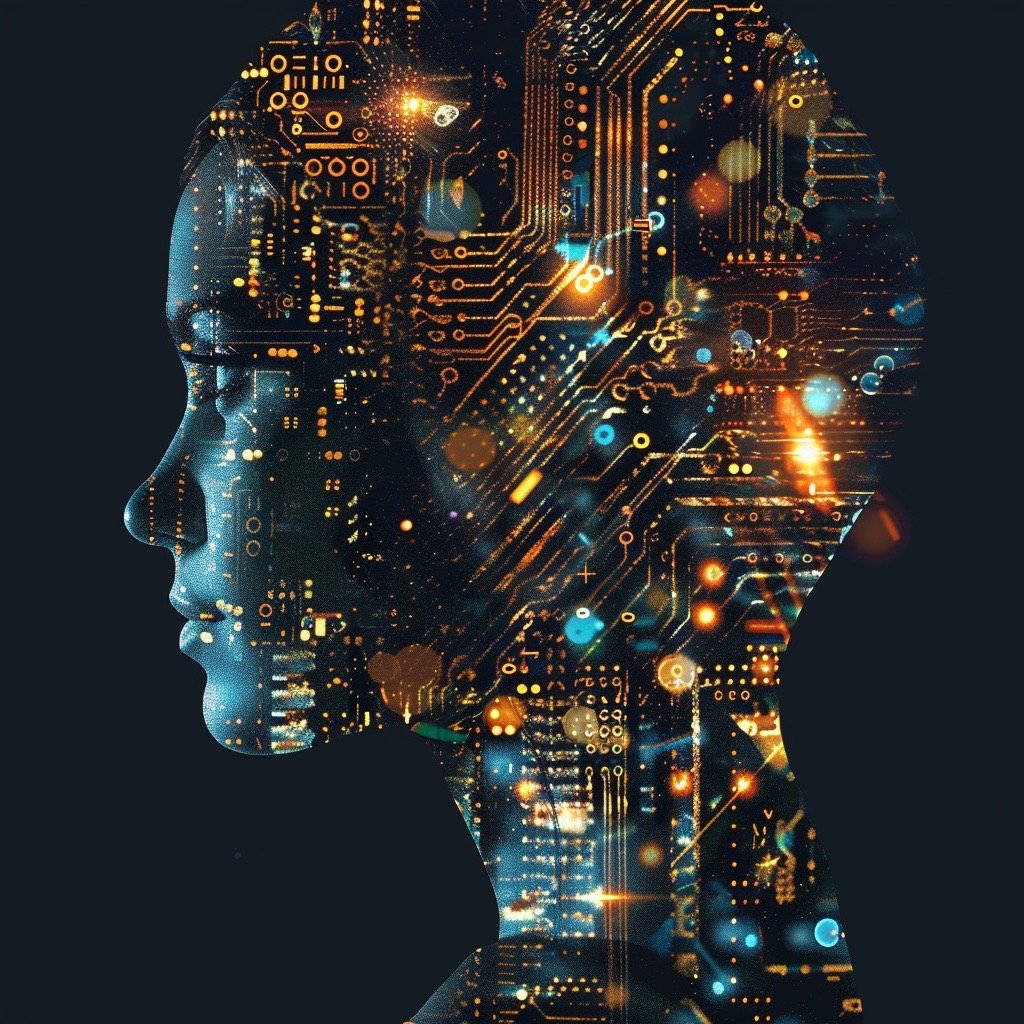
Python Fuzzing for Trustworthy Machine Learning Frameworks
The article discusses the importance of ensuring the security and reliability of machine learning frameworks through fuzzing, a technique used in secure software development. It proposes a dynamic analysis pipeline for Python projects using the Sydr-Fuzz toolset, focusing on fuzzing, corpus minimization, crash triaging, and coverage collection. By applying this pipeline to popular machine learning frameworks like TensorFlow and PyTorch, the authors discovered new bugs and proposed fixes, ultimately enhancing the security and trustworthiness of these frameworks.
Ilya Yegorov - 19 March 2024 - Article in English
-

How AI Models Think: The Key Role of Activation Functions with Code Examples
The article discusses the importance of activation functions in neural networks for AI models, simplifying complex concepts with analogies and code examples. It explains how activation functions control data flow, prevent vanishing gradients, and introduce decision-making processes. Various activation functions like ReLU, Sigmoid, Tanh, and Leaky ReLU are explored, highlighting their roles in improving computational efficiency and addressing the vanishing gradient problem. Mathematically, activation functions transform linear neural network structures into complex systems capable of learning intricate patterns.
Tiago Monteiro - 10 April 2024 - Article in English
-

ViSNet: A general molecular geometry modeling framework for predicting molecular properties and simulating molecular dynamics
The article introduces ViSNet, a novel molecular geometry modeling framework developed by Microsoft, aimed at predicting molecular properties and simulating molecular dynamics. ViSNet enhances interpretability, reduces computing costs, and improves real-world application utility. By leveraging vector-scalar interactive graph neural networks, ViSNet outperforms existing algorithms in predicting molecular properties and demonstrates promise in drug development competitions. Integrated into the PyTorch Geometric Library, ViSNet facilitates accessibility and usability for researchers, paving the way for advancements in computational chemistry and biophysics.
Tong Wang - 29 February 224 - Article in English
-

Scaling AI/ML Infrastructure at Uber
The article discusses Uber's journey in scaling its AI/ML infrastructure over the past years. It highlights the transition from on-premise to cloud infrastructure, optimization of existing infrastructure including GPU assets distribution and network upgrades, and the development of new infrastructure focusing on price-performance evaluations and efficiency improvements. Key metrics such as feasibility, reliability, efficiency, and developer velocity are emphasized throughout the discussion.
Nav Kankani - 29 March 2024 - Article in English
-

Towards interpretable machine learning for observational quantification of soil heavy metal concentrations under environmental constraints
The article discusses the challenges of monitoring soil heavy metal concentrations and the limitations of traditional field surveys in addressing global dispersion of heavy metals. It emphasizes the need for advanced techniques, such as satellite observations and machine learning, to enhance quantification accuracy and inform conservation efforts. The proposed framework integrates spectral data, soil environmental factors (pH, organic carbon), and interpretable ML models to predict metal concentrations, offering insights into feature interactions and model decision-making processes. The study aims to improve understanding of heavy metal distribution and facilitate more effective environmental management strategies.
Yishan Sun - 20 March 2024 - Article in English
-

Deep learning modelling of manufacturing and build variations on multi-stage axial compressors aerodynamics
The article proposes a novel approach using deep learning to analyze the effects of manufacturing variations like tip clearance and surface roughness on gas turbine performance. By training convolutional neural networks (CNNs) with CFD data, the model accurately predicts flow field behavior in real-time. This enables quick assessment of performance impacts during the manufacturing process, potentially saving costs and time associated with physical tests. The methodology is scalable and adaptable to various manufacturing variations, offering a promising solution for industrial applications in gas turbine design and optimization.
Giuseppe Bruni - 13 March 2024 - Article in English
-

How to Leverage KNN Algorithm in Machine Learning?
The article provides a detailed overview of the K Nearest Neighbors (KNN) algorithm in machine learning, focusing on its applications in classification and regression problems. It discusses the importance of feature similarity in KNN, the process of selecting the optimal K value, and the advantages and limitations of the algorithm. Furthermore, it includes a practical demonstration of implementing KNN for diabetes prediction, illustrating its real-world applicability and utility in diverse fields.
Simplilearn - 18 March 2024 - Article in English
-

The most popular neural network styles and how they work
The article provides an overview of various types of neural networks, including feedforward, recurrent, convolutional, transformer networks, and adversarial networks. It explains their structures, functions, and applications in modern AI, covering concepts such as perceptrons, loss functions, gradient descent, and backpropagation. The discussion highlights the importance of understanding neural network variants for software developers and explores their implications for machine learning, consciousness, and the future of technology.
Matthew Tyson - 28 February 2024 - Article in English
-

GADNN: a revolutionary hybrid deep learning neural network for age and sex determination utilizing cone beam computed tomography images of maxillary and frontal sinuses
The article introduces GADNN, a hybrid deep learning neural network, for age and sex determination using cone beam computed tomography (CBCT) images of maxillary and frontal sinuses. By combining deep learning with genetic algorithms, it achieves superior accuracy in sex and age determination compared to traditional statistical and machine learning methods. This innovative approach demonstrates the potential of deep learning in forensic dentistry and contributes to the advancement of DL applications in dentistry and forensic sciences.
Omid Hamidi - 27 February 2024 - Article in English
-

The Learning Path to Neural Network Industrial Application in Distributed Environments
The article discusses the implementation of neural networks in industrial distributed environments to enhance efficiency and cost reduction. It addresses challenges in data collection and processing, emphasizing the importance of standardized features. The paper presents a method for data classification using machine learning algorithms, enabling exception detection and prediction. It highlights the significance of AI and BI in industrial control processes, focusing on bridging legacy systems with modern technologies. The study showcases the application of neural networks for real-time control system data classification in the marine industry, demonstrating the potential for improved decision-making and process optimization.
Lenka Landryová - 28 February 2024 - Article in English
-

Revolutionizing Real-Time Data Processing: The Dawn of Edge AI
The article discusses a breakthrough in edge computing achieved by researchers at Tokyo University of Science. They developed an optical device capable of real-time signal processing across various timescales, addressing the limitations of conventional cloud computing. The device, based on physical reservoir computing, offers efficient and cost-effective processing, as demonstrated by its high classification accuracy on the MNIST dataset. This innovation holds promise for edge computing applications requiring rapid data analysis.
TOKYO UNIVERSITY OF SCIENCE - 23 February 2024 - Article n English
-

Deep neural networks for crack detection inside structures
The article discusses the application of deep neural networks (DNNs) for crack detection in structures, emphasizing seismic-wave-based techniques for plate structures. It builds upon previous work by exploring various network components and introducing a new data preprocessing approach. The study highlights the effectiveness of utilizing robust DNN architectures like DenseNet and leveraging reference wave fields for improved accuracy in detecting small cracks.
Fatahlla Moreh - 23 February 2024 - Article in English
-

An end-to-end machine learning approach with explanation for time series with varying lengths
This article introduces a machine learning approach for predicting quality parameters of plastic parts during production using time series data. It addresses the challenge of variable-length time series in industrial batch processes. The method involves a 1D CNN algorithm with a masking layer and class activation mapping for interpretability. Comparative analysis with the 1NN-DTW algorithm is conducted. The study focuses on sensor signals collected during plastic part production to predict quality parameters that are difficult to measure directly. The proposed approach achieves 83.7% prediction accuracy and reduces training time significantly, contributing to quality monitoring in industrial settings.
Manuel Schneider - 19 February 2024 - Aricle in English
-

ANN isn’t very useful!
The article explores the potential and challenges of Artificial Neural Networks (ANNs) across various fields like medicine, finance, and autonomous vehicles. It delves into the complexity of designing and implementing ANNs, data requirements, computational demands, security concerns, and benefits such as automation, efficiency improvements, enhanced decision-making, and community support. Overall, it highlights ANNs' transformative impact and the need to navigate challenges for effective utilization and future innovation.
Katy - 1 March 2024 - Article in English
-

5 Steps to Remove Bias From Machine Learning Algorithms
The article delves into the challenge of bias in machine learning algorithms and presents a comprehensive approach to mitigate it effectively. It highlights the fact that despite algorithms being perceived as objective, they can inherit biases present in the data used to train them. To address this issue, the article suggests five crucial steps: prioritizing data diversity, proactively identifying edge cases, ensuring accurate data annotation, understanding model failures, and regularly evaluating the model's performance. By following these steps throughout the AI lifecycle, developers can create more equitable and reliable machine learning models that are less prone to perpetuating biases.
Duncan Curtis - 7 February 2024 - Article in English
-

Gas adsorption meets deep learning: voxelizing the potential energy surface of metal-organic frameworks
The article presents a novel approach to predict gas adsorption properties in metal-organic frameworks (MOFs) using deep learning. Instead of traditional geometric descriptors, the potential energy surface (PES) of MOFs is voxelized and processed by a 3D convolutional neural network (CNN). This approach outperforms conventional methods, requires less training data, and demonstrates transferability to different host-guest systems. The framework offers a generic solution applicable beyond reticular chemistry, with potential for diverse applications in materials science and beyond.
Antonios P. Sarikas -26 January 2024 - Article in English
-

A generative model of memory construction and consolidation
The article introduces a computational model elucidating the intricate processes involved in the construction, consolidation, and distortion of episodic memories. It proposes that hippocampal replay facilitates the training of generative models, enabling the recreation of sensory experiences from latent variables distributed across brain regions. This model accounts for semantic memory, imagination, and schema-based distortions, shedding light on the complex mechanisms underlying memory formation and retrieval. By integrating insights from neuroscience and machine learning, the model provides a comprehensive framework for understanding how memories are formed, consolidated, and recalled, offering valuable insights into the workings of the human mind.
Eleanor Spens & Neil Burgess - 19 January 2024 - Article in English
-

Prediction of surface roughness using deep learning and data augmentation
The article discusses the significance of surface roughness in mechanical product quality and its impact on fatigue strength and wear resistance. It focuses on predicting surface roughness in milling processing using a neural network based on deep learning and data augmentation. The study employs variational modal decomposition (VMD) for feature extraction, adaptive synthetic sampling (ADASYN) for data balancing, and a deep belief network (DBN) as the prediction model. The optimization method involves the sparrow search algorithm based on Tent chaotic mapping. The proposed approach aims to enhance the accuracy and reliability of surface roughness prediction in intelligent CNC machining, contributing to the advancement of quality diagnostics in the machinery manufacturing industry.
Miaoxian Guo - 29 January 2024 - Article in English
-

This AI Paper Explains the Deep Learning’s Revolutionizing Role in Mapping Genotypic Fitness Landscapes
This article discusses the revolutionary role of deep learning in mapping genotypic fitness landscapes, a crucial concept in evolutionary biology. Traditional methods face challenges in assessing the vast array of genotypes for a given protein. The study explores the application of deep learning models, such as multilayer perceptrons and recurrent neural networks, to predict fitness based on experimental data. The findings reveal the effectiveness of these models, explaining over 90% of fitness variance with relatively small training samples. The research signifies a paradigm shift, making fitness landscape studies more scalable and efficient, emphasizing the importance of sampling strategies in optimizing model performance.
Sana Hassan - 28 January 2024 - Article in English
-

What are LLMs, and how are they used in generative AI?
The article delves into the transformative role of Large Language Models (LLMs) in the landscape of generative Artificial Intelligence (AI), highlighting their application in chatbot technologies such as OpenAI's ChatGPT and Google's Bard. It elucidates the fundamental workings of LLMs, their intricate training procedures, and the manifold challenges and opportunities they present. Moreover, it examines pertinent issues encompassing privacy, security, and ethical implications that arise with the proliferation of LLM-based AI systems. Through a comprehensive analysis, the article underscores the pivotal role of LLMs in shaping the future trajectory of AI development and the imperative for responsible governance and oversight in this rapidly evolving domain.
Lucas Mearian - 7 February 2024 - Article in English
-

Chatbots and Large Language Models in Radiology: A Practical Primer for Clinical and Research Applications
The article discusses the impact of machine learning (ML) on mobile app development, highlighting its role in making applications more intelligent and user-friendly. It explores the principles of individualized user experiences, efficient search functionalities, and optimized e-commerce apps through ML. The article emphasizes the increasing popularity of ML apps, their influence on the app development paradigm, and the principles developers should consider. It also mentions the positive impact of ML on businesses, particularly in responding to customer inquiries via mobile devices. Examples of popular ML-powered mobile applications, such as Netflix, Tinder, Snapchat, Oval Money, Google Maps, Dango, and Uber, are provided to illustrate the diverse applications of ML in creating personalized and innovative user experiences.
Rajesh Bhayana - 16 January 2024 - Article in English
-

Gas adsorption meets deep learning: voxelizing the potential energy surface of metal-organic frameworks
The article discusses the application of machine learning, specifically deep learning techniques, in predicting gaseous adsorption properties of metal-organic frameworks (MOFs). The traditional challenges in selecting the best MOF candidates due to their vast combinatorial nature are addressed through a generalized framework. The proposed approach uses the potential energy surface (PES) of MOFs as the sole descriptor, which is voxelized and processed by a 3D convolutional neural network (CNN). This method outperforms conventional models in predicting CO2 uptake, requiring significantly less training data. The approach's transferability is demonstrated by predicting CH4 uptake in covalent organic frameworks (COFs). The article emphasizes the potential of this methodology in various fields beyond reticular chemistry.
Antonios P. Sarikas -26 January 2024 - Article in English
-

Complex Valued Neural Networks might be the future of Deep Learning
The article discusses the potential of Complex Valued Neural Networks (CVNNs) in revolutionizing deep learning and accelerating AI adoption in various fields. It estimates a market size of USD 2.3 billion in the next 3–5 years and USD 13 billion over the next decade. CVNNs are particularly suitable for tasks involving phasic data, such as signal communications, healthcare (medical imaging and ECG), deep fake detection, and acoustic analysis for industrial maintenance. The article delves into the theory behind CVNNs, emphasizing their advantages in terms of raw performance, expressiveness, stability, and generalization. Challenges, risks, and the need for dedicated infrastructure are also discussed. The potential of optical computing platforms for CVNNs is highlighted as a promising avenue for enhanced computational speed and energy efficiency.
Devansh - 18 December 2023 - Article in English
-

Machine learning and topological data analysis identify unique features of human papillae in 3D scans
The article discusses a groundbreaking study that utilizes machine learning and topological data analysis on 3D microscopic scans of human tongue papillae. The research reveals unique geometric and topological features of papillae, which play a crucial role in taste and textural sensation. Machine learning models trained on these features demonstrate an 85% accuracy in classifying papillae types. Notably, the study shows that papillae are distinctive across individuals, allowing for individual identification with 48% accuracy. This discovery opens new avenues for research in food preferences and oral diagnostics, emphasizing the potential use of tongue papillae as a unique identifier.
Rayna Andreeva - 14 December 2023 - Article in English
-
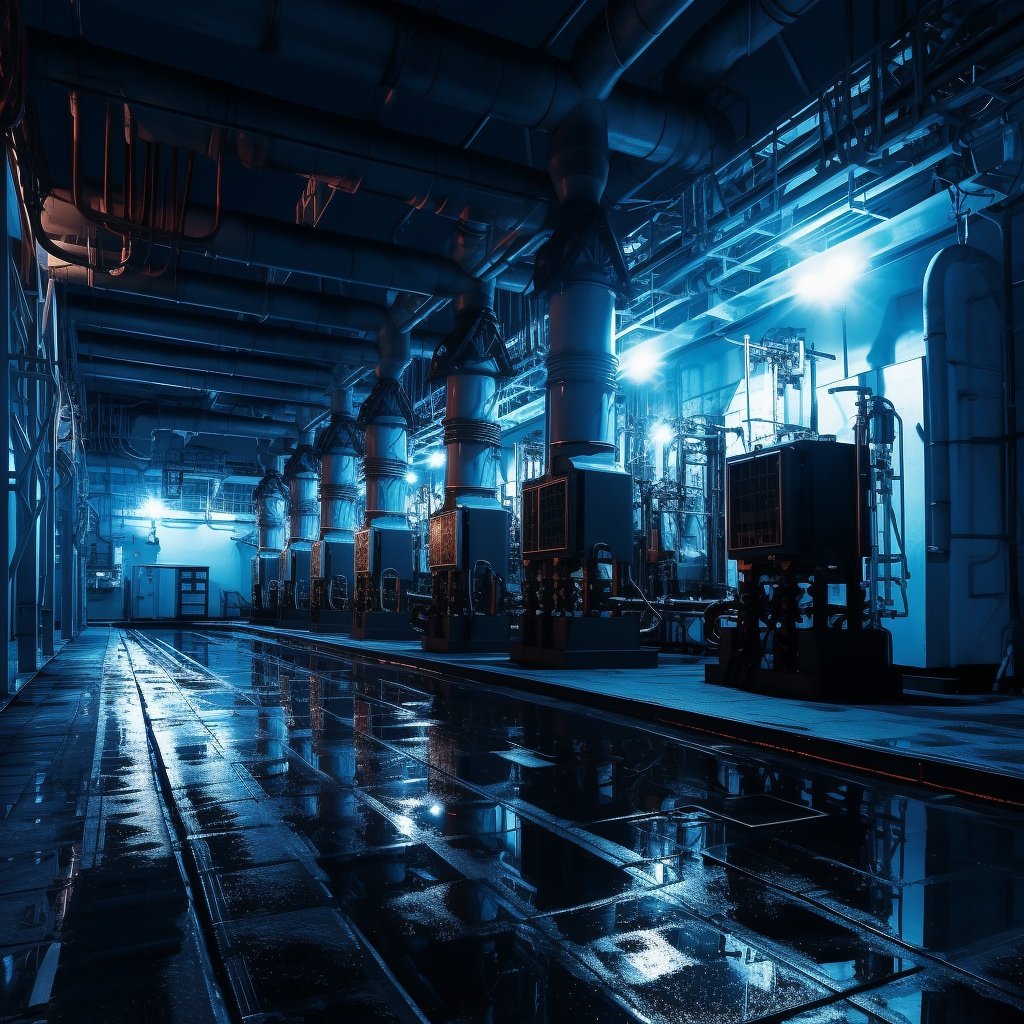
Discernment of transformer oil stray gassing anomalies using machine learning classification techniques
This article explores the use of machine learning (ML) algorithms in assessing dissolved gas analysis (DGA) data for early fault detection in oil-immersed transformers. With transformers being critical for power distribution, faults can lead to widespread disruptions. The proposed multi-classification ML model, applied to 138 transformer oil samples, demonstrates improved diagnostic accuracy compared to conventional methods. Case reports on transformer failure analysis and comparisons with industry standards highlight the model's effectiveness. The study emphasizes the potential of ML in enhancing transformer maintenance and reliability.
M. K. Ngwenyama - 3 January 2024 - Article in English
-

A collaborative realist review of remote measurement technologies for depression in young people
The article discusses the increasing use of remote measurement technologies (RMT), such as smartphones and wearables, for monitoring and managing depression in young people. It highlights the potential benefits of real-time data collection, including objective screening, symptom management, and relapse prevention. The collaborative realist review explores how, why, for whom, and in what contexts RMT may work or not work for depression in young people. The study emphasizes ethical, data protection, and methodological considerations and suggests that RMT could enhance emotional self-awareness, therapeutic relationships, and intervention effectiveness. The findings stress the need for standardized practices and further research to ensure responsible and effective implementation of RMT in mental health care for young individuals.
Annabel E. L. Walsh - 15 January 2024 - Article in English
-

The first use of a photogrammetry drone to estimate population abundance and predict age structure of threatened Sumatran elephants
The article explores the use of unmanned aerial vehicles (UAVs) for wildlife monitoring in the challenging tropical rainforests of Bukit Tigapuluh Landscape (BTL), Indonesia. Traditional surveys can disrupt elusive species and are resource-intensive. The study employs a vision-based sensor on a quadcopter, utilizing hierarchical modeling and deep learning CNN to estimate the population and age structure of Sumatran elephants. The drones successfully observed 96 individuals, estimating a population of 151 elephants in the study area. The research highlights the potential of UAVs for non-invasive, efficient, and innovative large-scale wildlife surveys in complex terrains.
Dede Aulia Rahman - 3 December - Article in English
-

Exploring 4 Popular Machine Learning Algorithms for Industrial Applications
The article explores the application of machine learning algorithms in industrial settings, focusing on four popular models: Linear Regression, k-means++, Neural Networks, and Decision Trees. It introduces supervised and unsupervised machine learning, highlighting their distinctions. Linear Regression is discussed for estimating variable values, while k-means++ addresses clustering challenges. Neural Networks are explored for pattern recognition and optimization, and Decision Trees for classification tasks. Practical examples, such as optimizing energy consumption in a freezer, demonstrate the real-world applicability of these algorithms in industrial applications.
Anthony King Ho - 11 January 2023 - Article in English
-

Brainoware: A breakthrough AI approach using brain organoids for advanced computation
The article discusses "Brainoware," a novel AI hardware approach using brain organoids for advanced computation. Developed by U.S. researchers, Brainoware integrates brain organoids with a reservoir computing framework, demonstrating nonlinear dynamics, fading memory, and unsupervised learning. Brainoware's adaptive living reservoir, formed by functional brain organoids on high-density multielectrode arrays, exhibits promising results in tasks like speech recognition and chaotic equation prediction. Despite challenges, Brainoware highlights the potential of brain-inspired systems for addressing limitations in current AI hardware.
Sushama R. & Chaphalkar - 12 December 2023 - Article in English
-

The past, current, and future of neonatal intensive care units with artificial intelligence: a systematic review
This systematic review examines the impact of machine learning and deep learning in neonatology, specifically in neonatal intensive care units (NICUs). Analyzing 106 research articles from 1996 to 2022, the paper categorizes AI applications in areas such as survival analysis, neuroimaging, and retinopathy of prematurity diagnosis. Emphasizing the transformative role of deep learning, the review suggests a hybrid intelligence approach for integrating AI into NICUs. The paper concludes by highlighting the current status, clinic needs, and potential future directions for AI in neonatal care.
Elif Keles - 27 November 2023 - Article in English
-

Investigating the effect of textural properties on CO2 adsorption in porous carbons via deep neural networks using various training algorithms
The article explores the impact of textural properties, specifically micropores, on carbon dioxide (CO2) adsorption in porous carbons using deep neural networks with various training algorithms. The study reveals the effectiveness of the Levenberg–Marquardt algorithm in achieving high accuracy. It discusses the correlation between textural properties and CO2 adsorption, emphasizing the potential of neural networks for process simulation. The research contributes insights into pressure-dependent CO2 adsorption behavior, emphasizing the importance of understanding factors influencing the adsorption process. The study utilizes extensive data, employing multilayer perceptron neural networks and radial basis function for modeling.
Pardis Mehrmohammadi - 2 December 2023 - Article in English
-

VEDLIoT: Next generation AIoT applications
The VEDLIoT project focuses on developing energy-efficient Deep Learning methods for distributed AIoT applications, emphasizing algorithm optimization and addressing safety and security concerns. The project utilizes a modular and scalable cognitive IoT hardware platform with microserver technology, employing heterogeneous computing and hardware accelerators. It validates its architecture through use cases in Smart Homes, automotive (pedestrian safety), and industrial IoT (motor condition monitoring and arc fault detection). The article details the project's advancements, challenges, and outcomes across these domains, showcasing its contributions to AIoT systems.
Jens Hagemeyer - 4 December 2023 - Article in English
-

Automated Testing in Machine Learning Projects [Best Practices for MLOps]
The article discusses the significance of automated testing in machine learning (ML) projects, emphasizing its role in identifying and preventing bugs throughout the development lifecycle. Automated testing involves using specialized tools to rigorously test software, and its popularity has grown with the rise of Agile development and Continuous Integration. The benefits include reduced developer effort, improved quality, faster release cycles, and easy distribution of tests across multiple devices. The article categorizes various types of automated tests in ML. The piece also introduces tools like Great Expectations, Deepchecks, and Aporia for implementing data and model testing in ML projects, providing a comprehensive guide to best practices for MLOps.
Enes Zvorničanin 15 November 2023 - Article in English
-

Features extraction from multi-spectral remote sensing images based on multi-threshold binarization
This paper introduces a novel approach for feature extraction from multi-spectral remote sensing images, addressing real-time processing challenges. The proposed method employs multi-threshold binarization to create a vector of discriminative features for classification. Comparative analysis with ResNet and Ensemble CNN models reveals the proposed method's superior accuracy for small datasets, maintaining competitive recall scores for larger datasets. Additionally, the approach demonstrates a fivefold reduction in training and inference time compared to ResNet and Ensemble CNN models, emphasizing its efficiency for remote sensing applications. The technique utilizes equidistant local thresholds along with a global threshold for effective multi-spectral image analysis.
Bohdan Rusyn - 11 November 2023 - Article in English
-

Anomalous behavior recognition of underwater creatures using lite 3D full-convolution network
The article presents a real-time approach for recognizing anomalous behavior in underwater creatures, particularly focusing on marine life like tilapia and cobia. The proposed method utilizes a lightweight 3D full-convolution neural network named Lite3D, along with object detection and multitarget tracking. Lite3D stands out for its efficiency, being 50 times smaller in size and 57 times lighter in trainable parameters compared to other models. The research addresses the importance of monitoring marine life behaviors in the context of environmental challenges like global warming and pollution. The system aims to provide a valuable tool for ecological research and conservation efforts, with potential applications in underwater monitoring devices for aquaculture and marine life rehabilitation.
Jung-Hua Wang - 16 November 2023 - Article in English
-

Discovery of structure–property relations for molecules via hypothesis-driven active learning over the chemical space
The article discusses a novel approach that combines physics-informed featurization and hypothesis-driven active learning for predicting material properties, specifically focusing on the formation enthalpy of molecules in the QM9 dataset. This approach aims to approximate generalized physical laws for material behavior, enabling predictions in unexplored chemical spaces with limited available data. It utilizes easily computable features and interpretable mathematical formulations to make meaningful predictions, emphasizing its potential in material design and discovery.
Ayana Ghosh - 20 October 2023 - Article in English
-
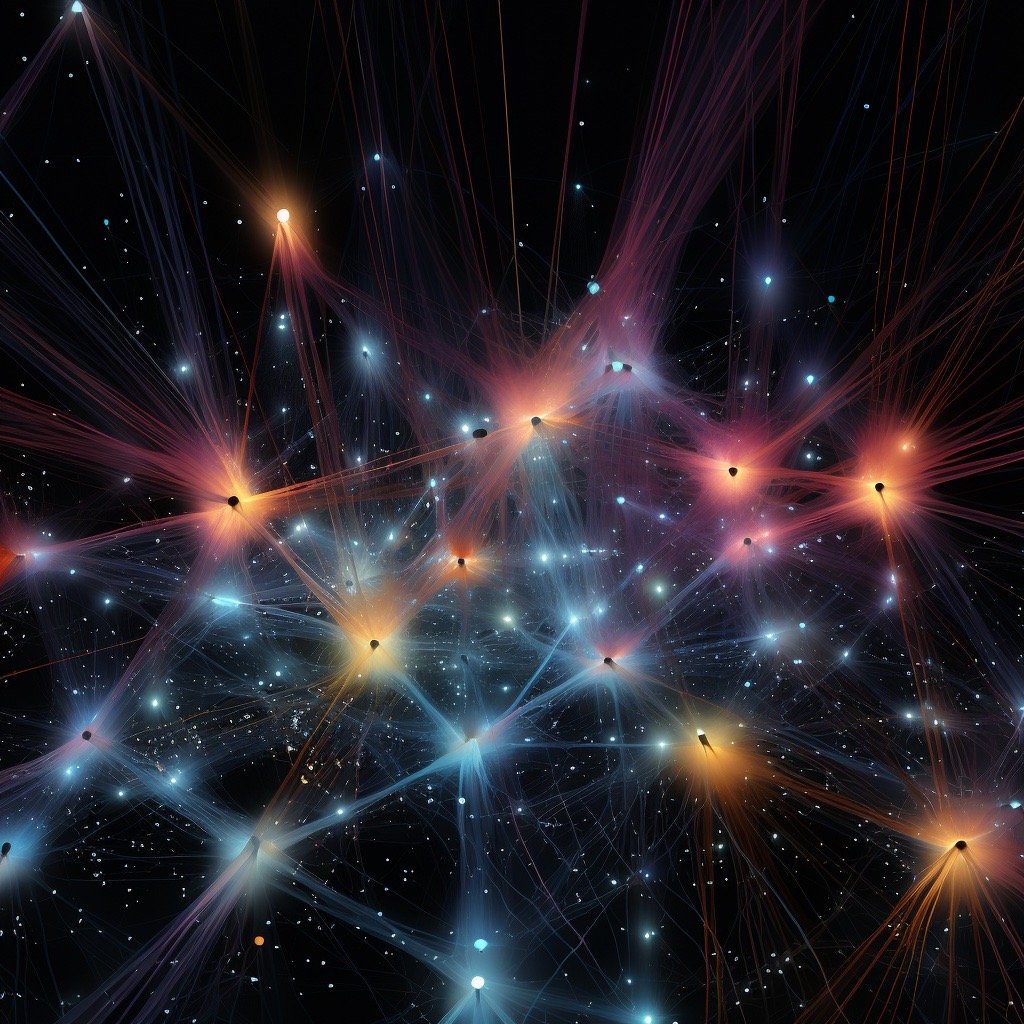
Training large-scale optoelectronic neural networks with dual-neuron optical-artificial learning
The article introduces DANTE, a dual-neuron optical-artificial learning approach for training large-scale optoelectronic neural networks (ONNs). DANTE addresses challenges in diffractive ONNs by integrating optical and artificial neurons. It achieves unprecedented scalability with 150 million neurons on ImageNet, accelerates training speeds significantly on CIFAR-10, and outperforms existing methods. The study demonstrates DANTE's effectiveness through simulation experiments and physical ONN system development, highlighting its potential to advance optical computing for machine learning applications by solving large-scale practical problems.
Xiaoyun Yuan - 4 November 2023 - Article in English
Read more
-

Repurposing existing skeletal spatial structure (SkS) system designs using the Field Information Modeling (FIM) framework for generative decision-support in future construction projects
The article discusses the application of Skeletal Spatial Structure (SkS) systems in construction, emphasizing their modular and sustainable nature. SkS systems, known for their high redundancy and lightweight design, have been historically used for rapid reconstruction and are now employed for aesthetic and free-form structures. The paper explores the advantages of SkS, such as mass customization, reduced weight, and ease of disassembly, along with the challenges of initial investment in training and production facilities.
Reza Maalek - 10 November 2023 - Article in English
-

Machine learning applied to fMRI patterns of brain activation in response to mutilation pictures predicts PTSD symptoms
The article presents a study that uses multivariate pattern recognition methods and fMRI data to predict posttraumatic stress disorder (PTSD) symptoms in individuals exposed to traumatic events. Participants were shown unpleasant pictures in both a "real context" and a "safe context" with safety cues. Machine learning models were trained to predict PTSD symptoms based on brain activation patterns. The study found that the models could predict PTSD symptoms in the real context, particularly in occipito-parietal brain regions, but not in the safe context. This research highlights the potential for machine learning to identify biomarkers for PTSD and supports a dimensional approach to understanding mental health disorders.
Liana Catarina - 5 October 2023 - Article in English
-

Multi-output ensemble deep learning: A framework for simultaneous prediction of multiple electrode material properties
The article introduces a multi-output ensemble deep learning framework for predicting multiple material properties of electrode materials used in batteries. It employs various techniques, including deep neural networks, Bayesian optimization, attention mechanisms, and deep belief networks, to enhance prediction accuracy. The model demonstrates strong performance and could expedite material discovery and battery development. Additionally, the framework's applicability extends to battery management and control throughout their lifespan.
Hanqing Yu - October 2023 - Article in English
-

Process operations: from models and data to digital applications
The article discusses the use of complex digital applications (DAs) in industrial process operations. DAs are software systems that rely on mathematical models, machine learning, and data-driven techniques for decision support and control. The paper addresses the challenges, advancements, and the need for general platforms for code-free development and large-scale deployment of DAs. It also explores the role of DAs in major trends like autonomous plant operation and process plant modularization in the process industries.
Constantinos C. Pantelides - 26 October 2023 - Article in English
-

Adapting physiologically-based pharmacokinetic models for machine learning applications
Both machine learning and physiologically-based pharmacokinetic models are becoming essential components of the drug development process. Integrating the predictive capabilities of physiologically-based pharmacokinetic (PBPK) models within machine learning (ML) pipelines could offer significant benefits in improving the accuracy and scope of drug screening and evaluation procedures.
Sohaib Habiballah & Brad Reisfeld – 11 September 2023 - Article in English
-

Enhanced antibody-antigen structure prediction from molecular docking using AlphaFold2
This study focuses on improving the prediction of antibody-antigen complex structures, which is crucial in biomedical research. Existing methods have limitations, and even advanced models like AlphaFold2 struggle with these complexes due to a lack of specific constraints. The study employs physics-based protein docking methods to create sets of potential structures, some close to the native structure (positives) and others not (negatives). These sets serve as benchmarks for evaluating the accuracy of their predictions and aim to enhance our ability to predict antibody-antigen complex structures in real-world applications.
Francis Gaudreault – 13 September 2023 - Article in English
-

Getting Started with Scikit-learn in 5 Steps
This tutorial delves into Scikit-learn, a widely used Python library for machine learning. It covers essential aspects of the machine learning workflow in five steps. Beginning with installation, it progresses to data preprocessing, emphasizing the need to clean and scale data for model accuracy. Model selection and training are explored, highlighting the importance of choosing the right algorithm for the specific problem. Model evaluation is stressed as a critical step, utilizing metrics like accuracy, precision, and recall. The tutorial culminates with performance enhancement techniques, including hyperparameter tuning and ensemble methods. Throughout, the importance of practical experience and continual learning in the evolving field of machine learning is underscored.
Matthew Mayo – 16 September 2023 - Article in English
-

Inside DSPy: The New Language Model Programming Framework You Need to Know About
The universe of language model programming(LMP) frameworks has been expanding rapidly on the last few months. Frameworks such as LangChain or LlamaIndex have certainly achieved relevant levels of adoption within the LLM community and Microsoft’s Semantic Kernel is boosting an impressive set of capabilities. Recently, a new alternative known as DSPy came into the scene with a unique approach to LMP. DSPy was created by Stanford University researchers with the goal of providing improved abstractions for different LMP tasks. DSPy prioritizes programming over prompting in an attempt to enable the foundation to create more sophisticated LMP apps.
Jesus Rodriguez – 5 Sepember 2023 - Article in English
-

Prediction of DDoS attacks in agriculture 4.0 with the help of prairie dog optimization algorithm with IDSNet
Integrating cutting-edge technology with conventional farming practices has been dubbed “smart agriculture” or “the agricultural internet of things.” Agriculture 4.0, made possible by the merging of Industry 4.0 and Intelligent Agriculture, is the next generation after industrial farming. Agriculture 4.0 introduces several additional risks, but thousands of IoT devices are left vulnerable after deployment. In this paper, we provide an IDS for DDoS attacks that is built on one-dimensional convolutional neural networks (IDSNet).
Ramesh Vatambeti – 16 Septmber 2023 - Article in English
-

Healthcare predictive analytics using machine learning and deep learning techniques: a survey
Healthcare prediction has been a significant factor in saving lives in recent years. In the domain of health care, there is a rapid development of intelligent systems for analyzing complicated data relationships and transforming them into real information for use in the prediction process. Consequently, artificial intelligence is rapidly transforming the healthcare industry, and thus comes the role of systems depending on machine learning and deep learning in the creation of steps that diagnose and predict diseases, whether from clinical data or based on images.
Mohammed Badawy – 29 August 2023 - Article in English
-

RNA contact prediction by data efficient deep learning
On the path to full understanding of the structure-function relationship or even design of RNA, structure prediction would offer an intriguing complement to experimental efforts. Any deep learning on RNA structure, however, is hampered by the sparsity of labeled training data. Utilizing the limited data available, we here focus on predicting spatial adjacencies ("contact maps”) as a proxy for 3D structure. Our model, BARNACLE, combines the utilization of unlabeled data through self-supervised pre-training and efficient use of the sparse labeled data through an XGBoost classifier. BARNACLE shows a considerable improvement over both the established classical baseline and a deep neural network.
Oskar Taubert – 6 September 2023 - Article in English
-

An active learning machine technique based prediction of cardiovascular heart disease from UCI-repository database
Heart disease is a significant global cause of mortality, and predicting it through clinical data analysis poses challenges. Machine learning (ML) has emerged as a valuable tool for diagnosing and predicting heart disease by analyzing healthcare data. Previous studies have extensively employed ML techniques in medical research for heart disease prediction. In this study, eight ML classifiers were utilized to identify crucial features that enhance the accuracy of heart disease prediction. Various combinations of features and well-known classification algorithms were employed to develop the prediction model
Saravanan Srinivasa – 21 August 2023 - Article in English
-

Variance-capturing forward-forward autoencoder (VFFAE): A forward learning neural network for fault detection and isolation of process data
Data-driven models have emerged as popular choices for fault detection and isolation (FDI) in process industries. However, real-time updating of these models due to streaming data requires significant computational resources, is tedious and therefore pauses difficulty in fault detection. To address this problem, in this study, we have developed a novel forward-learning neural network framework that can efficiently update data-driven models in real time for high-frequency data without compromising the accuracy.
Deepak Kumar – August 2023 - Article in English
-

Scaling the Instagram Explore recommendations system
AI plays an important role in what people see on Meta’s platforms. Every day, hundreds of millions of people visit Explore on Instagram to discover something new, making it one of the largest recommendation surfaces on Instagram. To build a large-scale system capable of recommending the most relevant content to people in real time out of billions of available options, we’ve leveraged machine learning (ML) to introduce task specific domain-specific language (DSL) and a multi-stage approach to ranking.
Vladislav Vorotilov, Ilnur Shugaepov – 9 August 2023 - Article in English
-

Bringing the world closer together with a foundational multimodal model for speech translation
The world we live in has never been more interconnected—the global proliferation of the internet, mobile devices, social media, and communication platforms gives people access to more multilingual content than ever before. In such a context, having an on-demand ability to communicate and understand information in any language becomes increasingly important. While such a capability has long been dreamed of in science fiction, AI is on the verge of bringing this vision into technical reality.
Meta.ai - 22 August 2023 - Article in English
-

More metal-organic frameworks, fewer problems: A self-supervised transformer model for property prediction
For decades, metal-organic frameworks (MOFs) have been captivating researchers because of their wide range of applications: gas absorption, water harvesting, energy storage and desalination. Until now, quickly and inexpensively selecting the top performing MOFs for specific tasks has been challenging. Enter MOFormer, a machine learning model that can achieve higher accuracy on prediction tasks than leading models without explicitly relying on 3D atomic structures.
Kaitlyn Landram – 31 July 2023 - Article in English
-

Future Climate Prediction Based on Support Vector Machine Optimization in Tianjin, China
Climate is closely related to human life, food security and ecosystems. Forecasting future climate provides important information for agricultural production, water resources management and so on. In this paper, historical climate data from 1962–2001 was used at three sites in Tianjin Baodi, Tianjin and Tanggu districts as baseline and the model parameters were calibrated by the Long Ashton Research Station Weather Generator (LARS-WG). 2m-temperatures in 2011–2020 were verified under two scenarios, representative concentration pathway (RCP) 4.5 and RCP8.5 in different atmospheric circulation models with optimal minimum 2m-temperatures at the three sites.
Yang Wang - 31 July 2023 - Article in English
-

Application of Graph Neural Networks for Node Classification (on Cora Dataset)
There are structural linkages between the items in many datasets used in different machine learning (ML) applications, and these interactions can be shown as graphs. Analysis of social and communication networks, traffic forecasting, and fraud detection are some of these applications. Graph illustration Building and training models for graph datasets to be used for a range of ML purposes is the goal of learning. This illustration shows a straightforward application of a Graph Neural Network (GNN) model. For the Cora dataset, the model is employed for a node prediction job to identify a paper’s topic based on its words and network of citations.
Tejpal Kumawat – 14 July 2023 - Article in English
-

Research Hotspots and Trends of Deep Learning in Critical Care Medicine: A Bibliometric and Visualized Study
Interest in the application of deep learning (DL) in critical care medicine (CCM) is growing rapidly. However, comprehensive bibliometric research that analyze and measure the global literature is still lacking.The present study aimed to systematically evaluate the research hotspots and trends of DL in CCM worldwide based on the output of publications, cooperative relationships of research, citations, and the co-occurrence of keywords.
Kaichen Zhang + Yihua Fan - 29 July 2023 - Article in English
-

Hardware conversion of convolutional neural networks
AI applications require massive energy consumption, often in the form of server farms or expensive field programmable gate arrays (FPGAs). The challenge lies in increasing computational power while keeping energy consumption and costs low. Now, AI applications are seeing a dramatic shift enabled by powerful Intelligent Edge computing. Compared to traditional firmware-based computation, hardware-based convolutional neural network acceleration is now ushering in a new era of computational performance with its impressive speed and power.
Ole Dreessen – 18 July 2023 - Article in English
-

Continuous estimation of power system inertia using convolutional neural networks
Inertia is a measure of a power system’s capability to counteract frequency disturbances: in conventional power networks, inertia is approximately constant over time, which contributes to network stability. We develop a framework for the continuous estimation of the inertia in an electric power system, exploiting state-of-the-art artificial intelligence techniques. We perform an in-depth investigation based on power spectra analysis and input-output correlations to explain how the artificial neural network operates in this specific realm, thus shedding light on the input features necessary for proper neural-network training.
Daniele Linaro - 24 July 2023 - Article in English
-

How Much Of AI Is Inspired By Biological Neural Networks?
The biological neural network is necessary for human survival. Is there a difference between biological neural networks and artificial neural networks? Do biological neural networks act as inspiration for artificial intelligence? What factors of neural networks are mostly studied?
Irshad Anwar – 12 July 2023 - Article in English
-

Can LNNs Replace Transformers?
In liquid neural networks, the parameters change over time based on the results of a nested set of differential equations, which means it understands new tasks by itself, and thus does not require vast amounts of training. The human brain has approximately 86 billion neurons. And it’s quite a complex task to mimic the human brain by building neural networks such as RNNs, CNNs, or Transformers since scaling up the network to that level is not feasible. This also comes along with the problem of collecting huge amounts of labelled training data.
Mohit Pandey – 11 July 2023 - Article in English
-

Taking the First Steps Toward Enterprise AI
It is clear that AI is being used to power up businesses now more than ever, and companies that don’t use AI risk being outcompeted by those 4who do. The best AI-powered products are fueled by a diverse collection of high-quality data. The most critical and impactful step you can take towards enterprise AI today is ensuring you have a solid data foundation built on the modern data stack with mature operational pipelines, including all your most critical operational data. phData can help with this foundational strategy and platform along with your AI building needs by utilizing our teams of data engineering, analytics, and AI experts.
Grant Henke – 7 June 2023 - Article in English
-

A Novel Explanatory Tabular Neural Network to Predicting Traffic Incident Duration Using Traffic Safety Big Data
Traffic incidents pose substantial hazards to public safety and wellbeing, and accurately estimating their duration is pivotal for efficient resource allocation, emergency response, and traffic management. However, existing research often faces limitations in terms of limited datasets, and struggles to achieve satisfactory results in both prediction accuracy and interpretability. This paper established a novel prediction model of traffic incident duration by utilizing a tabular network-TabNet model, while also investigating its interpretability. The study incorporates various novel aspects.
Huiping Li – 29 June 2023 - Article in English
-

Julia Vs R: Choosing The Right Language For Data Analysis
Delve into the battle of Julia vs R as we explore the nuances of these two prominent languages in the realm of data analysis. Discover their unique strengths, performance capabilities, and ecosystem features that can shape your data-driven endeavors.
Bahniuk Nazar - 25 June 2023 - Article in English
-

AI Consciousness: An Exploration of Possibility, Theoretical Frameworks & Challenges
AI consciousness is a complex and fascinating concept that has captured the interest of researchers, scientists, philosophers, and the public. As AI continues to evolve, the question inevitably arises: Can machines attain a level of consciousness comparable to human beings? With the emergence of Large Language Models (LLMs) and Generative AI, the road to achieving the replication of human consciousness is also becoming possible.
Haziqa Sajid – 26 June 2023 - Article in English
-

Meta releases I-JEPA, a machine learning model that learns high-level abstractions from images
For several years, Meta’s chief AI scientist Yann LeCun has been talking about deep learning systems that can learn world models with little or no help from humans. Now, that vision is slowly coming to fruition as Meta has just released the first version of I-JEPA, a machine learning (ML) model that learns abstract representations of the world through self-supervised learning on images.
Ben Dickson – 15 June 2023 - Article in English
-

Cloudera Image Warehouse – End-to-End Computer Vision Use Cases in Cloudera
Artificial Intelligence (AI), as we all know, is taking the technological world by storm, and it’s no secret that it is drastically changing how businesses are run. Through AI, companies are constantly looking for ways to enhance their operations and stay ahead of the competition in today’s fast-paced and constantly changing market. Computer vision is one of the buzziest fields in AI right now, and it involves enabling machines to interpret and understand visual data from the world around them.
Valerio D.M – 22 June 2023 - Article in English
-

Prediction of heavy metals adsorption by hydrochars and identification of critical factors using machine learning algorithms
Hydrochar has become a popular product for immobilizing heavy metals in water bodies. However, the relationships between the preparation conditions, hydrochar properties, adsorption conditions, heavy metal types, and the maximum adsorption capacity (Qm) of hydrochar are not adequately explored. Four artificial intelligence models were used in this study to predict the Qm of hydrochar and identify the key influencing factors.
Fangzhou Zhao – May 2023 - Article in English
-
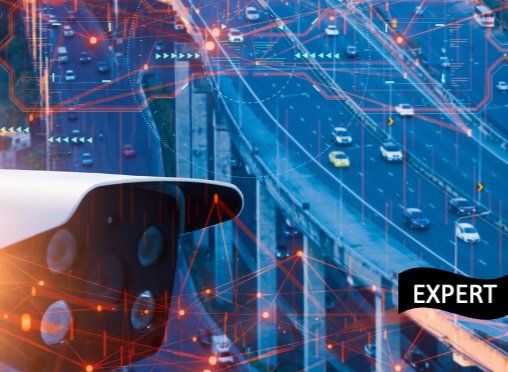
Survision: Artificial Intelligence & LPR - Evolution or Revolution
Today, Artificial intelligence (AI) plays a critical role in License Plate Recognition (LPR) technology. LPR systems use a combination of image processing and machine learning techniques to recognize license plate numbers from images captured by cameras. One of the main challenges in LPR is to perform equally despite external conditions such as lighting, angles, obstructions, and variations. AI-powered LPR systems are trained on large datasets of license plates on many different conditions so they learn to recognize the characters, even if the image is distorted, blurred, or partially obscured; they are also capable of self-improvement and auto-adjust their parameters
Laura Caillot - 8 June 2023 - Article in English
-

The pipeline for the continuous development of artificial intelligence models—Current state of research and practice
Companies struggle to continuously develop and deploy Artificial Intelligence (AI) models to complex production systems due to AI characteristics while assuring quality. To ease the development process, continuous pipelines for AI have become an active research area where consolidated and in-depth analysis regarding the terminology, triggers, tasks, and challenges is required.
Monika Steidl – May 2023 - Article in English
-

Develop Physics-Informed Machine Learning Models with Graph Neural Networks
NVIDIA Modulus is a framework for building, training, and fine-tuning deep learning models for physical systems, otherwise known as physics-informed machine learning (physics-ML) models. Modulus is available as OSS (Apache 2.0 license) to support the growing physics-ML community.
Bhoomi Gadhia – 6 June 2023 - Article in English
-

An overview of graph neural networks (GNNs), types and applications
Graph neural networks (GNNs) have emerged as a powerful framework for analyzing and learning from structured data represented as graphs. GNNs operate directly on graphs, as opposed to conventional neural networks that are created for grid-like input, and they capture the dependencies and relationships between connecting nodes. GNNs are an important area of research due to their adaptability and potential, and they show significant promise for increasing graph-based learning and analysis.
Tayyub Yaqoob – 27 May 2023 - Article in English
-

Deep Q-Networks: Combining Neural Networks and Q-Learning for Superior Results
Deep Q-Networks (DQNs) have emerged as a powerful fusion of neural networks and Q-learning, a popular reinforcement learning technique. This combination has led to remarkable advancements in artificial intelligence (AI) and machine learning, enabling computers to learn and adapt to new environments and tasks with unprecedented efficiency. By integrating the strengths of both neural networks and Q-learning, DQNs have demonstrated superior performance in various applications, from playing video games to controlling robots
André De Bonis – 25 May 2023 - Article in English
-

Study presents large brain-like neural networks for AI
YIn a new study in Nature Machine Intelligence, researchers Bojian Yin and Sander Bohté from the HBP partner Dutch National Research Institute for Mathematics and Computer Science (CWI) demonstrate a significant step towards artificial intelligence that can be used in local devices like smartphones and in VR-like applications, while protecting privacy. They show how brain-like neurons combined with novel learning methods enable training fast and energy-efficient spiking neural networks on a large scale.
Human Brain Project - 8 May 2023 - Article in English
-

How to optimize your business with AIOps for IT operations management?
Artificial intelligence for IT operations, commonly known as AIOps, is a technology that utilizes machine learning (ML) and analytics to automate and improve IT operations management. AIOps provides IT teams with valuable insights into the performance of their systems, allowing them to proactively identify issues and resolve them quickly, ultimately reducing downtime and increasing overall efficiency.
Sudeep Srivastava – 19 May 2023 - Article in English
-

Self-Supervised Learning: Concepts, Examples
Self-supervised learning is a hot topic in the world of data science and machine learning. It is an approach to training machine learning models using unlabeled data, which has recently gained significant traction due to its effectiveness in various applications. Self-supervised learning differs from supervised learning, where models are trained using labeled data, and unsupervised learning, where models are trained using unlabeled data without any pre-defined objectives. Instead, self-supervised learning defines pretext tasks as training models to extract useful features from the data that can be later fine-tuned for specific downstream tasks.
Ajitesh Kumar – 9 May 2023 - Article in English
-

SVSBI: sequence-based virtual screening of biomolecular interactions
Virtual screening (VS) is a critical technique in understanding biomolecular interactions, particularly in drug design and discovery. However, the accuracy of current VS models heavily relies on three-dimensional (3D) structures obtained through molecular docking, which is often unreliable due to the low accuracy. To address this issue, we introduce a sequence-based virtual screening (SVS) as another generation of VS models that utilize advanced natural language processing (NLP) algorithms and optimized deep K-embedding strategies to encode biomolecular interactions without relying on 3D structure-based docking. SVS has the potential to transform current practices in drug discovery and protein engineering.
Li Shen – 18 May 2023 - Article in English
-

Implementing Deep Learning Using fastai — Image Classification
In recent years, Artificial Intelligence (AI) has garnered a lot of attention, especially in the recent months with the launch of ChatGPT. One of the foundational technologies in AI is deep learning. Deep learning is a machine learning technique where you use neural networks to learn the relationships between the features and labels of a dataset.
Wei-Meng Lee – 19 April 2023 - Article in English
-

Brain Games Reveal Clues on How the Mind Works
Using data from the game “Ebb and Flow”, researchers are training machine learning algorithms to mimic the human ability to switch attention between tasks. The findings shed new light on cognitive control and may expand the current understanding of disorders marked by cognitive control deficits, such as bipolar disorder and schizophrenia.
Paul Jaffe - 19 April 2023 - Article in English
-

A New AI Research Integrates Masking into Diffusion Models to Develop Diffusion Masked Autoencoders (DiffMAE)
There has been a long-standing desire to provide visual data in a way that allows for deeper comprehension. Early methods used generative pretraining to set up deep networks for subsequent recognition tasks, including deep belief networks and denoising autoencoders. Given that generative models may generate new samples by roughly simulating the data distribution, it makes sense that, in Feynman’s tradition, such modeling should also eventually reach a semantic grasp of the underlying visual data, which is necessary for recognition tasks.
Aneesh Tickoo - 11 April 2023 - Article in English
-

Neuromorphic Camera Sees the Future
This camera captures the past and present in a single image, making future trajectory predictions much more computationally and energy efficient. As certain technologies develop, the need for dynamic and efficient computer vision systems is growing. These systems use sophisticated algorithms and machine learning techniques to analyze video streams in real time and make predictions about future movements of objects and people.
Nick Bild – 20 April 2023 - Article in English
-

A Real-Time Traffic Sign Recognition Method Using a New Attention-Based Deep Convolutional Neural Network for Smart Vehicles
Artificial Intelligence (AI) in the automotive industry allows car manufacturers to produce intelligent and autonomous vehicles through the integration of AI-powered Advanced Driver Assistance Systems (ADAS) and/or Automated Driving Systems (ADS) such as the Traffic Sign Recognition (TSR) system. Existing TSR solutions focus on some categories of signs they recognise. For this reason, a TSR approach encompassing more road sign categories like Warning, Regulatory, Obligatory, and Priority signs is proposed to build an intelligent and real-time system.
Nesrine Triki - 11 April 2023 - Article in English
-

Reinforcement learning: From board games to protein design
Scientists have successfully applied reinforcement learning to a challenge in molecular biology. The team of researchers developed powerful new protein design software adapted from a strategy proven adept at board games like Chess and Go. In one experiment, proteins made with the new approach were found to be more effective at generating useful antibodies in mice.The findings, suggest that this breakthrough may soon lead to more potent vaccines. More broadly, the approach could lead to a new era in protein design.
Ian Haydon – 20 April 2023 - Article in English
-

What Is Few-Shot Learning?
Few-shot learning is a subfield of machine learning and deep learning that aims to teach AI models how to learn from only a small number of labeled training data. The goal of few-shot learning is to enable models to generalize new, unseen data samples based on a small number of samples we give them during the training process. In general, few-shot learning involves training a model on a set of tasks, each of which consists of a small number of labeled samples. We train the model to learn how to recognize patterns in the data and use this knowledge.
Artem Oppermann - 6 April 2023 - Article in English
-

This AI Paper Introduces SELF-REFINE: A Framework For Improving Initial Outputs From LLMs Through Iterative Feedback And Refinement
Iterative improvement is an essential aspect of human problem solving. Iterative improvement is a process of making a first draft and then improving it through self-feedback. Using feedback and iterative modification, they show in this study that large language models (LLMs) can successfully mimic this cognitive process in humans.
Aneesh Tickoo - 7 April 2023 - Article in English
-

What is a Data pipeline for Machine Learning?
As machine learning technologies continue to advance, the need for high-quality data becomes increasingly important. Data is the lifeblood of computer vision applications, as it serves as the basis for machine learning algorithms to learn and recognize patterns in images or videos. Without high-quality data, computer vision models will not be able to effectively identify objects, recognize faces, or track motion accurately.
TagX – 18 March 2023 - Article in English
-

Accelerating the design of compositionally complex materials via physics-informed artificial intelligence
The chemical space for designing materials is practically infinite. This makes disruptive progress by traditional physics-based modeling alone challenging. Yet, training data for identifying composition–structure–property relations by artificial intelligence are sparse. We discuss opportunities to discover new chemically complex materials by hybrid methods where physics laws are combined with artificial intelligence.
Dierk Raabe - 31 March 2023 - Article in English
-

Biological research and self-driving labs in deep space supported by artificial intelligence
Space biology research aims to understand the fundamental effects of spaceflight on organisms, develop fundamental knowledge to support deep space exploration, and ultimately develop spacecraft and habitat bioengineering to stabilize the ecosystem of plants, crops, microbes, animals, and humans for sustainable life on multiple planets. To achieve these goals, the field leverages experiments, platforms, data, and model organisms from space and analog ground-based studies. As research extends beyond low Earth orbit, experiments and platforms must be maximally automated, lightweight, agile, and intelligent to accelerate knowledge discovery.
Lauren M. Sanders - 23 March 2023 - Article in English
-

An architecture that combines deep neural networks and vector-symbolic models
Researchers at IBM Research Zürich and ETH Zürich have recently created a new architecture that combines two of the most renowned artificial intelligence approaches, namely deep neural networks and vector-symbolic models. Their architecture, presented in Nature Machine Intelligence, could overcome the limitations of both these approaches, solving progressive matrices and other reasoning tasks more effectively.
Ingrid Fadelli - 30 March 2023 - Article in English
-

Meet Neural Functional Networks (NFNs): An AI Framework That Can Process Neural Network Weights While Respecting Their Permutation Symmetries
With the event of enormous language models like ChatGPT, neural networks have change into increasingly popular in natural language processing. The recent success of LLMs is significantly based on the usage of deep neural networks and their capabilities, including the power to process and analyze huge chunks of information efficiently and precisely. With the event of the newest neural network architectures and training methods, their applications of them have set recent benchmarks and have change into extremely powerful.
LAZYAI – 15 MARCH 2023 - Article in English
-

Demystifying Encoder Decoder Architecture & Neural Network
In the field of artificial intelligence and machine learning, the encoder-decoder architecture is a widely used framework for developing neural networks capable of performing natural language processing (NLP) tasks such as language translation, etc. This architecture involves a two-step process in which input data is first encoded into a fixed-length representation, which is then decoded to produce an output corresponding to the desired format. As a data scientist, understanding the encoder-decoder architecture and the underlying principles of neural networks is essential to developing sophisticated models capable of handling complex data sets.
Ajitesh Kumar - March 16, 2023 - Article in English
-

Energy-based analog neural network framework
Over the past decade, a body of work has emerged demonstrating the disruptive potential of neuromorphic systems in a wide range of studies, often combining new machine learning models and nanotechnologies. Yet the scope of the research often remains limited to simple problems, as the process of building, training, and evaluating mixed-signal neural models is slow and laborious. In this paper, we present an open-source framework, called EBANA, that provides a unified, modularized, and extensible infrastructure, similar to conventional machine learning pipelines, for the construction and validation of analog neural networks (ANNs).
Mohamed Watfa - 03 March 2023 - Article in English
-
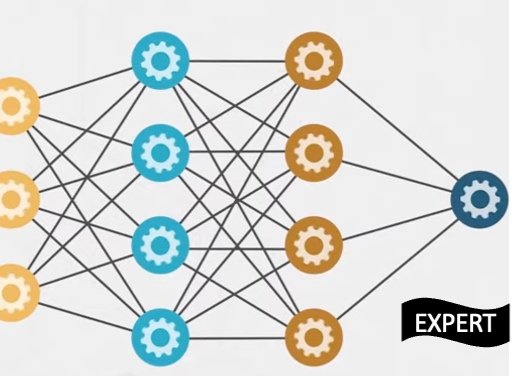
Generative adversarial network (GAN)
A generative adversarial network (GAN) is a machine learning (ML) model in which two neural networks compete with each other by using deep learning methods to become more accurate in their predictions. GANs typically run unsupervised and use a cooperative zero-sum game framework to learn, where one person's gain equals another person's loss. The two neural networks that make up a GAN are referred to as the generator and the discriminator. The generator is a convolutional neural network and the discriminator is a deconvolutional neural network.
Kinza Yasar, Sarah Lewis - March 2023 - Article in English
-

Unlocking the Secrets of Deep Learning with Tensorleap’s Explainability Platform
Deep Learning (DL) advances have cleared the way for intriguing new applications and are influencing the future of Artificial Intelligence (AI) technology. However, a typical concern for DL models is their explainability, as experts commonly agree that Neural Networks (NNs) function as black boxes. We do not precisely know what happens inside, but we know that the given input is somehow processed, and as a result, we obtain something as output. Understanding why a model makes certain predictions or how to improve it can be challenging.This article will introduce and emphasize the importance of NN explainability, provide insights into how to achieve it.
Daniele Lorenzi - 1 March 2023 - Article in English
-

Social media bot detection with deep learning methods: a systematic review
Social bots are automated social media accounts governed by software and controlled by humans at the backend. Some bots have good purposes, such as automatically posting information about news and even to provide help during emergencies. Nevertheless, bots have also been used for malicious purposes, such as for posting fake news or rumour spreading or manipulating political campaigns. There are existing mechanisms that allow for detection and removal of malicious bots automatically.
Kadhim Hayawi - 06 March 2023 - Article in English
-

An MIT study shows how large language models can learn a new task from just a few examples, without the need for any new training data.
MIT researchers found massive neural network models similar to large language models are capable of completing a new task using simple learning algorithms. This is part of a larger effort to expand artificial intelligence (AI) and machine learning (ML) with the rise of GPT and other neural networks, which are showing their potential in helping human workers and changing how information is gathered and processed.
ADAM ZEWE - 21 FEBRUARY 2023 - Article in English
-

Machine learning and DevSecOps: Inside the OctoML/GitLab integration
Machine learning can be a powerful tool in software development, but not if it has to live apart from existing engineering workflows. DevSecOps teams, including MLOps, can now integrate OctoML CLI into GitLab’s CI/CD Pipelines to unify workflows and leverage existing deployment and monitoring infrastructure. This integration makes it easier to catch bugs and model performance degradations early in the ML development cycle. The OctoML Platform is a machine learning model optimization and deployment service powered by octoml.ai.
Sameer Farooqui – 23 February 2023 - Article in English
-

Answering the Abstruse: ML Applications & Algorithms
Machine learning has become a buzzword and is often used interchangeably with artificial intelligence (AI), although machine learning is only a subset of AI, which adds to the confusion about what machine learning is. Machine learning is much more nuanced than just programming, and is not just about robots! For example, machine learning can be used in medical diagnosis to determine whether a tumour is benign or malignant. Machine learning can also be used in city planning, for example to predict the risk of latent fire in a city.
LeAnne Chan - 8 June 2020 - Article in English
-

Cell quantification in digital contrast microscopy images with convolutional neural networks algorithm
High Content Screening (HCS) or High Content Analysis (HCA) equipment was developed with the goal of combining the efficiency of high performance techniques with the ability to collect quantitative data from cellular images of complex biological systems. HCS is a type of automated microscopy capable of acquiring and analyzing fluorescence or light field (digital contrast) images for multiparametric evaluations of microplate-based cell assays. Possible applications of this microscopy include assessments of cell morphology, cell death, nuclear morphology, membrane protein internalization and others.
G. F. Silveira – 14 Fevruary 2023 - Article in English
-

End-to-End MLOps Architecture and Workflow
All the machine learning projects developed for the industrial business problem aim to develop and deploy them into production quickly. Thus, developing an automated ML pipeline becomes a challenge, which is why most ML projects fail to deliver on their expectations. However, the problem of automated ML pipelines can be addressed by bringing the Machine Learning Operations (MLOps) concept. Many industrial ML projects fail to progress from proof of concept to production. Even today, data scientists manually manage the ML pipelines, resulting in many issues during the operation. This article will address the traditional problems through MLOps architecture and workflow in detail.
Sarvagya Agrawal - 9 February 2023 - Article in English
-

A New Artificial Intelligence (AI) Research From The University of Maryland Propose A Shape-Aware Text-Driven Layered Video Editing Tool
Video editing, which involves manipulating and rearranging video clips to achieve desired goals, has been revolutionized by the integration of artificial intelligence (AI) into computing. AI-powered video editing tools enable faster and more efficient post-production processes. Thanks to advances in deep learning algorithms, AI can now automatically perform tasks such as color correction, object tracking and even content creation. Using AI in video editing can significantly reduce the time and effort required to produce high-quality video content, while also providing new creative opportunities.
Daniele Lorenzi - 15 February 2023 - Article in English
-

Simplify your ML Development Cycle with Anyscale and Weights & Biases
In this blog post, we'll review the challenges of deploying ML models in production, and how using Anyscale with Weights & Biases simplifies MLOps with built-in integration that enables scalability, repeatability, and consistency. Anyscale and Weights & Biases minimize refactoring and reduce friction throughout the ML development lifecycle. As organizations continue to expand the use of machine learning (ML) and AI workloads to improve their operations, MLOps (Machine Learning operations) has become a key initiative to ensure the smooth and efficient deployment and scaling of AI/ML workloads in production.
Phi Nguyen - 31 January 2023 - Article in English
-

ChatGPT demystified
You've heard of ChatGPT, but do you know what it is in detail? Why is it in the news so much? And how it poses the biggest threat to Google search? These simplified explanations will give you some background and allow you to form your own opinion to answer these questions. Learning about these powerful technologies is not just a matter of curiosity (although it is fun!). They have exciting, and scary, implications. Being informed about what they are and what they are not can help prepare you for the social changes they may bring.
Ente.io – 31 January 2023 - Article in English
-

AI Inference Software Fundamentals: Getting Started with Optical Character Recognition
AI/ML opens up a world of possibilities for developers to do new and exciting things with their applications. But if you really want to become a true AI developer, you need to understand the basics first. A good place to start is to learn about optical character recognition (OCR). OCR may be a basic machine learning application (it's been around since 1965!), but it's important for several reasons.
Raymond Lo – 19 janvier 2023 - Article in English
-
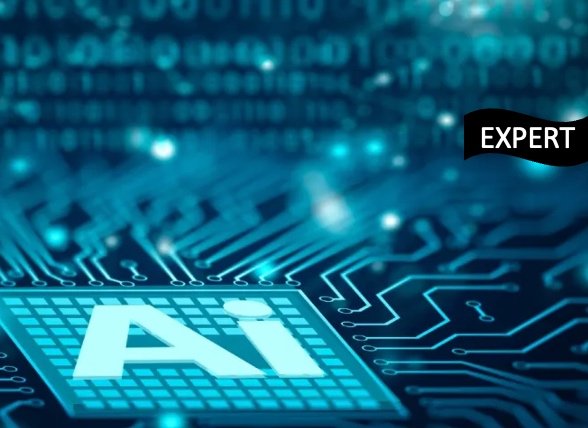
The definitive guide to adversarial machine learning
Machine learning is becoming an important component of many applications we use every day. With so many critical tasks being transferred to machine learning and deep learning models, it is natural to be a little concerned about their security. At the forefront are examples of adversarial attacks, imperceptible changes to input data that manipulate the behaviour of machine learning models. Adversarial attacks can lead to embarrassing or fatal errors. Chen and Hsieh bring together the intuition and science behind the key components of adversarial machine learning.
Ben Dickson - 23 January 2023 - Article in English
-

Special Issue Review: Artificial Intelligence and Machine Learning Applications in Remote Sensing
Remote sensing is used in an increasingly wide range of applications. Artificial intelligence (AI) based models and methodologies are commonly used to enhance the performance of remote sensing technologies. Deep learning (DL) models are the most studied AI-based models due to their high efficiency and performance. In this article, we review nine papers included in this special issue, most of which report on studies based on satellite data and machine learning, reflecting the most widespread trends in remote sensing research.
Ying-Nong Chen - 18 January 2023 - Article in English
-

Commonly used machine learning Algorithms
Machine Learning is a sub-branch of Artificial Intelligence, used for the analysis of data. It learns from the data that is input and predicts the output from the data rather than being explicitly programmed. Machine Learning is among the fastest evolving trends in the IT industry. It has found tremendous use in sectors across industries, with its ability to solve complex problems which humans are not able to solve using traditional techniques. ML is now being used in IT, retail, insurance, government and the military. There is no end to what can be achieved with the right ML algorithm.
Harsha Vardhan Garlapati – 24 January 2023 - Article in English
-

Industrial Solutions For Machine-Learning-Enabled Yield Optimization And Test
Implementing ML in in-line manufacturing testing poses its own set of challenges. ML-based applications challenge traditional test flows and infrastructures, as they require: large amounts of data, a secure and dynamic test execution IT infrastructure... However, some of these properties conflict with traditional test setups, resulting in non-standard test flows and creating additional work that impacts time-to-market and return on investment - and, in particular, slows the success and adoption of ML applications.
Sonny Banwari – 10 January 2023 - Article in English
-

Deep CNN-Based Materials Location and Recognition for Industrial Multi-Crane Visual Sorting System in 5G Network
Smart manufacturing is a challenging and exciting topic in Industry 4.0. Many computer vision (CV) based applications have attracted great interest from researchers and industries worldwide. However, it is difficult to integrate visual recognition algorithms into industrial control systems. In this paper, we develop a multi-grid visual sorting system with cloud-based APIs in a 5G environment, in which character recognition based on deep convolutional neural network (CNN) and dynamic scheduling are designed for materials in smart manufacturing.
Meixia Fu - 12 January 2023 - Article in English
-

Optimize electric automation control using artificial intelligence (AI)
In order to successfully address the problems facing electrical engineering today, a control system based on artificial intelligence technology is designed. The paper presents a model of an electrical automation control system based on an artificial intelligence algorithm. The control parameters are optimised by implementing a control method based on an artificial intelligence algorithm. The use of artificial intelligence algorithms for autonomous electrification control can significantly increase control response time, reduce costs and produce more efficiently.
FarahSami - December 2022 - Article in English
-

Is Data Science For All?
Data science seems to be the buzzword of the decade. The internet is talking about it, companies want it, and your friends and family are aware of how data science is changing our world. Now let's turn to aspiring data science professionals and how a comprehensive Data Science Bootcamp can answer this question. Regardless of position, industry and level of technical knowledge, would you like to understand where you fit in? Is it possible to tap into this "new oil" that everyone is talking about? The title does say "Is data science for everyone?" but I would like to focus on "Is data science for you?"
Anish Mahapatra – 2 January 2023 - Article in English
-

How to Run Stable Diffusion on Your PC to Generate AI Images
The French writer and philosopher Voltaire once said that "originality is nothing but a judicious imitation" and when it comes to the use of artificial intelligence, he is absolutely right. Through a multitude of complex mathematical calculations, powerful supercomputers can be used to analyse billions of images and texts, creating a digital probability map between the two. One of these maps is called stable scatter. And the best part is that you can use it too, with our detailed guide on how to use it.
Nick Evanson - 28 December 2022 - Article in English
-

Performance Evaluation of Deep Learning Algorithm Using High-End Media Processing Board in Real-Time Environment
The artificial intelligence algorithm based on image processing is a critical task, and its implementation requires careful consideration for the selection of the algorithm and processing unit. With the advancement of technology, researchers have developed many algorithms to achieve high accuracy with minimal processing requirements. On the other hand, high-end and cost-effective graphics processing units (GPUs) are now available to handle complex processing tasks. In the proposed work, we tested a convolutional neural network (CNN) based on variants of You Only Look Once (YOLO) on NVIDIA Jetson Xavier to identify the compatibility between the GPU and YOLO models.
Muhammad Asif - 07 December 2022 - Article in English
-

Machine Learning: A Powerful Tool for Bureau Research
Data is the lifeblood of geoscience research. Bureau of Economic Geology researchers gather reams of data from a myriad of sources. Core, cuttings, outcrops, fluids, gases, satellites, drones, seismometers, sensors, scanners, and an array of equipment all provide huge amounts of data for cataloging and analysis. This was once an incredibly daunting task, but, for several years now, Bureau scientists and engineers have utilized machine learning (ML) as an extremely powerful tool to expedite and enhance their research.
Bureau of Economic Geology - 21 December 2022 - Article in English
-

The Year in Computer Science
The metaverse is becoming one of the hottest topics not only in technology, but also in the social and economic spheres. The metaverse is slowly evolving into a consumer virtual world where it is possible to work, learn, shop, be entertained and interact with others in ways never before possible. However, most of these metaverse experiences can only continue to progress with the use of deep learning (DL), as artificial intelligence (AI) and data science will be at the forefront of advancing this technology.
Victor Dey - 22 December 2022 - Article in English
-

Micro-Data Centers Enable Big Data, AI for Edge Computing
Edge computing plays an essential role in the efficient implementation of several embedded applications, such as artificial intelligence (AI), machine learning, deep learning, and the Internet of Things (IoT). Today’s data centers, however, cannot currently meet the requirements of these types of applications. This is where edge micro-data centers (EMDCs) come into play.
Maurizio Di Paolo Emilio – 5 December 202 - Article in English
-

Machine Learning Applications in Microgrid Management System
The advent of renewable energy sources (RES) in the electricity industry has revolutionised the management of these systems due to the need to control their stochastic nature. Deploying RES in the microgrid (MG), as a subset of the power system, is an advantageous way to exploit their innumerable merits in addition to controlling their random nature. The management of the MG can be optimised by using machine learning (ML) techniques applied to applications.
Lilia Tightiz, Joon Yoo – 16 December 2022 - Article in English
-

Autonomous AI-based System Compliant with Expert Consensus for AMD Treatment
New findings suggest the potential of a novel artificial intelligence-based system for autonomous follow-up of patients treated for neovascular age-related macular degeneration (nAMD). The research demonstrated both its safety and compliance with expert consensus as being on par with decisions made in clinical practice, with particularly low rates of false-positive classification of choroidal neovascularization (CNV) activity.
Connor Iapoce – 4 December 2022 - Article in English
-

AI and How It Can be Implemented
Artificial Intelligence is said to be omnipresent nowadays (see an interesting brief history of AI). This means it is becoming fundamentally present in the landscape of technology. Hardly any businesses will remain unaffected by it even in the near future. It may well be wise to consider it at the outset of any entrepreneurial effort. An inclusive AI from the beginning, if it made sense, might just put your business development on a faster trajectory. But how do you implement it?
NazimuddinAR - 10 December 2022 - Article in English
-

Where CISOs rely on AI and machine learning to strengthen cybersecurity
Faced with an onslaught of malware-less attacks that are increasingly hard to identify and stop, CISOs are contending with a threatscape where bad actors innovate faster than security and IT teams can keep up. However, artificial intelligence (AI) and machine learning (ML) are proving effective in strengthening cybersecurity by scaling data analysis volume while increasing response speeds and securing digital transformation projects under construction.
Louis Columbus - 28 November 2022 - Article in English
-

Busy GPUs: Sampling and pipelining method speeds up deep learning on large graphs
Graphs, a potentially large network of nodes connected by edges, can be used to express and interrogate relationships between data, such as social connections, financial transactions, traffic, energy networks and molecular interactions. As researchers collect more data and build these graphical images, they need faster and more efficient methods. This new technique dramatically reduces the time required to train and infer on large datasets to keep pace with rapidly changing data in finance, social networks, and fraud detection in crypto-currencies.
Lauren Hinkel - 29 November 2022 - Article in English
-

Convolutional Neural Network Tutorial (CNN) – Developing An Image Classifier In Python Using TensorFlow
Let us discuss what is Convolutional Neural Network (CNN) and the architecture behind Convolutional Neural Networks – which are designed to address image recognition systems and classification problems. Convolutional Neural Networks have wide applications in image and video recognition, recommendation systems and natural language processing.
Anirudh Rao – 15 November 2022 - Article in English
-

Machine Learning in Financial Forecasting – A Possible Reality or a Relentless Trial and Error?
Companies are moving away from an annual budgeting period to a quarterly and monthly financial forecasting process. However, with the average time to consolidate and submit a complete detailed budget being 4-8 weeks, depending on the size of the company, the introduction of a financial forecasting cycle does not leave much room for flexibility. Therefore, in this new reality, teams need innovative tools and techniques to reduce the time required to complete a financial forecasting cycle. That's where automation, data lineage and Machine Learning (ML) come in.
Gizelda Ekonomi - 22 November 2022 - Article in English
-

Deep Learning Applications in Tumor Pathology
Scientists and developers have designed machine learning- and deep learning-based algorithms to perform various tasks related to tumor pathologies, such as tumor detection, grading with variant stages, diagnostic forecasting, recognition of pathological attributes, pathogenesis, and genomic mutations. Pathologists are interested in artificial intelligence to improve the diagnosis precision impartiality and to minimize the workload
Alhassan Ali Ahmed, Mohamed Abouzid, Elżbieta Kaczmarek - 15 November 2022 - Article in English
-

The Use of Artificial Intelligence in Orthopedics: Applications and Limitations of Machine Learning in Diagnosis and Prediction
Machine Learning (ML) is driving innovation in a vast variety of fields. It is the ability of a machine to identify relationships between data without explicit criteria, emulating a human-like type of learning. Over the last decade, research efforts have also been focused on orthopedics in order to provide help and assistance to surgeons.
Bernardo Innocenti - 24 October 2022 - Article in English
-

MLOPS PLATFORMS OVERVIEW – KEY FEATURES
It has become increasingly difficult for companies to remain competitive as they face multiple challenges, such as data tagging, infrastructure management, model deployment and performance evaluation. This is where MLOps comes in, a method for putting a machine learning solution into production and all the steps required to do so.
Marco – 8 November 2022 - Article in English
-

What Are Neural Networks?
A key element in artificial intelligence, artificial neural networks (ANNs) operate in a manner like the human brain. They mimic the way actual biological neurons function in order to find answers for complex computing questions and challenges. The method include millions of artificial neurons, falls under the umbrella of machine learning. It produces mathematical algorithms that are widely used to recognize patterns and solve complex problems in science and business.
Samuel Greengard - 9 November 2022 - Article in English
-

The Gap Between Deep Learning and Human Cognitive Abilities
Roosh creates ML/AI projects and invests in innovative ideas in the sector. The first lecture of the series was given by Yoshua Bengio, professor at the University of Montreal. During the lecture, the professor discusses his research project, which aims to bridge the gap between modern AI based on deep learning and human intelligence characterised by creativity
Bohdan Ponomar – 31 October 2022 - Article in English
-
Visionary.ai Introduces Video Denoiser for Low-light Conditions
AI-based approaches are used in various applications across industries to monitor and optimise the operation of specific use cases. Real-time image and video processing is one such use case where AI plays an important role in analysing, identifying and extracting the required information from an image. Visionary.ai develops AI-based software algorithms that process image inputs to make them ready for analysis.
Saumitra Jagdale - 26 October 2022 - Article in English
-

Tax digitalisation: Not the future, but the present
Designing a data strategy at the international, national or company level can lead us to a scenario where we can use specific modelling tools and select the most useful technologies for each tax problem. This relationship between taxation and technology is not new. However, the recent increase in the availability of data has allowed a change.
António Queiroz Martins - 5 September 2022 - Article in English
-
What’s Next for AI Regulations in Medical Imaging?
Artificial intelligence (AI) in the healthcare sector is beginning to emerge as it is increasingly used in a variety of applications, from medical imaging to ophthalmology. Remote monitoring and operation of electronic health records (EHRs). The rapid pace of innovation is challenging for regulators (FDA) who are responsible for ensuring that any solution used for medical purposes is effective and does not compromise health or safety.
AJ WATSON – 3 Novembre 2022 - Article in English
-

How Deep Learning Facilitates Automation & Innovation and When to Use It
In today's technological age, deep learning is at the forefront of innovation in the workplace. Studies show that 48% of companies are effectively using deep learning. In this article, we will explore the automation of deep learning, including when to use deep learning instead of machine learning.
Mosaic - 2017 - Article in English
-

What are Radial Basis Functions Neural Networks? Everything You Need to Know
Radial Basis Function (RBF) Networks are a particular type of Artificial Neural Network used for function approximation problems. RBF Networks differ from other neural networks in their three-layer architecture, universal approximation, and faster learning speed. In this article, we'll describe Radial Basis Functions Neural Network, its working, architecture, and use as a non-linear classifier.
Simplilearn – 12 Septembre 2022 - Article in English
-
What is GPT-4 how will advancements in AI help your Business ?
The AI software market is growing at a rate of 21.3% per year. With such an expansion, it’s no wonder businesses of all sizes are looking to get in on the action and see how AI can help them grow. And one of the most talked-about AI applications right now is GPT-4. So, what is GPT-4? And how will it be able to help your business grow? Let’s take a closer look.
Jason Donegan - 21 September 2022 - Article in English
-

A new approach to overcome multi-model forgetting in deep neural networks
Although many deep neural networks capable of performing a variety of tasks have achieved remarkable results, they are usually only good at one particular task because of what is called "catastrophic forgetting". In this article we explain in more detail what this means
Ingrid Fadelli - 11 March 2019 - Article in English
-

What Is a Support Vector Machine? Working, Types, and Examples
A support vector machine (SVM) is defined as a machine learning algorithm for solving complex problems. This article will explain you the basic principles of SVMs, how they work, their types and some concrete examples.
Vijay Kanade – 20 September 2022 - Article in English
-

The Hardware Pushing AI to the Edge
While artificial intelligence and machine learning computations are often performed on a large scale in data centers, the latest processing devices allow for a trend towards integrating AI/ML capability into IoT devices at the network edge. Apart from the two most common applications, speech processing and image recognition, machine learning can of course be applied to data from almost any type of sensor.
Sally Ward-Foxton – 27 Mai 2019 - Article in English
-

Clustering Algorithm Fundamentals and an Implementation in Python
An article to learn all about clustering and its importance in machine learning to understand unlabeled data. You will see what clustering is, the clustering algorithm, how it is used, and its implementation.
Praveen Nellihela – 1 september 2022 - Article in English
-

Machine learning interview preparation— popular topics
Here's an article on important machine learning topics like : Data preprocessing, Data augmentation, Imbalanced data, Precision and recall, Activation functions, Regularization, Loss and cost functions
Maryna Klokova – 29 august 2022 - Article in English
-
Technology helps self-driving cars learn from own 'memories'
Tom Fleischman - 22 June 2022 - Article in English
-
What is AI? Here's everything you need to know about artificial intelligence
Nick Heath - 23 July 2021 -Article in English
-
Artificial Intelligence And Data Privacy – Turning A Risk Into A Benefit
David A. Teich - 10 August 2020 - Article in English
